










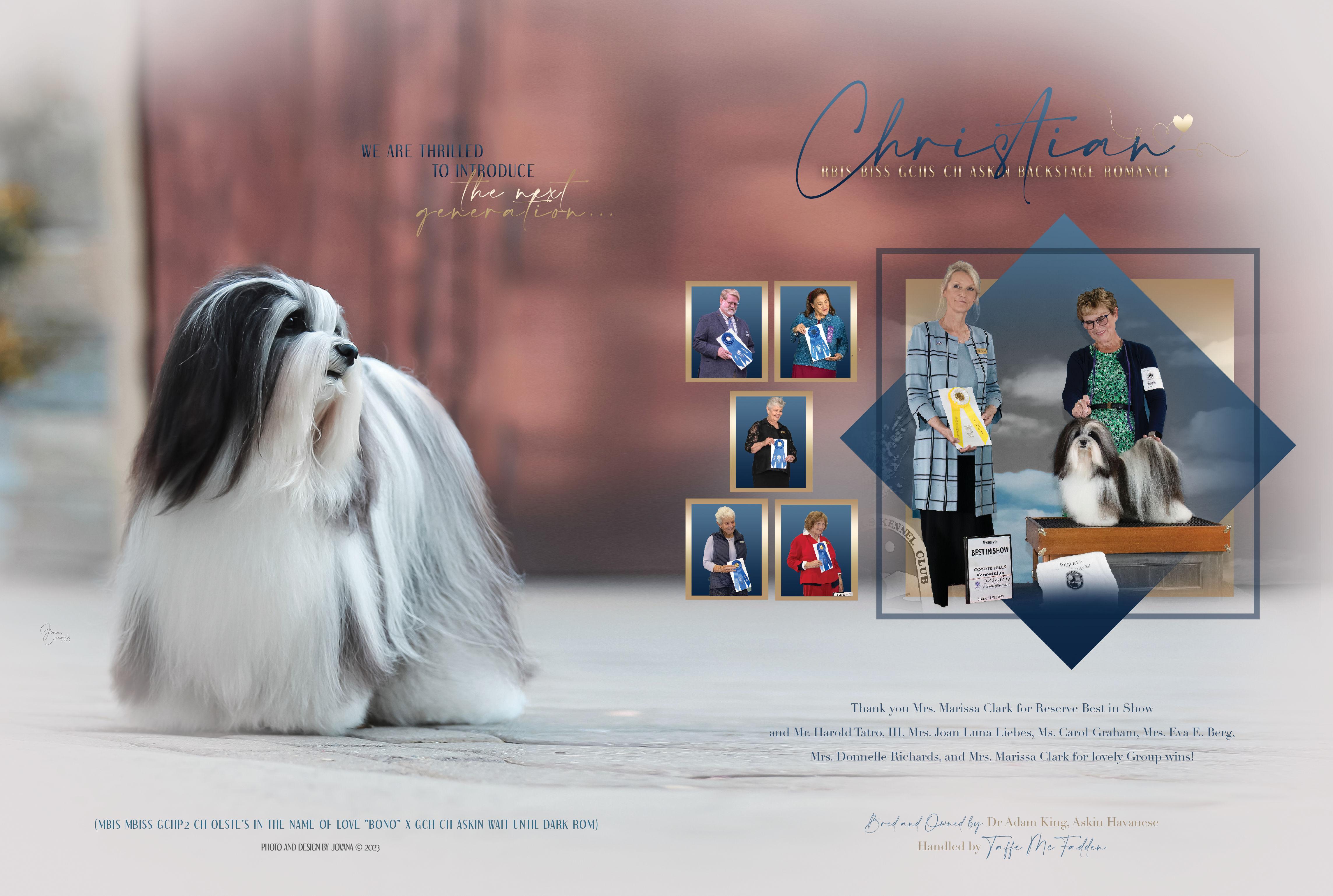

Dear Readers,

Summer is in full swing, and we hope you’re soaking up the joyous warmth and taking time off to recharge. As August lingers, we have an exceptional issue to accompany your summer adventures before we leap into an exciting line-up of dog shows from September onwards.

Delve into insightful interviews with Old English Sheepdog breeders, shedding light on this magnificent breed. Enjoy the riveting report from the Westminster Kennel Club 2023 by Beltran Alonso, giving you the full backstage experience. Meet our promising Junior Handler, Lenore Hedemark, and learn about the world of professional handling from the Baggenstos family.
Don’t forget to take a tour with our travel feature, showcasing the beautiful town of Santa Barbara, California.
Stay tuned, and enjoy the summer bliss while it lasts. We’ll be back in September with more exciting content.
ARE
JOVANA DANILOVICLEE GROGANBONNIE GUGGENHEIM CHRISTIAN RANGEL BISCREATIVE.COM MARY MARSHALL DJORDJE DANILOVIC BELTRAN ALONSO Editor in chiefColaboratorSales Department 352-362-3863 bonnie@bismagazineusa.com Marketing Director Art Department Copy Editor Social Media www.BISmagazineUSA.com · info@BISmagazineUSA.com · www.BIScreative.com
WE
Best in Show
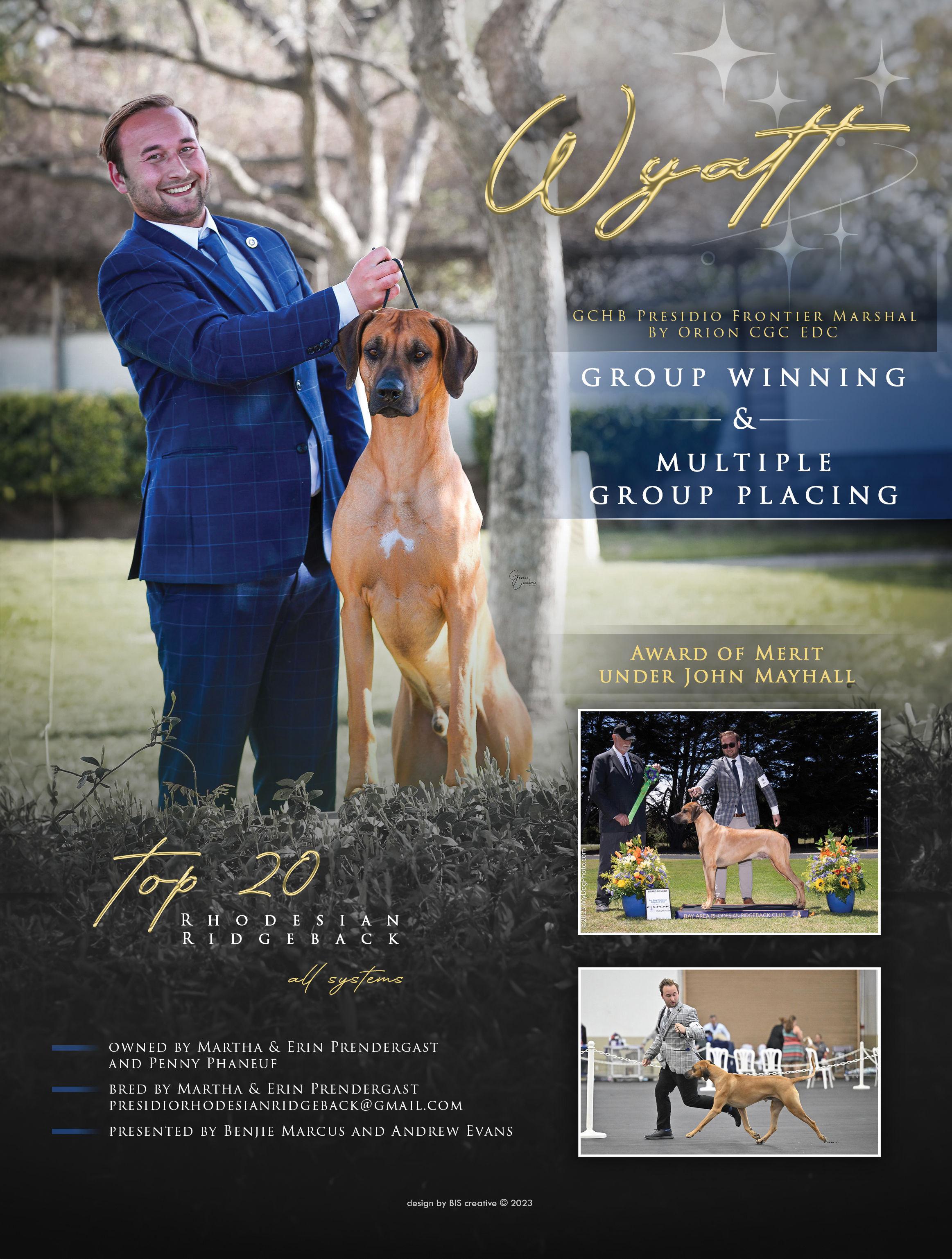
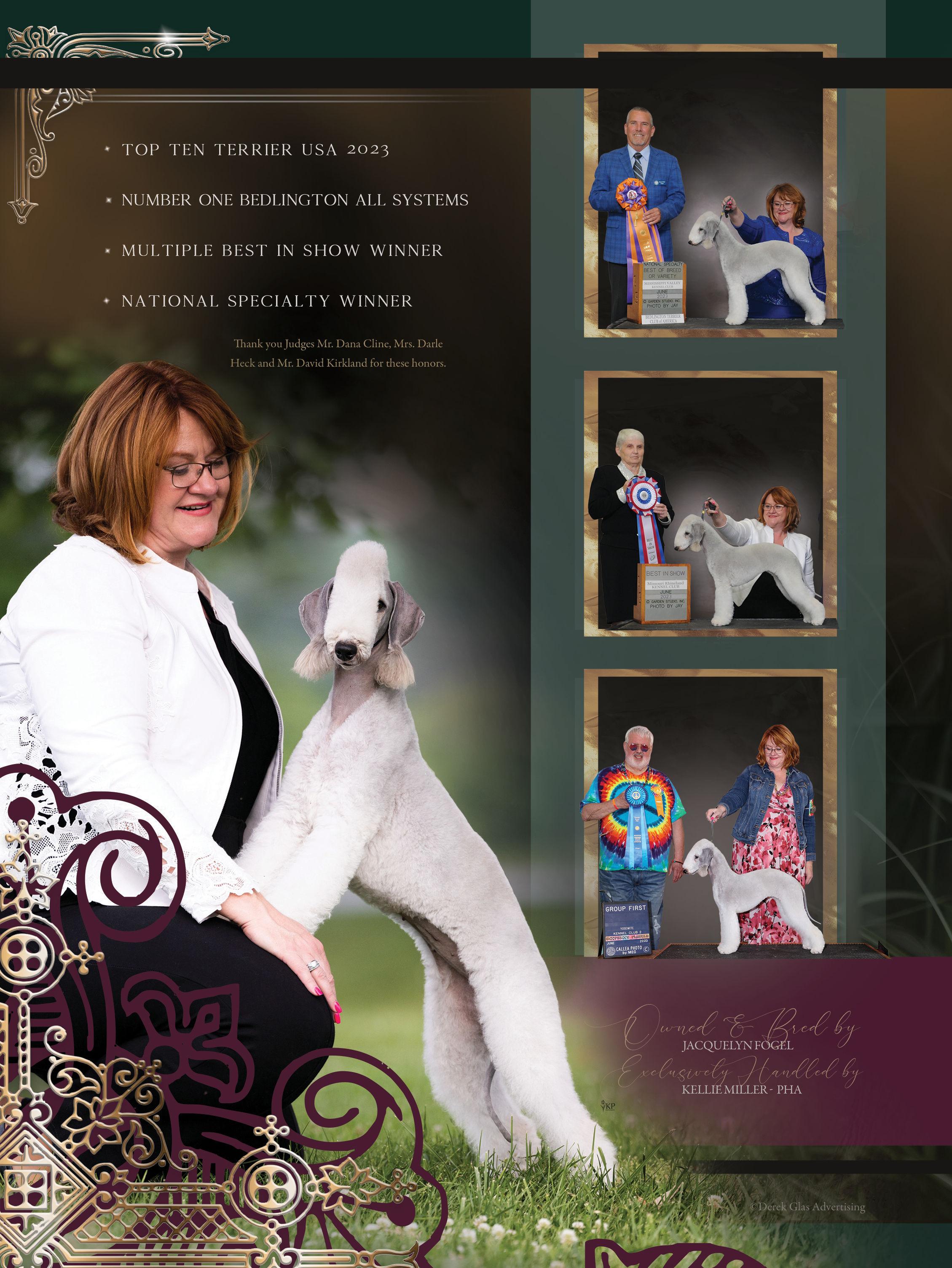
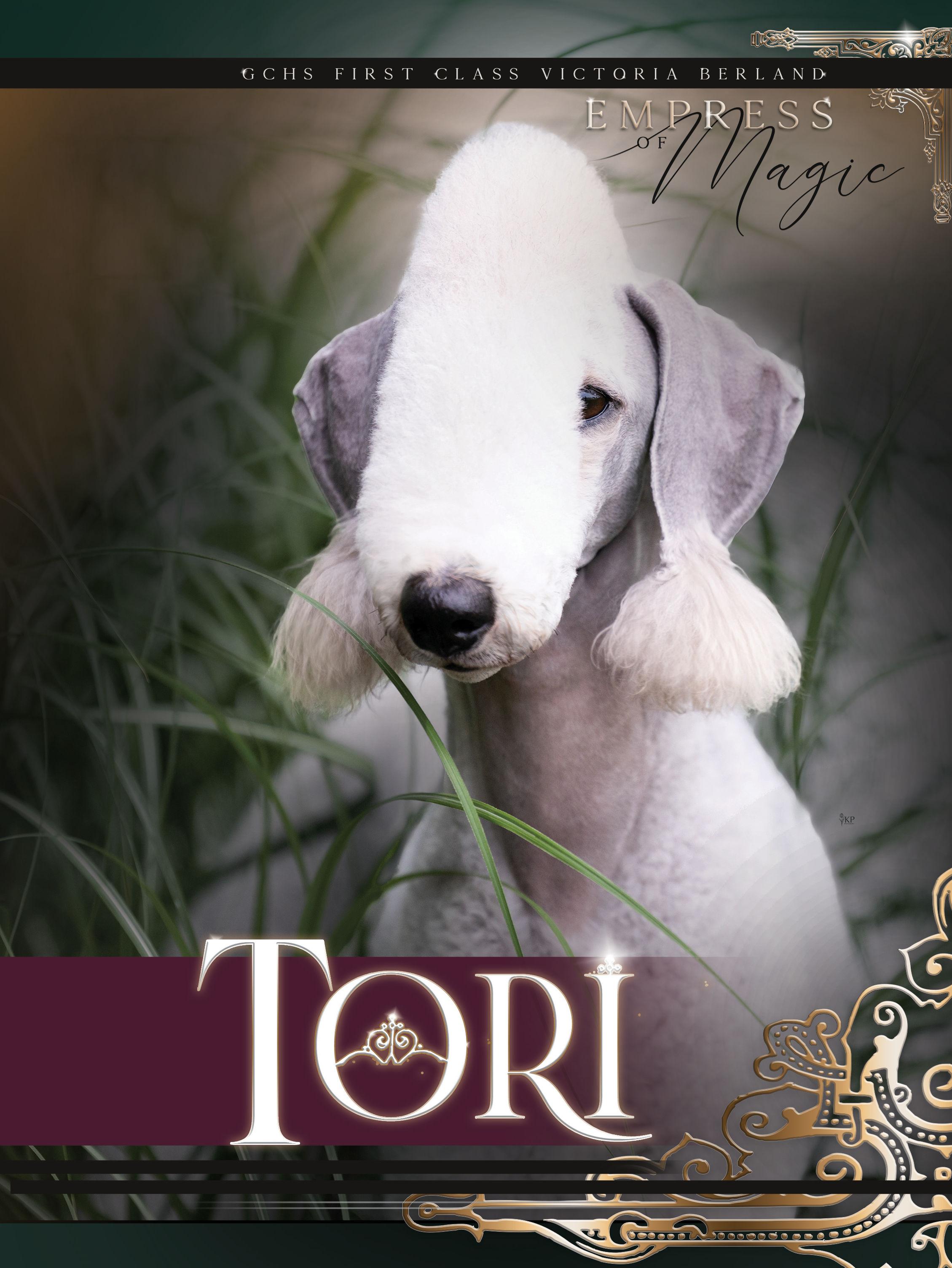






CONTENT 26 Family Baggenstos PROFESSIONAL HANDLER 40 Clackamas K.C. by K. Price RINGSIDE CLICK 52 OLD ENGLISH SHEEPDOG MEET THE BREED 86 WESTMINSTER KC DOG SHOW RINGSIDE CLICK



CONTENT 116 Lenore Hedemark JUNIOR HANDLER 126 St. Louis Cluster RINGSIDE CLICK 134 SANTA BARBARA TRAVEL TIPS







ROWAN & LUKEBagginess
Please share with our readers how you both got involved in the world of pedigreed dogs?
We were both born into it, Luke’s parents bred Afghans and Old English Sheepdogs, Rowan’s parents bred Akitas and Shiba Inu.
What handlers inspired you both in the beginning, and who did you apprentice under?
- Luke: Andy Linton inspired and appreciated under Rick and Dinah Baggenstos.
- Rowan: Andy Linton inspired and apprenticed under Michelle Yeadon for 11 years.

Do your children take part in showing?
Yes, our children have both shown dogs and are involved. Teagan finished her first dog at 3 years old, she has multiple group placements, finished multiple champions, and won multiple best junior showmanship titles. Nolan showed and finished his Japanese Chin Boom and has yet to return to the ring; he says once he is old enough for juniors, he will show Boom in that!
BEST IN SHOW MAGAZINE 29
INTERVIEW
WITH PROFESSIONAL HANDLERS
How do you decide who handles what dog and does this change weekly?
We let the dogs decide, evaluating it out in the beginning to see who shows better for who! We do not normally change weekly but the balancing act of handlers and parents has us switching around a lot lately.

As handlers, are you more excited to win at an allbreed show or a breed specialty show?
That is a tough one, while I would say winning best in shows at an all-breed show is extremely exciting there are some specialties wins that are even more exciting.

The purpose of dog showing is to compare the future breeding stock of one breeder against another-- do you feel your clients have this at the forefront of their mind when they place a dog with you to show? Equally, do you believe that this is the mantra of those that show dogs in general?
Yes, I do believe that this is in the forefront of most of our client’s minds, but the clients we have who are not breeders do not have this as their priority. As for the dog community on a whole it think it is most people’s mantra that are true breeders looking to improve with each litter.
Is there a particular breed or group of dogs you prefer to handle, please give reasons for this choice?
- Luke: Miniature Bull Terriers- they love to show themselves and show off, plus the element of surprise for their clown behavior.
- Rowan: Toy dogs- they are small and easy to travel
INTERVIEW WITH PROFESSIONAL HANDLERS BEST IN SHOW MAGAZINE 30

with, adorable and sweet.
You both have had many exiting wins can you please share some of the most memorable ones with our readers?
- Luke: Our homebred mini bull winning his first best in show, winning the first best in show on a German Pinscher, winning the Mini Bull National then onto reserve best in show at Del Val with our own dog.
- Rowan: Winning best in show and the national in the same year on a Japanese Chin I owned, winning multiple best in shows on a sable Japanese Chin, and when Luke and I win best in show and reserve best in show.


Do you work with assistants, and if so, what do you hope to impart on them during their time with you?
Yes, we have assistants and have multiples over the years. I hope we impart on them correct care and love of the dogs. We also strongly encourage schooling (college) for our assistants, so they have a solid foundation in life.
What hander from the past do you wish you could have apprenticed under?
To name a few Anne Rogers Clark, Robert, and Jane Forsyth, Croky Zroom, John Wilcox.
What dog throughout history do you wish you had the opportunity to handle?
- Luke: Afghan Ch. Triumph of Grandeur.
- Rowan: Akita Ch. Tobe’s Return of the Jedai and Japanese Chin Ch. Langcroft’s Black Tie Affair.
BEST IN SHOW MAGAZINE 32 THE PEKIGNESE · HISTORY IN ENGLAND
INTERVIEW WITH PROFESSIONAL HANDLERS BEST IN SHOW MAGAZINE 32

Do you have time to breed your own dogs? If yes, what breeds to you raise and if no is this something you wish you had more time for in the future?
We breed Miniature Bull Terriers and Japanese Chin. What is you kennel name and how did you decide on it?
Lotus kennels – Rowan picked it as she grew up on an island like “the land of the lotus.”
What made you fall for the breeds you own and breed?
Mini Bulls are so fun; they are constantly making you laugh and up to no good. Japanese Chin are the most loyal, devoted pets that entertain you with their silliness... they are anti-depressants in dog form!
Are either of you involved in any canine clubs?
We are members of Japanese Chin Club of America, Miniature Bull Terrier Club of America, Mastiff Club of America, PNW Japanese Chin Club, PNW Miniature Bull Terrier Club.

How do you both feel regarding the number of shows held weekly around the country?
Where we live in the PNW I do not feel it is an issue as our shows are all so spaced out, a local show for us could be six plus hours away. We do not have multiple options each weekend within a few hours, our total entries are normally around one thousand dogs.

What are some of your favorite shows to show at in the USA?
Mt. Ogden Kennel Club in Logan, Utah, Richland and
BEST IN SHOW MAGAZINE 34
INTERVIEW WITH PROFESSIONAL HANDLERS
Walla Walla Kennel Club in Kennewick WA, and the Olympic Kennel Club in Enumclaw, WA.

Have either of you have shown outside of the USA?
Rowan was born in Canada and started handling in Canada, Luke traveled to many shows in Canada as an assistant and handler. Rowan went to Japan to show dogs as well.
Would you both like to become judges in the future, if so what breeds/groups would you like to concentrate on?
Yes, we both hope to judge in the future. Luke would like to judge everything; Rowan would like to concentrate on toys and working.
You have the power to change dog showing for the better--in your eyes, what would you both change?
Have the focus on bred by, more bred by groups, bred by awards, focus on the breeders that keep our sport alive.
Do you both have any future goals/achievements in the world of dogs?
I would love for two dogs we bred to win best in show and reserve best in show at the same show handled by us!
What is your favorite way to unwind on days off, do you both have hobbies outside of the dog world?
We love spending time together as a family, any chance we get to be with our kids is our favorite. Our daughter is playing travel team softball so that is a full-time hobby for all of us!
What is your favorite vacation destination?
We love going to Yellowstone National Park every year!
Q: Beverage of choice?
- Luke: coffee, water, and blueberry lemonade vodka.
- Rowan: Tea, whiskey.
BEST IN SHOW MAGAZINE 35
INTERVIEW WITH PROFESSIONAL HANDLERS






RINGSIDE click

Clackamas Kennel Club

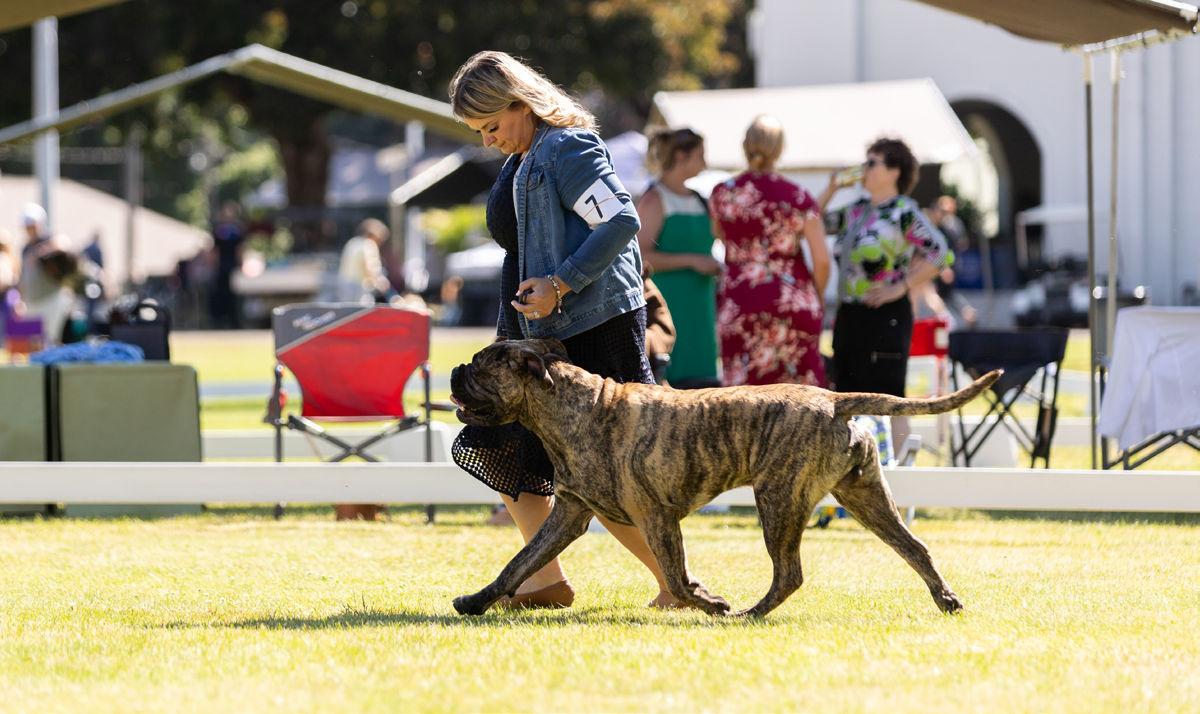

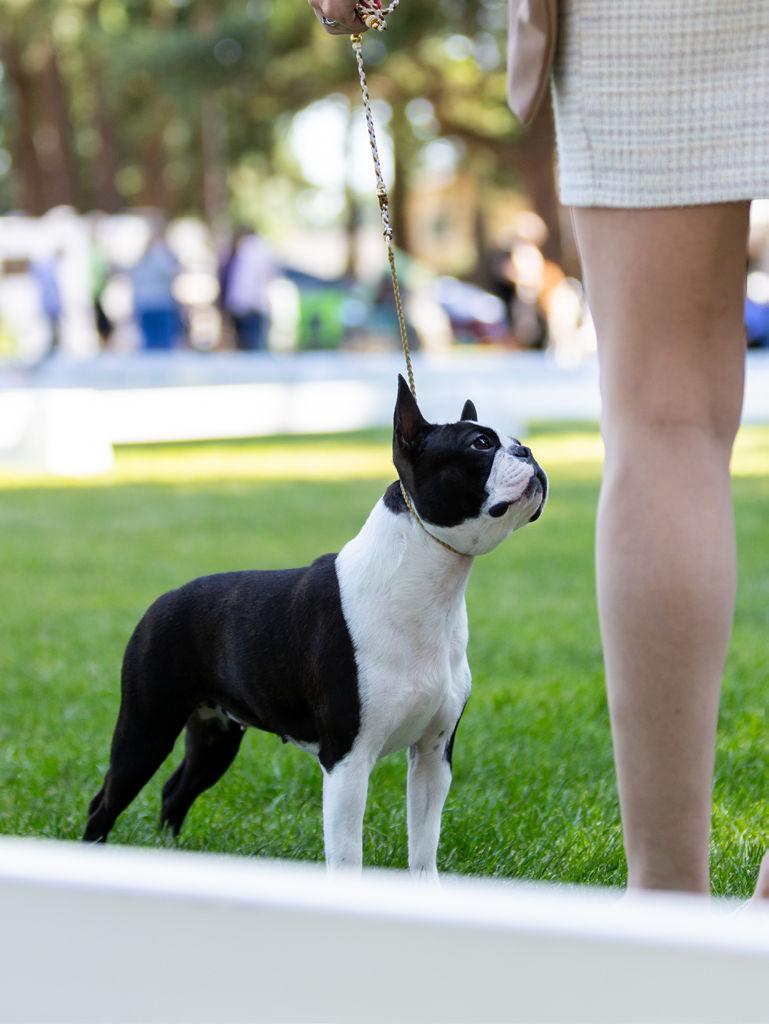
June 22-25 2023
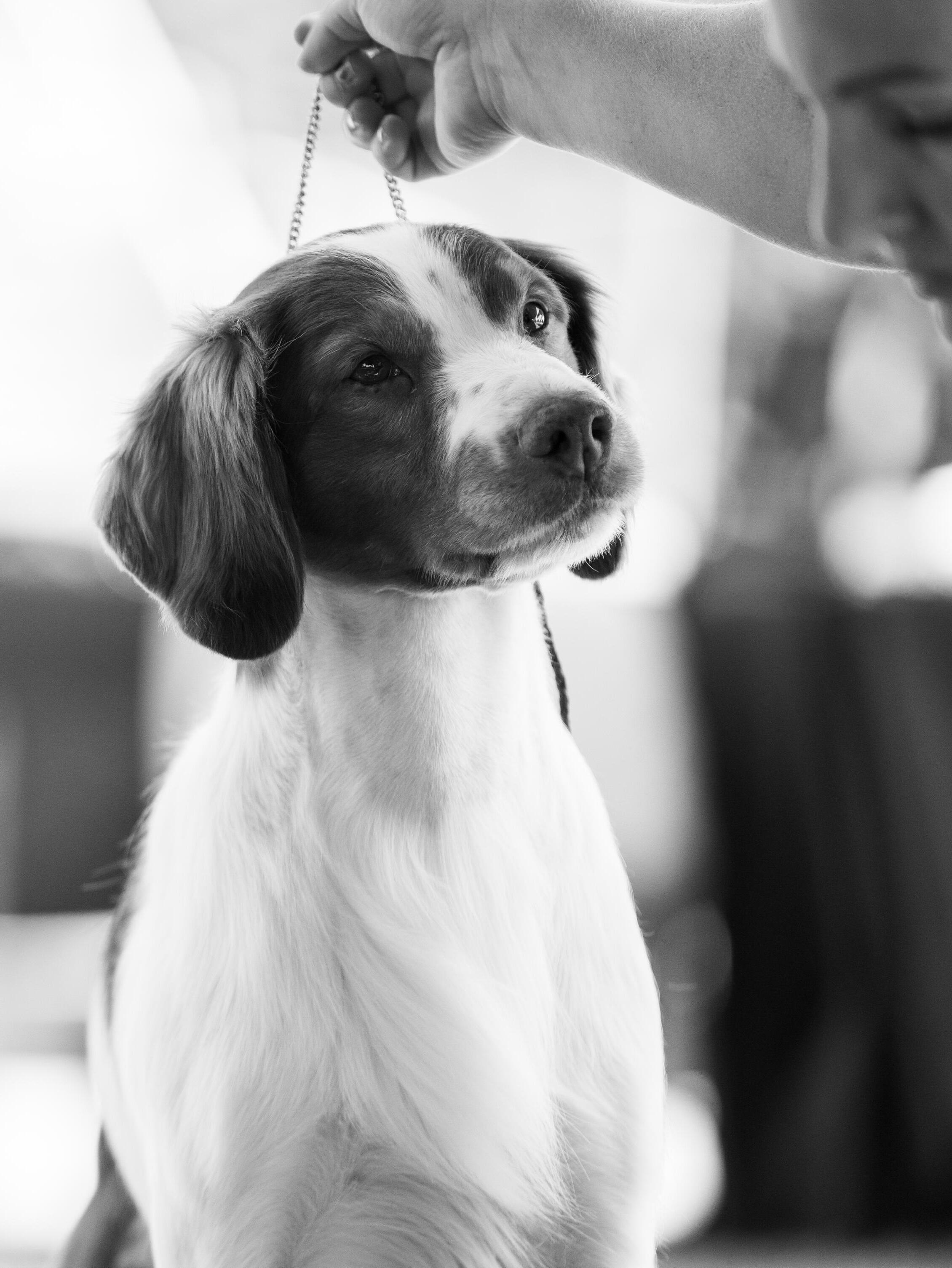

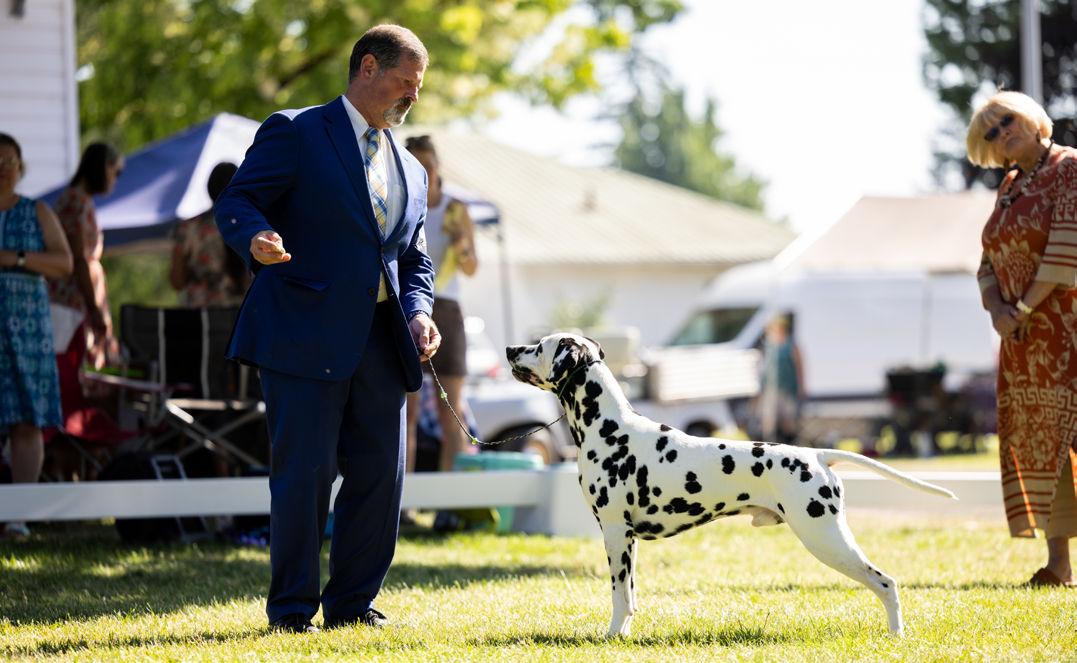

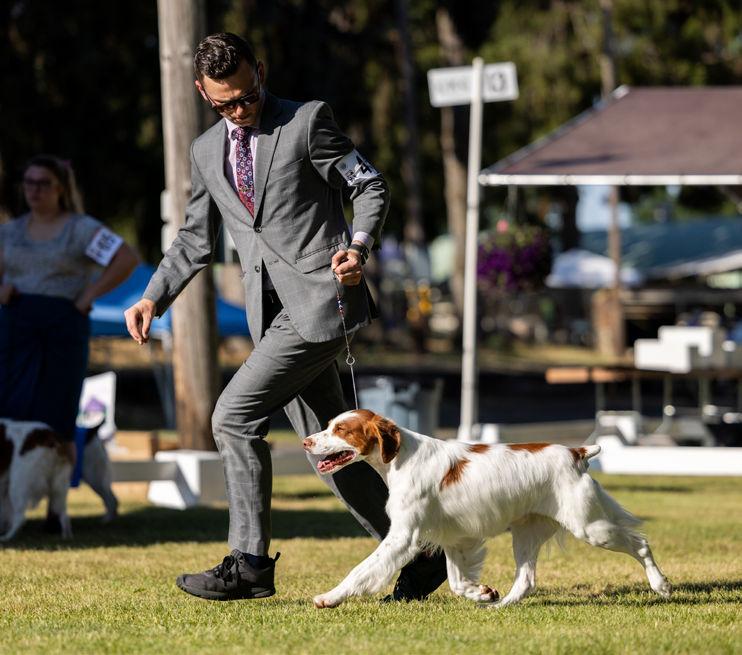


BEST IN SHOW MAGAZINE 44 RINGSIDE CLICK • CLACKAMAS
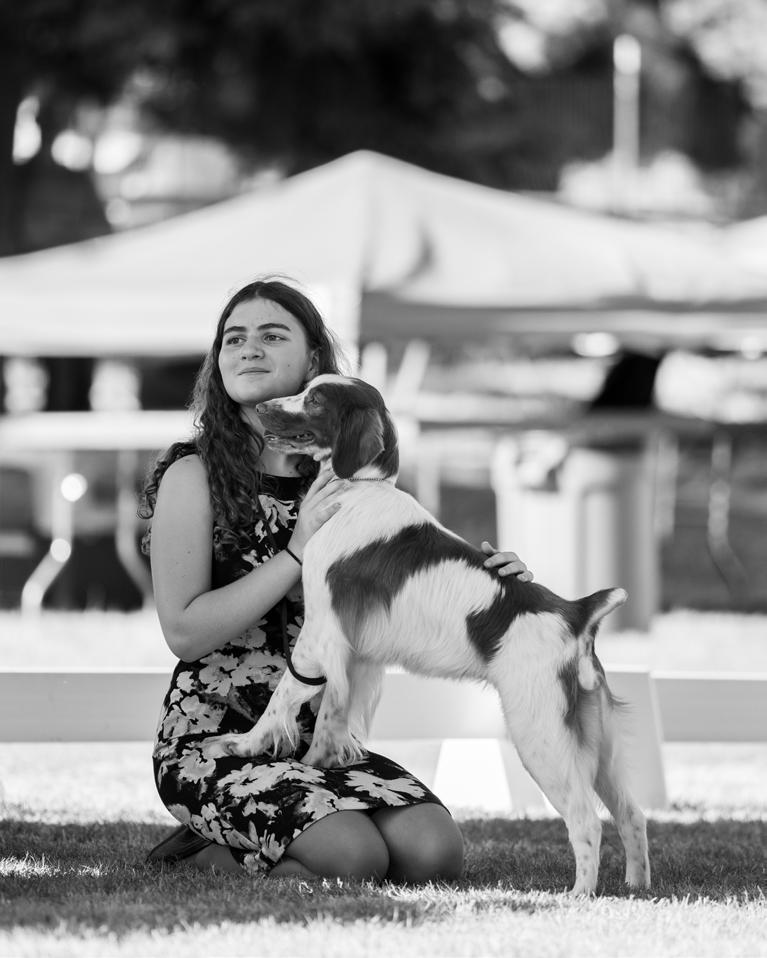
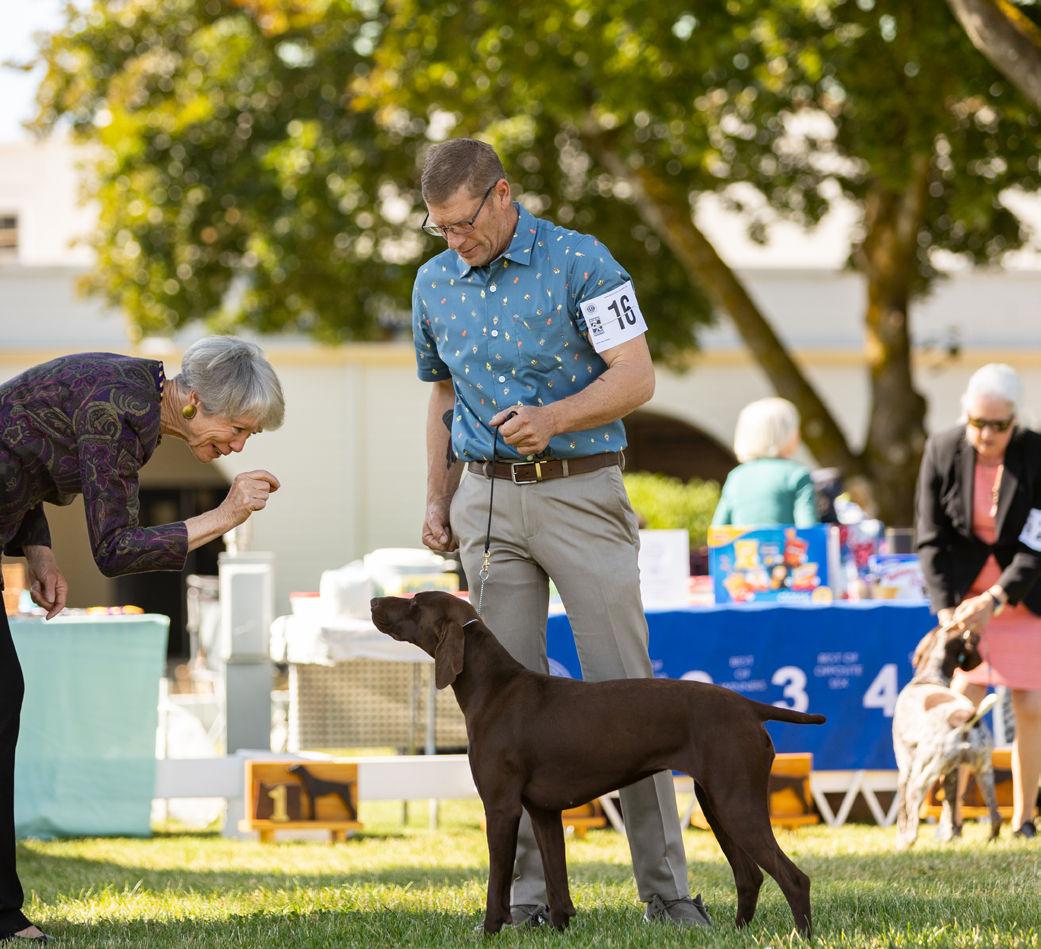
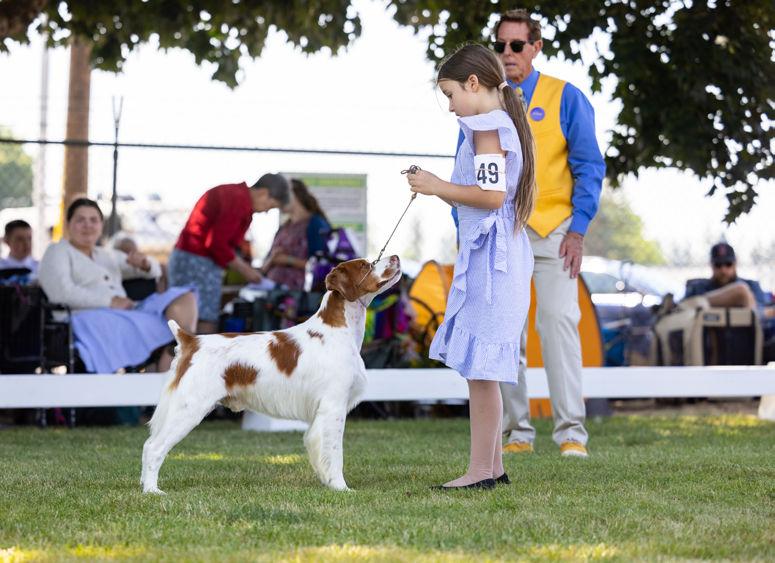


BEST IN SHOW MAGAZINE 45 RINGSIDE CLICK • CLACKAMAS

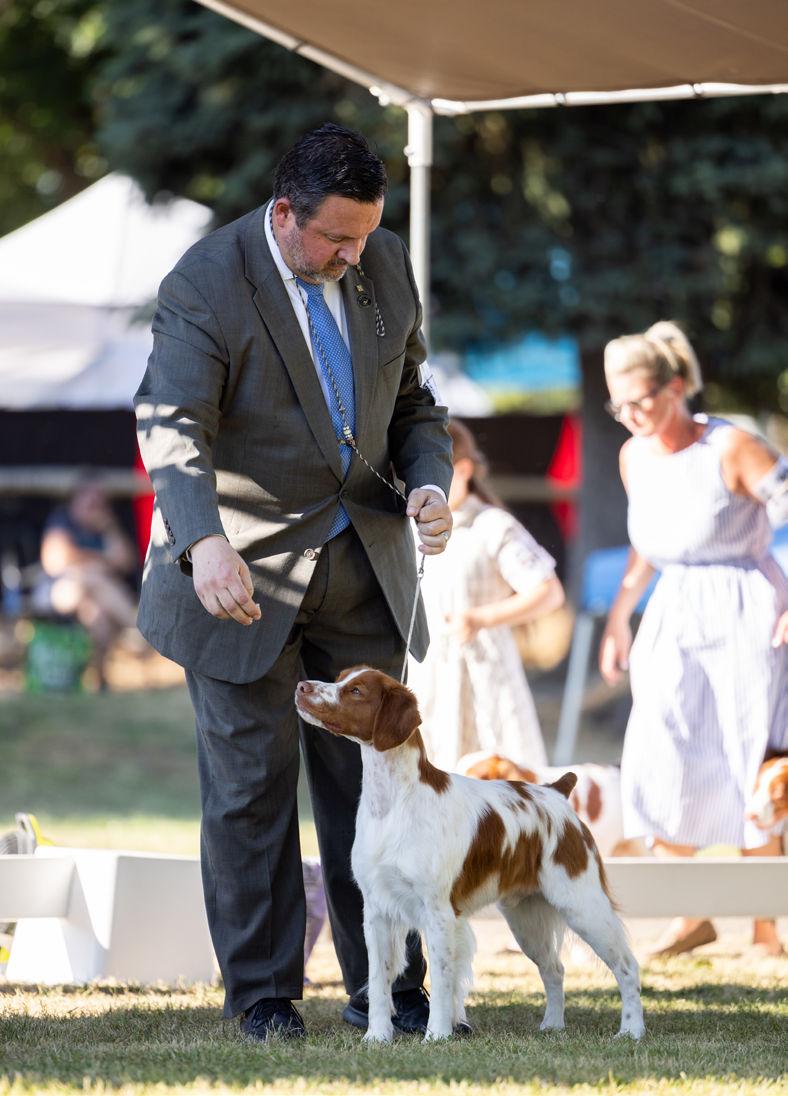
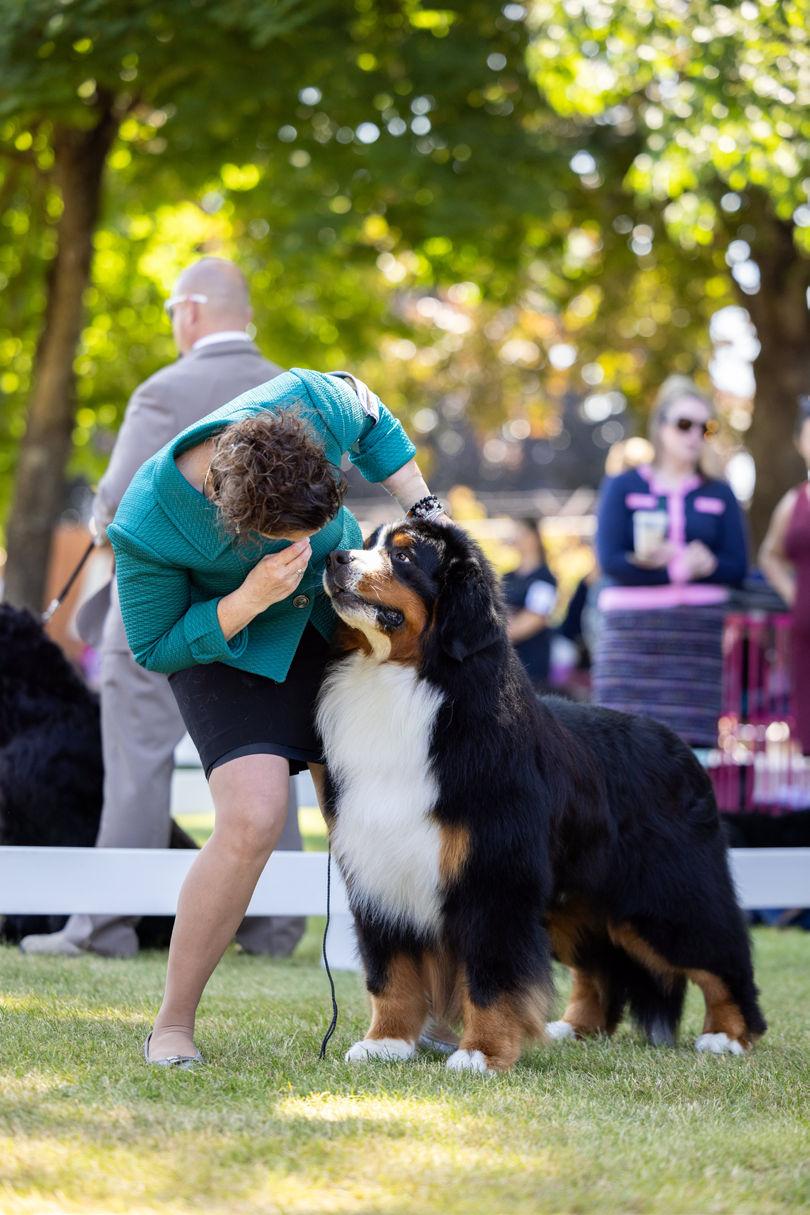

BEST IN SHOW MAGAZINE 46 RINGSIDE CLICK • CLACKAMAS



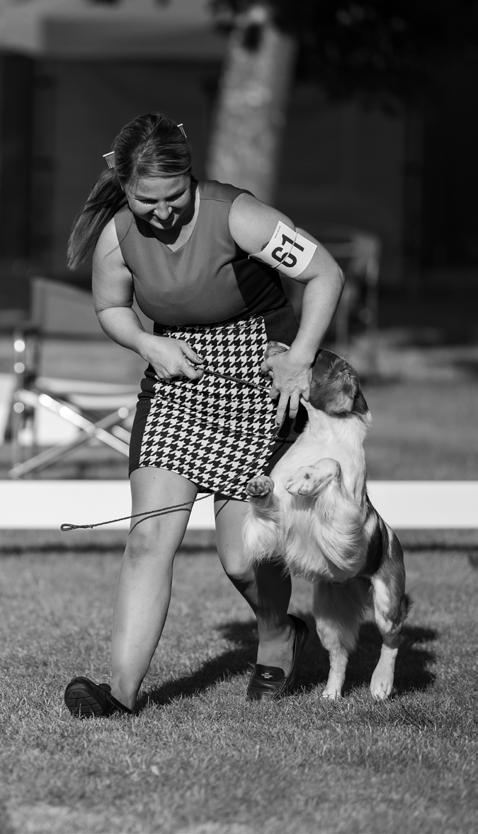

BEST IN SHOW MAGAZINE 47 RINGSIDE CLICK • CLACKAMAS
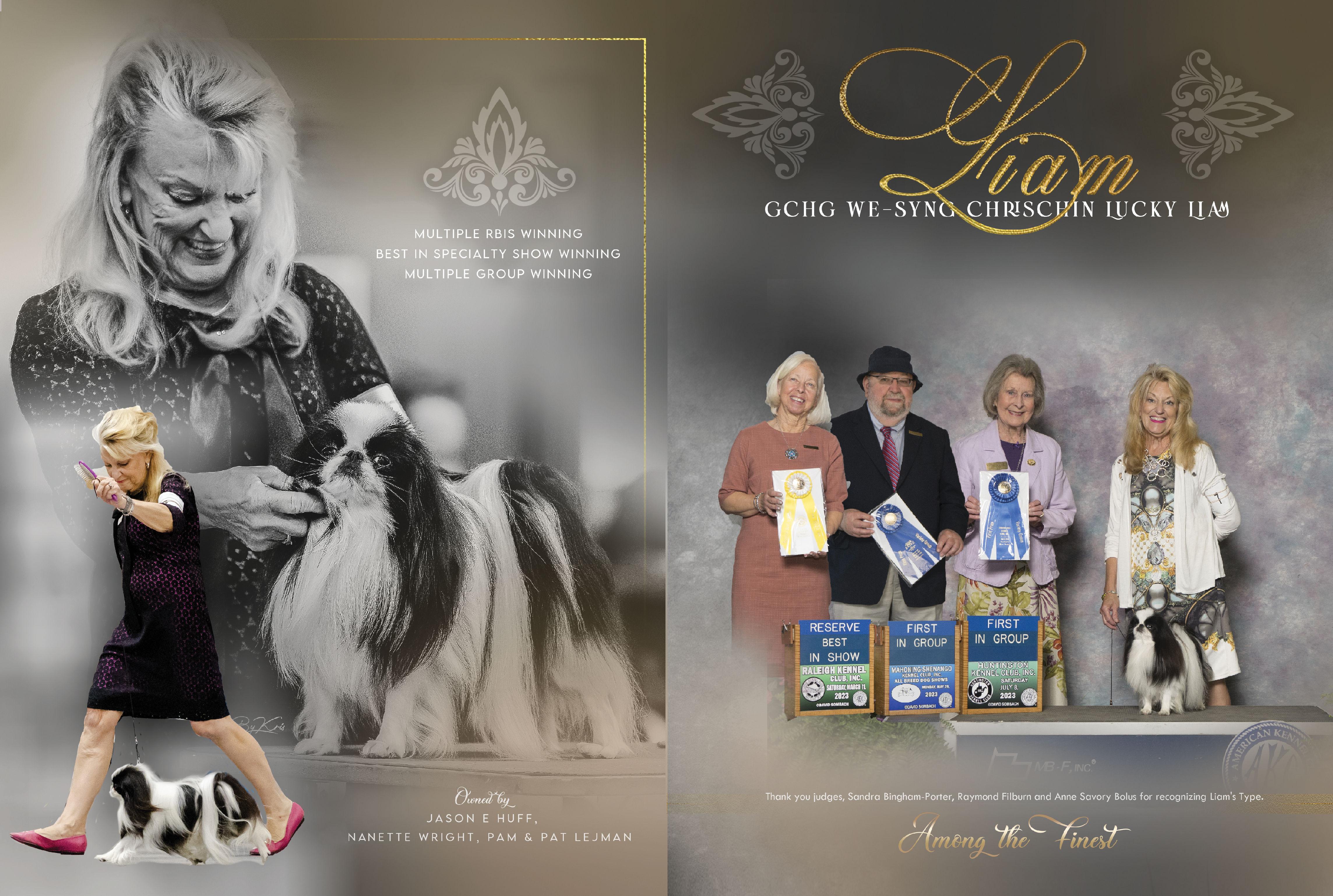

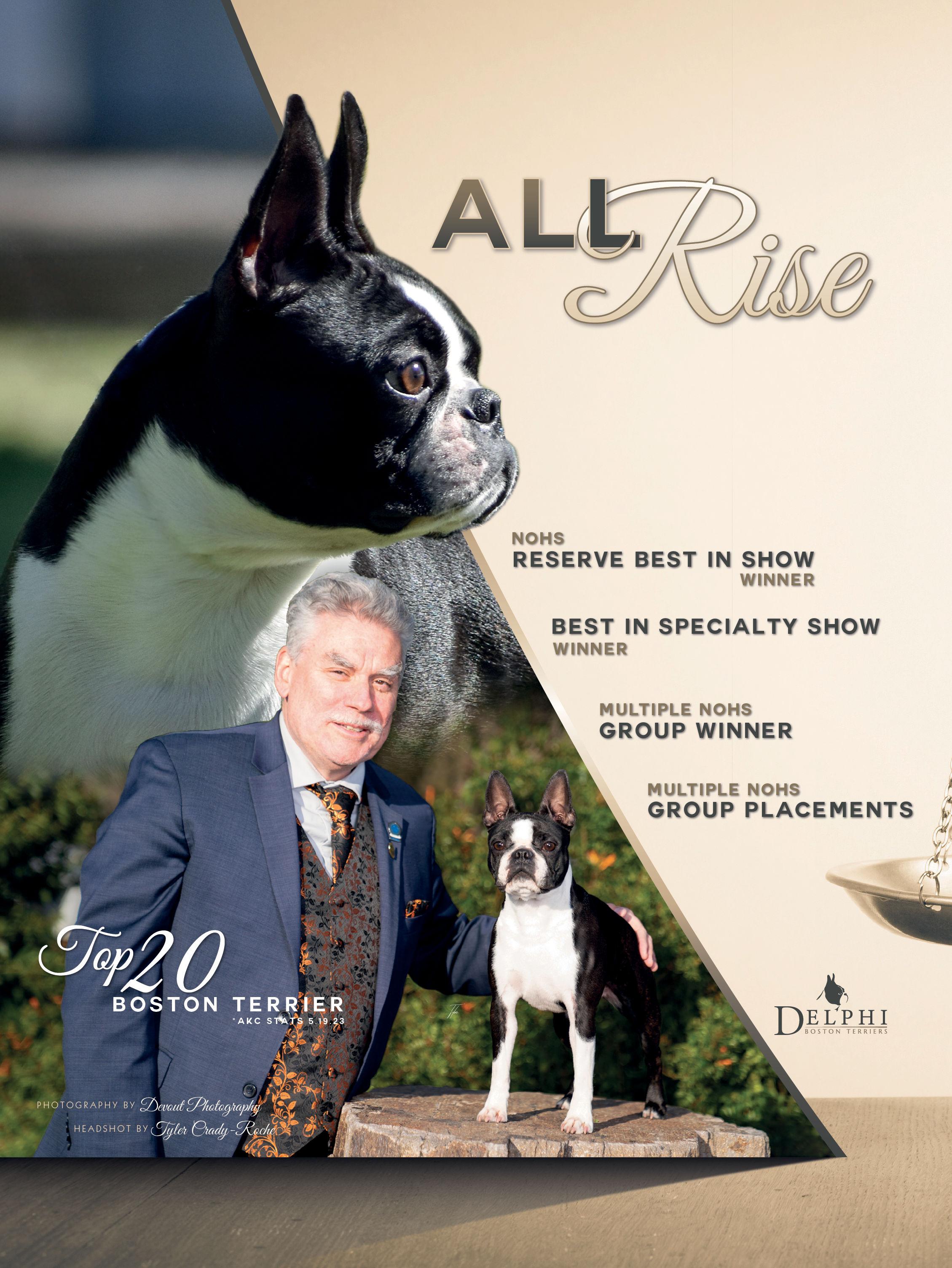



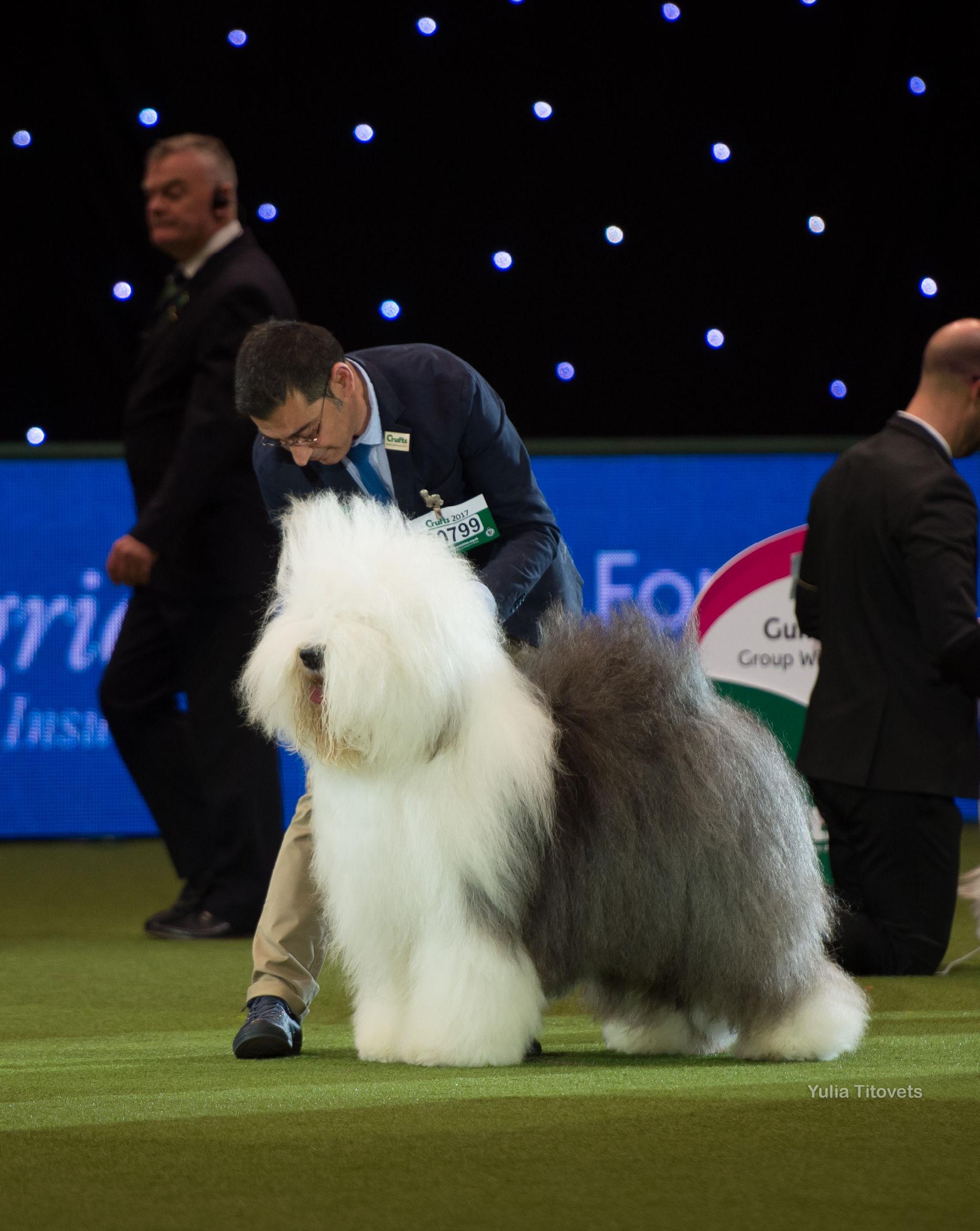
BEST IN SHOW MAGAZINE 54
MEET THE BREED OLD ENGLISH SHEEPDOG NIKOLAS KANALES
ARYAKAS
Old English Sheepdog
ABOUT THE BREEDER
Firstly, can you give us some background on yourself? When and how did you start to breed Bobtails?
Umberto Eco, in his bestseller “The Name of the Rose”, mentioned something akin to: “Every book was written for another book”. Therefore, I firmly believe that anyone who has succeeded in dogs has done so by following the example of successful individuals before them, particularly breeders. This success is definitely achieved with the enlight-ened guidance and mentoring of at least one talented mentor!
Born on the Greek Island of Paros, I spent a significant part of my childhood in close contact with many different kinds of animals raised on my grandparents’ smallholding. As far back as I can remember, dogs played a significant – I would even call it “karmic” – role in my life, long before Old English Sheepdogs (OES) came into the picture. As a toddler, I took my first steps holding the tail of a wonderful female dog, a multipurpose hunting dog named “Arapina”, who was very tolerant and kind to me.
My grandparents were accomplished breeders of working dogs and other animals, demonstrating a unique respect, love, and care for all the animals they raised. My grandfather, in particular, had an incredible “eye for a dog” and other types of animals that “we” used to raise, including goats, cattle, horses, and even chickens. I regard him as my first mentor in breeding and evaluating dogs.
Later, we purchased the most beautiful female German Shorthaired Pointer (G.S.P.) I had ever seen. Almost simultaneously, my grandfather was asked to train two exquisite pedigree Irish Setters for hunting. That’s when I started understanding what a pedigree dog was and began noticing the differences.
Moving to the city of Athens in my youth, I downsized to Cocker Spaniels, my first “personal breed”, though I had tried to acquire an English Pointer earlier.
As a child, I was notorious for “collecting” dogs and other animals of all sorts, and by the age of 14, I had already bred three litters of Cockers on my own!
Old English Sheepdogs (OES) came into my life in 1981 as “helper dogs” for my autistic younger sister Anna.
BEST IN SHOW MAGAZINE 55
From then on, they became a huge part of my life, proving to be incredibly understanding, trustworthy, mild, clever, calm, and also vivacious. Especially with an autistic child at home, OES proved to be easily adaptable, incredibly easy to train, and great fun to have.
I must stress that I believe I would have never accomplished anything in showing or breeding dogs without the guidance, help, and mentoring of some great dog people I was fortunate to meet in my life, includingmylategrandparents,thelateMrs.Virginia Mary Saunders, and a few others.
While I’ve always been interested in many other breeds and have been lucky enough to have or live with some of them, such as Schnauzers, Norfolk Terriers, Kerry Blue Terriers, and Griffons Bruxellois, it’s important to note that not all of my efforts were successful. There were some dogs and litters that were almost “a total disaster”. It’s a grave mistake to assume that consistent success in the ring means everything was handed on a plate. Behind such success, you often find a degree of heartbreak and disappointment. However, the determined breeder overcomes such setbacks.

What is the story behind your kennel and your kennel name? How many litters have you had so far? When did you breed your first litter?
“Aryakas” is the unofficial name of the area where I was actually born, on the dry Cycladic island of Paros in Greece. In the local dialect, it refers to a stream of water go-ing towards the sea. The history and etymology of the name are very dear to me as they are related to my grandfather; he had given away half of his property for access to this “priceless” source of water, every second day!
While I have bred fewer than 20 litters under my affix during almost 40 years of in-volvement with the breed, I am responsible for quite a few more that have been bred or co-bred with other people as a result of “team breeding”. Although there have been some issues over the years, I am very positive about the overall outcome.
As a young boy and teenager, I bred litters of Cockers on my own and took care of a few other litters of German Shorthaired Pointers, Hungarian Vizslas, and
BEST IN SHOW MAGAZINE 56
MEET THE BREED · OLD ENGLISH SHEEPDOG
English Point-ers. My real involvement in showing and breeding Old English Sheepdogs came much later in my life, in 1995, with the priceless mentoring help and guidance of Gina Saun-ders, to whom I owe most of my success in breeding quality dogs.
Where did your first dogs come from?
Regrettably, I obtained my very first non-pedigree Old English Sheepdog from a pet shop, a rather traumatic experience at a young age that I would rather not dwell on. This experience motivated me to focus on getting my dogs from reputable breeders later on, and it became clear that I needed to explore new bloodlines. So, around 2000, I started by sourcing dogs from, or related to, the Reata’s kennel of Davor and Andrea Javor from Croatia. These lines traced back to some of the legendary dogs from Zot-tel’s, owned by Mrs. Christina Bailey in the UK, among a few others I had admired.
What is your breeding policy? Do you work with other kennels, have joint owner-ships, or rent dogs from other kennels? Or do you prefer to have your stud dogs for yourself?
From time to time, we have had dogs come to stay with us solely for breeding pur-poses, for a limited period of time. This includes both males and females. While we would prefer to have the best stud dogs in the world at our home, we recognize that there are some exceptional dogs in other people’s homes and we have strived to use them when necessary, on multiple occasions.
Of course, we collaborate with other reputable kennels and breeders. While we own, or co-own
many dogs on paper, only a handful of them actually live with us. Times have changed a great deal and the historic “big kennels” with many dogs are rare nowadays. We firmly believe that our dogs should live the life of a family member in loving, per-manent homes, therefore, we don’t support the idea of keeping a large number of dogs ourselves.
In our view, breed improvement can only be achieved through collaboration between capable and honest people. This can sometimes be difficult to find as greed can be a significant downfall in human nature. Naturally, there have been some disappointments along the way.
Which dog do you consider the foundation of your own breeding?
Without a doubt, it would be multi BIS & BISS Multi Ch. Reata’s Cosmopolitan – “Cosmo” and his “wife” Ch. Fan-Fell Qualify for Happiness – “Patsy”. Typically, one be-gins with a female for breeding, but in my case, I first acquired Cosmo and shortly afterwards, decided to get my foundation bitch, Patsy. Of course, I thoroughly studied pedigrees and types to ensure this combination would be highly compatible and ideal-ly, produce the results I was looking for. Despite originating from different kennels, both dogs were line-bred on some of my favourite dogs in our breed, and to the best of my knowledge and ability, it worked out very well.
What kind of selection do you prefer in your breeding program - line breeding, in-breeding, or out-crossing?
I am inclined to say, “One must know how to outcross in order to line-breed effective-ly.” One aspect of my
MEET THE BREED · OLD ENGLISH SHEEPDOG BEST IN SHOW MAGAZINE 57
studies focused on genetics, and I firmly believe that heavy in-breeding can cause numerous issues within the world of pedigree dogs. A breeder’s decisions can indeed influence a breed for many generations to come.
To improve any breed in terms of type, soundness, and temperament, I believe one must know how to primarily line-breed to achieve the best possible results. However, it’s also crucial to understand how to outcross to avoid heavy inbreeding and associated health issues.
What would you say was your greatest achievement as a breeder so far?
To be completely honest, it’s impossible for me to single out only one achievement as my greatest. I have been very fortunate to have had some wonderful
experiences in both breeding and dog showing, which, to me, go hand in hand.
Perhaps my greatest achievements are related to the happiness and joy that well-bred dogs can bring to the daily life of a family or an individual. Additionally, witnessing to-tal newcomers, both in dogs and in our breed, achieving incredible results has been rewarding.
While I have won the FCI World Show and the FCI EuropeanShowafewtimesandhavebredChampions, Best In Show, and Group winners in many different countries around the world, my greatest achievement was likely at Crufts 2017. Multi BIS & BISS Ch. AryakasPegasoswonthePastoralGroup,whilehiskennel mates UK Ch. Aryakas Stefania at Beauvallon won the Bitch C.C. and Multi BIS & BISS Aryakas Pandora won the Re-serve Bitch C.C. What made this more special to me is that none of these dogs actually lived with us at home!

Pegasos’ human mom, our dear friend Paola Siciliano from Italy, had never had a dog before him. Pegasos is actually her pet, accompanying her to her fashion store every day and frequently swimming in the sea, even during his career as a “top show dog”! At the same time, Ch. Aryakas Stefania lives with our friends Gareth & Helen Harris in the UK, and CH. Aryakas PandoraliveswithAlainandValerieLabousinFrance. This truly demonstrates the power of teamwork.
An unforgettable moment for me was when Reata’s Cosmopolitan won Best of Breed at the World Dog Show in Portugal under Mr. Carlos Saevich from Argentina. Despite be-ing far from home and sick with a fever that day, the breed judge admired my
MEET THE BREED · OLD ENGLISH SHEEPDOG
15-month-old dog enough to award him Best of Breed over Champions. After his judging, he genuinely asked me: “Now tell me, who the hell is this dog? And who the hell are you?” A couple of years later, I was thrilledtowinBestofBreedatCruftsforthefirsttime with the same dog, under Mrs. Jilly Bennett (Pelajilo OES – UK), whose judging I had long admired.
Yet,Ibelievemygreatestachievementisstillaheadof me and should be strongly relat-ed to the consistency in breeding quality dogs.
ABOUT THE BREED
How do you interpret the standard? Do you accept that other breeders have dif-ferent points of view as to what a Bobtail should look like, or is there just one correct type?
Many people seem to believe that various breed standards can be open to multiple interpretations. However, I don’t think the OES breed standard is that ambiguous. That said, one should really study it thoroughly and try to read “between the lines” and “behind the words” to be able to answer the “whys”. For instance, why should the OES be strong, square, with its “characteristic topline”? Once one is capable of answering these “whys”, they then understand the Standard, and there’s no need for individual interpretations!
Nevertheless, if I didn’t accept that other people have different views, it would be like denying the sun rises from the east each morning. In many ways, I’m grateful for these differing viewpoints as they add to the intrigue of our field. On the other hand, some keyboard warriors may appreciate dogs that, at
times, I find to be practically of a dif-ferent breed.
What three qualities do you think are the most important when you look at a Bobtail?
I’m not sure I could boil it down to three words, but I would value a compact, strong, bear-like balanced dog, with a profuse harsh coat, and a playful intelligent character, of very even disposition.
In essence, I would want a dog that’s capable of doing a day’s work, referring of course to the work OES were bred for!

Which faults would you not tolerate in your breed?
I would not tolerate any faults that would prevent a dog from performing the tasks it’s been bred for. Top of my list would be an unreliable temperament, as I believe that is one of the worst faults an OES could have. I also find it hard to tolerate a weak, long, tubular body that lacks balance, an unsound dog, lacking the breed-specific topline, or a soft untypical coat.
MEET THE BREED · OLD ENGLISH SHEEPDOG
In my opinion, these are faults one should never have to tolerate, neither in judging nor in a breeding programme. This is because, although very few of us may have cattle or sheep these days, the dogs we breed and show indeed have a crucial role to play in our modern society. This role should coincide with the original purpose for which the breed was created.
In my book, OES have a great role and a significant job to do nowadays as a companion and family dog. They can even serve as a helping dog, as they have done in my own family. This role should never be underestimated.
Would you say there is a difference in dogs and dog types in Europe and USA? What is the difference in AKC and FCI Standards?
There has been, and still is, significant interaction between different parts of the world concerning OES breeding and showing. This doesn’t only involve the US, UK, and Eu-rope, but also Asia, Oceania, Latin America, etc.
Responding to your question, something immediately comes to mind: I recently read an article by a wellknownDogClubcommitteememberandbreeder,who claimed that the “best dogs of his breed are bred in

BEST IN SHOW MAGAZINE 60
his own country”. I believe such a viewpoint probably indicates a lack of understanding, lack of interest, or even kennel-blindness, since this person has likely only seen dogs of his own breed on “Facebook”! Dog show-ing and, by extension, breeding, is an international sport with no realistic borders. What happens today in one part of the world can influence events in a completely dif-ferent place more quickly than we sometimes can imagine! This is what makes our dog world even more fascinating. Sitting behind our PC screens, believing that we have the best dogs, probably makes it all quite monotonous.
That said, there are indeed differences, notably regarding the tail, which is “natural” in Europe and docked in the US, along with other aspects such as white markings in the grey parts of the dogs, which are allowed in the US but not in Europe and the UK, etc. Also, the AKC standard calls for slightly shorter dogs than the European and UK stand-ards, but in reality, American dogs – especially males – are overall bigger and even tall-er compared to European dogs.
It’s more a matter of what exhibitors and judges are accustomed to seeing in different parts of the world, rather than actual differences in the breed standards, regarding our breed. While the average American dog may be a bit more substantial and squarely built, accentuated by a bit (or maybe a lot!) more scissoring, and at times with stronger rear movement, the European Dogs generally may have better quality coats, darker eyes and may excel in front angulation and topline. This is definitely a generalization, and may not even be applicable nowadays, since I haven’t visited the American Nation-als last year. From another perspective, pigmentation is generally better
in Europe, and heads, I believe, may be stronger in the US over the last few years.
How has the breed changed over the years? Would you say it has gone to better or worse?
Like many breeds, OES have evolved in various ways, and there is a lot of literature on this topic, written by well-known and respected writers and journalists. In many ways, our breed has evolved for the better, with many health issues like hip dysplasia, cataracts, and PCD almost disappearing due to careful breeding and neces-sary testing. Longevity and overall soundness have improved in some bloodlines, which many believe were sorely lacking during the latter part of the 20th century, even in some top-winning dogs in Europe and the UK.
On the other hand, some modern OES may be too photogenic, with a lot of attention given to looks rather than function. As a result, in some dogs, coat quantity seems to be overtaking quality. Instead of double-harsh, realistically protective waterproof coats, we sometimes see softer, longer coats. This is unfortunately aided by excessive artificial scissoring and trimming to disguise the actual coat quality. In some cases, groomers and handlers even go as far as creating something resembling a giant Bichon Frisé ra-ther than a typical OES, which is, to say the least, rather disappointing.
Numbers have drastically dropped, but I would not like to be one of those who con-stantly ONLY praise dogs from the past. Living in the past, to me, likely means that we are unable to appreciate good dogs today or to do anything other than “moan” about our
BEST IN SHOW MAGAZINE 61
MEET THE BREED · OLD ENGLISH SHEEPDOG
breed. Even worse, we may be unable to appreciate someone else’s good dogs!
I genuinely believe we also have some fantastic dogs today!
Can you describe an ideal Bobtail?
The ideal Bobtail would be strong, capacious, square, profusely coated, balanced, bear-like, sound, and rhythmically moving. It would be intelligent, playful, free from exag-gerations, and have a strong head and bone structure.
Please name 3 of your all-time favourite winners bred by you, and 3 not owned nor bred by you.
Having to choose, I’ll only name dogs that are no longer with us, or have retired. Among my homebred dogs, Aryakas Cosmo-Junior, a.k.a. “C.J.”, deserves mention first. Living in Austria with his human mom Ms.ElisabethAntl,C.J.haswonasignificantnumberof championships in many countries, and an impressive number of Bests In Show. He became Top Dog of all breeds in Greece, following the family tradition of his sire. Not to forget, he won Best of Breed at Crufts, the World Champion and European Champion titles, etc.
Another one close to my heart is UK Ch Aryakas Genesis at Beauvallon a.k.a. “Geena”. She was primarily shown by her owner, Mrs. Helen Harris (UK), and despite only being shown in the UK, she was incredibly beautiful. Geena later won Best Of Breed at Crufts and the prestigious pastoral Group 4th place in a very competitive year.
Lastly, I must mention the very special Multi BIS & BISS, INT. IT. & GR Ch Aryakas Pegasos, now retired.
He had a very limited show career - probably shown at no more than 20 dog shows during his life. But, he won many Group 1sts and Best In Show awards, as well as Best Of Breed and the Pastoral group at Crufts. Loved and condi-tioned by a newcomer to dogs, Ms. Paola Siciliano from Italy, and groomed and han-dled by Matteo Autolitano and myself.
As for dogs bred by others, I have to start with the legendary Ch. Zottel’s Miss Marple of Lameda, a.k.a. “Missy”. Bred and handled by Mrs. Christina Bailey, she was a joy to watch in the ring and excelled in breed type, conditioned to perfection.
Another perfectly conditioned and shown dog was UK Ch. Bobbington Latin Lover, han-dled by Mrs. Alex Little, who also bred him. A dream to watch, he would be an example for anyone wanting to appreciate breed type.
Choosing my third pick is challenging, as I have admired so many, but I’d probably choose Am. Ch. Mop Top Good Lovin from the US. Although I’ve never seen this dog in real life, I’ve always admired him. And his winning the OESCA Nationals under Jilly Ben-nett’s guidance convinces me I can’t be far off.
What homebred dog of yours comes closest to your ideal?
I appreciate this question, as I’ve bred some nontop winners that are very close to my heart and my ideal OES. These dogs have offered their families and me much love and affection. While dog showing and breeding is undoubtedly one of my greatest passions, dogs are long-standing companions of humanity, and they live an everyday 24/7 life with us, away
BEST IN SHOW MAGAZINE 62
MEET THE BREED · OLD ENGLISH SHEEPDOG
from showing. Among my most beloved dogs are Ch. Aryakas Caryatis, her litter sisters Calliopee and Callipous, Aryakas Dorothea, Fotios with Fotini, GeoCosmic, Hermes and Hercules, Ikaros, Ionios and Idioteleia, Kallistos, Lygeia, Midas, Niki, Ophelia, Pandora,PhoenixandPherenikee,Rodanthi,Stefania, Simon, and Timon. Some have had successful show careers, some not, but I couldn’t exclude any of them and I’m sure I’ve forgotten some.

What would you say is the secret to continued success in breeding Bobtails?
I believe that the key principles to successful breeding have been often stated by breeders of many different breeds, and these principles apply to OES breeding as well. A breeder should be passionate and committed to the improvement of the breed, put in substantial effort in studying and continuous research, and respect the work and history of others. It’s crucial to develop a well-informed opinion based on facts and not be swayed by what others publish or think. You shouldn’t be misled by the occasional top winner of the time, but should admire its virtues and choose the right one that suits your bloodlines and the particular female at the time.
My original studies in the medical field and my understanding of genetics, coupled with interactions with excellent breeders, judges, and mentors, have been invaluable. Early on, I developed the concept of the “Double X factor or XX factor”. As American breeder,judge,andauthorPatriciaTrotterhaspointed out, while males may be influential, they contribute only 25% of their genes’ potential to a breed’s gene
pool. In contrast, fe-males can influence a breed 75%, due to their XX gene. Hence, each offspring inherits one gene from each parent, making the X genes more influential, constituting 75% of a gene pool. The secret of a successful breeding program lies in quality females and a strong bitch line. Moreover, any male should ideally come from a virtuous strong bitch line.
What advice would you give to a new person in the breed?
Newcomers, who are much needed, should strive to discover the best that this beauti-ful breed and world have to offer… and leave out the rest! Always start with quality, which may be challenging to find initially, but is worth the effort. Be responsible and let your decisions be guided by your genuine love and passion for this wonderful breed.
BEST IN SHOW MAGAZINE 63
MEET THE BREED · OLD ENGLISH SHEEPDOG
Be more interested in learning than in becoming interesting immediately. Learn by traveling, and don’t travel only to win at various dog shows. I have learned a lot more by listening and observing, even from losing, than from talking and winning!
Try to differentiate truly knowledgeable dog people from those who make too much noise on the internet and social media. Don’t be swayed by superficial opinions that always reflect the incredible, nonexistent values of their own expert breeding… especially when they have only bred a few litters… with other people’s dogs. Noise and self-promotion are not the best routes to achievement. A truly successful dog person or any serious breeder doesn’t need to be a “keyboard warrior.” Avoid being a big fish in the small pond of your own backyard; this does not
benefit any breed!
Seek out the added values within the wonderful breed of OES, and within any breed, and discover the many ulterior motives involved in showing and breeding truly good dogs.

Have at least one good mentor. Place your trust in someone who has integrity, ethical standards, and a proven track record of results. Define “good” as the people who don’t only think that their current dogs are the best ever, but also know how to evaluate dogs according to the breed standard.
And always remember, if you try and succeed, you may face problems, but if you don’t try, you will gain nothing!
MEET THE BREED · OLD ENGLISH SHEEPDOG




BEST IN SHOW MAGAZINE 68
MEET THE BREED OLD ENGLISH SHEEPDOG LIZ FUJIKAWA

WYNWARD
Old English Sheepdog
ABOUT THE BREEDRED
Please give us some background on yourself? When and how did you start to breed Old English Sheepdogs?
I am a hobby breeder and exhibitor of Old English Sheepdogs and Norwich Terriers. I have also served a few roles my parent clubs, the Old English Sheepdog Club of America (OESCA) and the Norwich Terrier Club of America (NTCA). For the OESCA, I currently serveastheChairfortheJudgesEducationCommittee and am a member of our Southern Regional Specialty Committee. In the past, I was also on our Illustrated Guide Committee, our Code of Ethics Revision
Committee and have held various board positions. I’m also currently serving as the Nominating Committee Chair for the NTCA.
I work full time as a civil engineer and have spent my career working as a consultant, primarily focused on drinking water and wastewater treatment needs for municipal clients. First in the Midwest and now in Florida after I moved to Wellington about 11 years ago.
I grew up with Old English Sheepdogs. My mother got her first OES in 1968, purchased as a companion for our family. The puppy turned out to be what the breeder said was “pick of the litter”. Our family took her to a fun match, about 50 entries back then, and my mom was thrilled when she was best in match (or opposite I can’t remember). That hooked my mom on dog shows and that dog finished her championship in 1970. It was many years later when we had our first litter, that was in 1991.
BEST IN SHOW MAGAZINE 69
What is the story behind your kennel and your kennel name? How many litters have you had so far and when did you breed your first litter?
There’s not much of a story behind our kennel. We have always bred with the intention of keeping something to continue with and show, and that’s difficult because our dogs have always lived in the house, so our numbers are limited. Our kennel name Wynward was chosen by my mother when we had our first litter in 1991.
I’m guessing on the number of litters of OES, it’s about 14 that we have raised here, plus we’ve been fortunate to have a few other litters with bitches we have co-owned with close friends. That’s a limited breeding program, but it results in our ninth generation of dogs that we are showing today. I think we have bred about 22 OES champions.
Where did your first dogs come from?
Our first dog came from a family that used a Lillibrad champion male, that was the first bitch my mom finished. When she came out dysplastic, my mom got her next dog from Harriet Poreda’s Greyfriar kennel.
What is your breeding policy? Do you work with other kennels, have joint ownerships, or lease dogs from other kennels? Do you prefer to have your stud dogs for yourself?
We believe in breeding to better the breed—health, temperament, and conformation. We breed only a very few bitches and allow a few other breeders to use our stud dogs. Because of the very small nature of our breeding program, it is essential that we work with other breeders who have a similar eye for a dog. We
breed closely with our wonderful friends Jere Marder, Lambluv OES, and Jeri Hoppe, Foursquare OES, to benefit all our breeding programs. Jere’s generosity in sharing some of her stud dogs has certainly been a foundation for the dogs we have today.
In addition, we have chosen to purchase dogs when we wanted to strengthen aspects of what we have. In 2002, we bought a puppy bitch from Glen and Marlene Larson, Wullyweather OES, and in 2016 we imported a five-month-old dog from Eleonore Singer, Enchant OES, in Austria. This dog, Ch. Enchant Han Solo, has been a very good addition to some US breeding programs plus he was the first natural tailed OES to finish a championship in the US.
Which dog do you consider the foundation of your own breeding?
That’saverydifficultquestiontoanswer.Ican’tthink of a particular dog that served as our foundation. Looking back, it’s seeming to be a series of agonizing over stud dog picks to match what we needed to change.
What kind of selection do you prefer in your breeding program line breeding, inbreeding or outcross?
Without a kennel, it’s very difficult to establish multiple lines of dogs that can be line bred with an occasional outcross as desired. That would be my preference, but unfortunately, we don’t have that opportunity.
In making breeding decisions, for sure we try to maintain the phenotype we want. I’m always looking backward through multiple generations on a pedigree. We have never bred to the top winning dog.
BEST IN SHOW MAGAZINE 70
MEET THE BREED · OLD ENGLISH SHEEPDOG
It is hugely critical to work with breeders who have a similar eye for a dog that have an established genotype as well as phenotype.
What would you say was your greatest achievement as a breeder so far?
To be recognized by peers is the true test of the quality of dogs in a breeding program. In addition, it was always a dream to be the breeder/owner/handler of a dog to win the National Specialty, an all-breed Best in Show, and Best of Breed at the Garden. Our GCHB Wynward’s Remember That ROM, Bart, accomplished this, by winning the national under breeder-judge Dale Meyer and the breed at the Garden under breederjudge Walter Sommerfelt. At other nationals, Bart was also awarded by breeder-judges, winning Best of Opposite under Ray Wilkinson (UK), Select Dog under Charles Olvis, and Reserve Winners Dog under Mary Anne Brocious.

Bart was the product of just the sixth generation of our breeding program. When he won the breed at the national,wealsoco-bredwithourlongtimefriendJeri Hoppe the Best of Opposite Sex and Winners Bitch/ Best of Winners (both out of Bart’s sister Ava, Ch. Wynward Foursquare All of the Above), and Winners Dog was a Bart son. That was an unforgettable day.
We also can’t avoid mentioning that Bart’s sister, Katie, GCH Wynward’s Gotta Love That, won the
OESCA Top Twenty, under breeder-judges Davor Javor, Fiona Zammit and Dora Meyer. At the nationals Katie did her share of winning under breeder- judges, having won Best of Opposite under Martin Doherty, Select Bitch under Ray Wilkinson (UK), and Reserve Winners Bitch under Mary Anne Brocious.
ABOUT THE BREED
Q: How do you interpret the standard? Do you accept that other breeders have different point of views as to what an Old English should look like, or is there just one correct type?
A: Being an engineer makes me interpret the standard as literally as I can. But unfortunately, there isn’t always a literal meaning to the words in our standard. I believe that the OES should be a square and compact dog with good substance (bone/body),
BEST IN SHOW MAGAZINE 71
have a squarely formed skull and jaw, a slight rise over a broad loin, and have good angles front and rear allowing good reach and drive with a fluid and balanced gait. And of course, a true OES has a good temperament.
I realize that other breeders may have different styles of grooming. We see a lot of Bichon trims and excessive stripping of coats. It was quite nice to see the OES Best of Breed/Reserve Best in Show winner at Crufts this year, heavily coated and with minimal trimming, yet she presented an outline fitting our standard.

I think there is only one true type that fits the standard. The key to finding this is what we are trying to emphasize in our judge’s education training—OES need to be judged with your hands, you must feel through the coat as trimming can be quite deceptive. The OES should never be judged as a profile breed.
What three qualities do you think are the most important when you look at an Old English?
First, I’d say that an OES must be square, meaning not short legged and not a reverse rectangle, have good spring of rib, good bone, substance, and width over the gently rising loin.
Second, a typical OES expression is carried by wide set eyes, an accentuated stop, width of back skull, and a broad, truncated muzzle.
Third,anOESmusthavethematchingfrontandangles to allow it to serve its function as a herding dog. Well laid-back shoulders, a good return of upper arm, and a bend of stifle into well let down hocks Is critical. Finally, I’d say that these angles allow an OES to move
BEST IN SHOW MAGAZINE 72
MEET THE BREED · OLD ENGLISH SHEEPDOG
well. Balanced movement, equal reach, and drive, with a fluid, effortless gait is very important. And finally, the down and back shouldn’t be overlooked in favor of a “big side gait”. Sidewinding isn’t reflective of balanced movement, and wide fronts and narrow rears are not correct.
Which faults would you not tolerate in your breed?
Here’s my list of things I won’t tolerate:
• Proportions--Long and low or leggy and short backed.
• Heads--Narrow, domed back skulls, no stop, snipy muzzles, eyes that are close together.
• Bodies—Slab-sided, lack of bone.
• Topline--Level backed dogs; we must have a gentle rise over a thickset loin.
• Fronts--Ewe necked (no arch), short necks or upright shoulders with lack of layback or straight upper arm.
• Rears--Straight stifles, narrow rears.
• Coat—soft or flat coated dogs.
• Movement—dogs that are not balanced (wheelbarrow movement, kicking rears, sidewinding) or cannot cover ground. Wide fronts, pinched fronts, narrow and hocky rears.
Would you say there is a difference in dogs and type in Europe and the USA? What is the difference in AKC and FCI standards?
It’s been many years since I’ve been to Crufts or the continent. And I know that it’s not correct to judge

based solely on outline, but I’d say that the Europeans seem to emphasize side gait and have a little longer bodied dog than we do in the US.
The FCI standard differs from the AKC standard in quite a few ways: calls for a roll when ambling or walking (roll is not in our AKC standard); calls for the muzzle being half the skull length (AKC standard says a fairly long muzzle); scissor bite, level bites are undesirable (AKC calls for either); pigmentation on eye rims is preferred (not in AKC standard); has a standard for the tail (not addressed in AKC standard); narrower at the point of withers than at the point of shoulder (AKC standard says narrow at the points); bend of stifle is not exaggerated (not in AKC standard); a long second thigh (AKC says well let down hocks); when trotting, exhibits a bear like roll (roll is not in AKC standard); discourages white in the jacket (AKC says with or without white markings or in reverse); calls for height of 22 inches (bitches) and 24 inches (dogs) and up (AKC says 21 inches [bitches] and 22 inches [dogs] and up).
BEST IN SHOW MAGAZINE 73
MEET THE BREED · OLD ENGLISH SHEEPDOG
How has the breed changed over the years? Would you say it has gone to better or worse?
I’d say that the breed has gone through many trends over the past 30 years, perhaps reflecting the style of dogs that are doing the most winning at the time.
The current OES are probably better conditioned, though perhaps have worse texture than years ago. I think we are seeing a trend to smaller dogs that can appear “bitchy”. As far as movement, the dogs seem to be sounder going away, probably worse coming in, and have better side gaits.
Can you describe an ideal Old English?
The ideal OES makes a great family member and gets to participate in a variety of activities. They love to go places and see new things. I’d say they are also very loyal and watchful for their families. We have a dog who hangs out in the yard and makes sure that he’s the last to come into the house.
Our dogs are also always doing something entertaining, for themselves and for us. An OES should also get along well with other dogs, big and small (we always have a few Norwich Terriers).
Please name three of your all-time favorite winners bred by you and three not owned nor bred by you.
That’s a difficult question, our breed has been well represented in the ring. I’d say:

Bred by us:
• GChB Wynward’s Remember That (Bart) and his littermate GCh Wynward’s Gotta Love That (Kate)
• Ch. Wynward’s Been There, Done That (Toby)—all our dogs descend from Toby, he was the start of that easy moving side gait.
Bred by others:
• Ch. Rholenwood’s Taylor Made—a striking bitch with gorgeous side gait.
• Ch. Lambluv’s The Divine Miss M—an extreme bitch, bone, body, and substance, quite sound. We bred to her brother to produce our Bart and Kate.
• Ch. Moptop’s Good Lovin—a beautiful dog, great mover.
What homebred dog of yours comes closest to your ideal?
We have a young dog who just turned two, Ch. Wynward’s Remembering That a Bart son we call Michael. He is very promising--square, bone, body, beautiful head and expression, wonderful angles giving him an easy side gait. We love his look, very
BEST IN SHOW MAGAZINE 74
MEET THE BREED · OLD ENGLISH SHEEPDOG
bearlike, and such a character to have in our house, he can’t be missed.
What advice would you give to a new person in the breed?
Before getting into the breed, consider how much time it takes to properly raise and condition an OES for the show ring. That level of commitment and dedication can’t be overemphasized enough. An OES coat can’t be neglected and saved by last minute dematting and bathing. It’s no fun to have a dog that’s not competitive, and it’s an embarrassment to your breeder who took a chance and sold you a dog.

In addition, find a breeder/mentor that you can work with and listen to do not “poll” the Facebook world for answers. That goes for everything, including training, conditioning as well as breeding decisions.
And those contractual ties that most people have on their puppies are put there for good reasons, reputable breeders care about what happens with their dogs, so don’t complain, newbies don’t have the breed history to make sound decisions.
What would you say is the secret to continued success in breeding Old English?
That’s another difficult question. I’d say that success doesn’t come from breeding “as an island”. Success comes from working closely with those who see dogs in a similar way, with a similar eye and level of importance of various aspects of the dogs. They ideally have an established program giving them many generations of consistency. In addition, when I say working with others, that means having a close relationship that’s founded on trust and honesty.
MEET THE BREED · OLD ENGLISH SHEEPDOG





BEST IN SHOW MAGAZINE 80
MEET THE BREED
breed. He helped me develop the discerning eye I use today when evaluating specimens. This marked the beginning of my 40-plus year journey with the breed.
What is the story behind your kennel and your kennel name? How many litters have you had so far, and when did you breed your first litter?
OLD ENGLISH
SHEEPDOG JERE MARDER
Lambluv Old English Sheepdog
Firstly, could you give us some background about yourself? When and how did you start breeding Old English Sheepdogs?
InChristmasof1969,myhusbandflewtoNewYorkand came home with a surprise - an Old English Sheepdog puppy. We loved and spent many wonderful years with Bridgette. Following her, I got my first show prospect in 1977 from the breeder Caj Haakansson of Bahlamb Farms. Caj played an instrumental role, both early on and to this day, in my understanding of the

“Lambluv” originated as a term of endearment given to me by my husband, Michael. The word carried so much meaning that I named my breeding program after it. Now, decades later, “Lambluv” still means the world to me.
I wasn’t exempt from challenges at the start. Living in a large apartment in downtown Chicago, I didn’t have the lifestyle that could amply support a breeding program. I was limited in the litters I could produce, so careful research and consideration were necessary to ensure I matched up animals based on
BEST IN SHOW MAGAZINE 81
both genotype and phenotype. My first litter was in 1982. I was selective in the sheepdogs I introduced into my program. Ch. Rholenwood’s Taylor Maid, whose pedigree doubled up on my foundation dog, Ch. Bahlamb’s Beach Boy, was a prime example. Introducing this pedigree allowed me to make five years’ worth of progress in breeding. In addition to my efforts, I was fortunate to have loyal owners for my dogs, which allowed me to continue progressing my program remotely. Without the trusted members of the “Lambluv Family,” I wouldn’t have been able to accomplish as much as I have. Networking with my co-owners granted me access to a larger gene pool than I could facilitate and own by myself.

Where did your first dogs come from?
In 1977, I met Caj Haakansson, a Swedish native who had moved to Maryland. My communications with Caj increased as he became my mentor. The first acquisition of my program was in 1978, my foundation: Ch. Bahlamb’s Beach Boy, or “Ricky.” Ricky was shown by Jack Funk and rose to #1 Old English and #1 working dog in 1980. He also broke the Best in Show (BIS) record for OES. Over the 40-plus years I’ve bred, I’ve produced over 20 BIS dogs and over 125 champions, all tracing back to “Ricky”.
What is your breeding policy? Do you work with other kennels, have joint ownerships, or rent dogs in or from other kennels? Or do you prefer to have your stud dogs for yourself?
A: I’ve never operated as a kennel; my dogs have always lived at home with Michael and me. However, living in downtown Chicago limited the number of dogs I could keep. Through careful networking, I was fortunate to find loyal and trustworthy owners who could provide a home for my dogs while still allowing me access to them, so I could continue the Lambluv breeding program. I’ve bred within my own lines and introduced new lines, depending on what I felt was necessary to progress the next generation of healthy and sound Old English Sheepdogs.
Which dog do you consider the foundation of your own breeding?
“Ricky,” Ch. Bahlamb’s Beach Boy, is the obvious choice for my foundation, but among the dogs that I’ve produced, it’s hard to narrow it down. A very influential dog, I believe, came from five generations
BEST IN SHOW MAGAZINE 82
MEET THE BREED · OLD ENGLISH SHEEPDOG
in, Ch. Lambluv’s Desert Dancer, or “Yoshi.” Yoshi was the embodiment of my breeding philosophy. A magnificent dog, he accomplished a lot in his time. He broke the world BIS record for OES with 64 Best in Shows. Yoshi played a significant role in advancing my program.
What kind of selection do you prefer in your breeding program - line breeding, inbreeding, or outcross?
As the old saying goes, “there are no crystal balls in dog breeding.” My philosophy in breeding has always been to advance the breed with each generation. In my program, I had the opportunity to develop and line breed my line, with the option to outcross as needed to bring in certain desired traits that might be lacking.
What would you say was your greatest achievement as a breeder so far?
I’ve been blessed to have the success I’ve had over the years. One of my greatest achievements that comes to mind was winning the herding group at Westminster not once, but twice with dogs I’d bred. Additionally, I received the honor of the award for most group ones twice, won the national specialty five times, won the herding group at the AKC National Tournament, and in 2003 won the AKC herding group breeder of the year. These accomplishments were all achieved with dogs that I had bred, with the exception of my foundation dogs: Ch. Bahlamb’s Beach Boy & Ch. Rholenwood’s Taylor Maid.
How do you interpret the standard? Do you accept that other breeders have different points of view as to what an Old English should look like, or is there just one
correct type?
As a member of the judges’ education committee, we’re strict in upholding the verbiage used in the breed standard. According to the standard, there is only one ideal type of Old English Sheepdog, but individual interpretations result in varying styles of breed specimens. The breed is profuse, but not excessively coated, so grooming can play a large role in the varying styles. This underscores the importance of hands-on examination by breeders and judges to ensure the structure of the dogs adheres to the hallmarks of the breed.
What three qualities do you think are the most important when you look at an Old English?
I think of three important breed hallmarks:
• A capacious, squarely formed head with a welldefined stop.
• A topline with a rise over the loin.
• A thickset, square, pear-shaped body.
• As an honorary fourth, my mentor instilled in me the importance of the unique movement of the Old English Sheepdog. Due to the way the breed is built, the Old English is characterized by its trademark rolling gait.
Which faults would you not tolerate in your breed?
To me, an incorrect front assembly is the most troubling. We want dogs that are broader at the rear and narrower at the point of the shoulder, creating a pear shape. The breed should move, converging towards the center line. They should not stand
MEET THE BREED · OLD ENGLISH SHEEPDOG
four-square or have level toplines, and should be free of any sidewinding gait. Additionally troubling are rear assemblies resulting in high kicking or bicycling actions that waste energy. Dogs portraying these traits may often be out of “balance,” which is incorrect. These are all examples of traits I’ve attempted to avoid in my own breeding program.
Would you say there is a difference in dogs and dog type in Europe and the USA? What is the difference in AKC and FCI Standards?
After attending and/or participating in five FCI world dog shows, I’ve noticed a few differences in terms of balance. For one, the FCI standard emphasizes pigment and a natural tail. The FCI standards also call attention to preference in markings and white placement, while the AKC has no prejudice towards markings. Generally speaking, dogs shown to the FCI standard have a more natural outline and coarseness/ length of coat compared to dogs shown in the AKC. As far as balance, I felt the dogs shown in the FCI were customarily larger with more leg. In general, I feel the breed is losing its squareness worldwide.
How has the breed changed over the years? Would you say it has gone to better or worse?
From a breeder’s standpoint, the pendulum has swung both ways over the years, matching the style or current fad being shown in the ring. Overall, I’ve noticed a decline in balanced animals, a decrease in square specimens, and an increase in rectangle or reverserectangledogs.Side-gaitshavealsodecreased in balance with dogs shown that lack reach in the front or over-extend in the rear. These are traits that have always existed, but I’ve noticed they have
become more prevalent. We as breeders have to be aware of the problems in the breed in order to work together to resolve them in future generations.
Can you describe an ideal Old English?
Cajsaiditbest,“Ifitdoesn’thaveagoodtemperament, it’s not an Old English Sheepdog.” Sheepdogs, or bobtails as they were once referred to, are funny, playful dogs that easily get along with people and other animals. These traits do not make them good kennel dogs, but great companions to have in the household with the family. As history states, the OES worked as a drover dog with the flock and shepherd, still maintaining that herding instinct today. The Old English Sheepdog is a square-balanced breed that should stand wider in the rear than the front, presenting a pear-shaped specimen, thickset with a slight rise over the loin. The dogs will have a natural, profuse double coat with coarse guard hairs.
Please name 3 of your all-time favorite winners bred by you and 3 not owned nor bred by you.
This is the most difficult question of all. There have been so many beautiful sheepdogs over the years.
Bred by me: Ch. Lambluv’s Desert Dancer (Yoshi), Ch. Lambluv’s The Devine Miss M (Bette) and GChP Lambluv Gambolon Blue Thunder (Elvis).
Bred by others: GChB Wynward’s Remember that (Bart), Ch. Bahlambs Brazen Bandit and Ch. Whisperwood Wise Guy.
What homebred dog of yours comes closest to your ideal?
I’d have to say “Yoshi”, Ch. Lambluv’s Desert Dancer.
BEST IN SHOW MAGAZINE 84
MEET THE BREED · OLD ENGLISH SHEEPDOG
He was a beautiful dog with a lovely head and arch of neck, a square, correct topline, and extreme side movement. Yoshi always came to a stop with the wide-set rear and narrower front, creating a true pear-shaped dog. He loved to show and was a great companion for us.

What would you say is the secret to continued success in breeding Old English?
Persistence. Breeding animals is often one step forward and five steps back, especially when you’re breeding out. We’re always trying to solve “the puzzle” and achieve the masterpiece dog. You want to fill in the blanks, yet also never double up on what you’re avoiding, pulling reference to the above term “the puzzle”. Breeders don’t want to give up the positives. Without persistence, success, and loyalty from those I worked with, I don’t think I would have continued for over 40 years.
What advice would you give to a new person in the breed?
Do your research when choosing a breeder from whom you’d like to get a puppy and follow their mentorship. If you have enough respect to pick that breeder, then have the respect to listen to their advice and knowledge. Carry an open mind and be willing to listen to opinions beyond your own.
BEST IN SHOW MAGAZINE 85
MEET THE BREED · OLD ENGLISH SHEEPDOG


WESTMINSTER Kennel Club Dog Show
 BELTRÁN HORTIGÜELA ALONSO
BELTRÁN HORTIGÜELA ALONSO
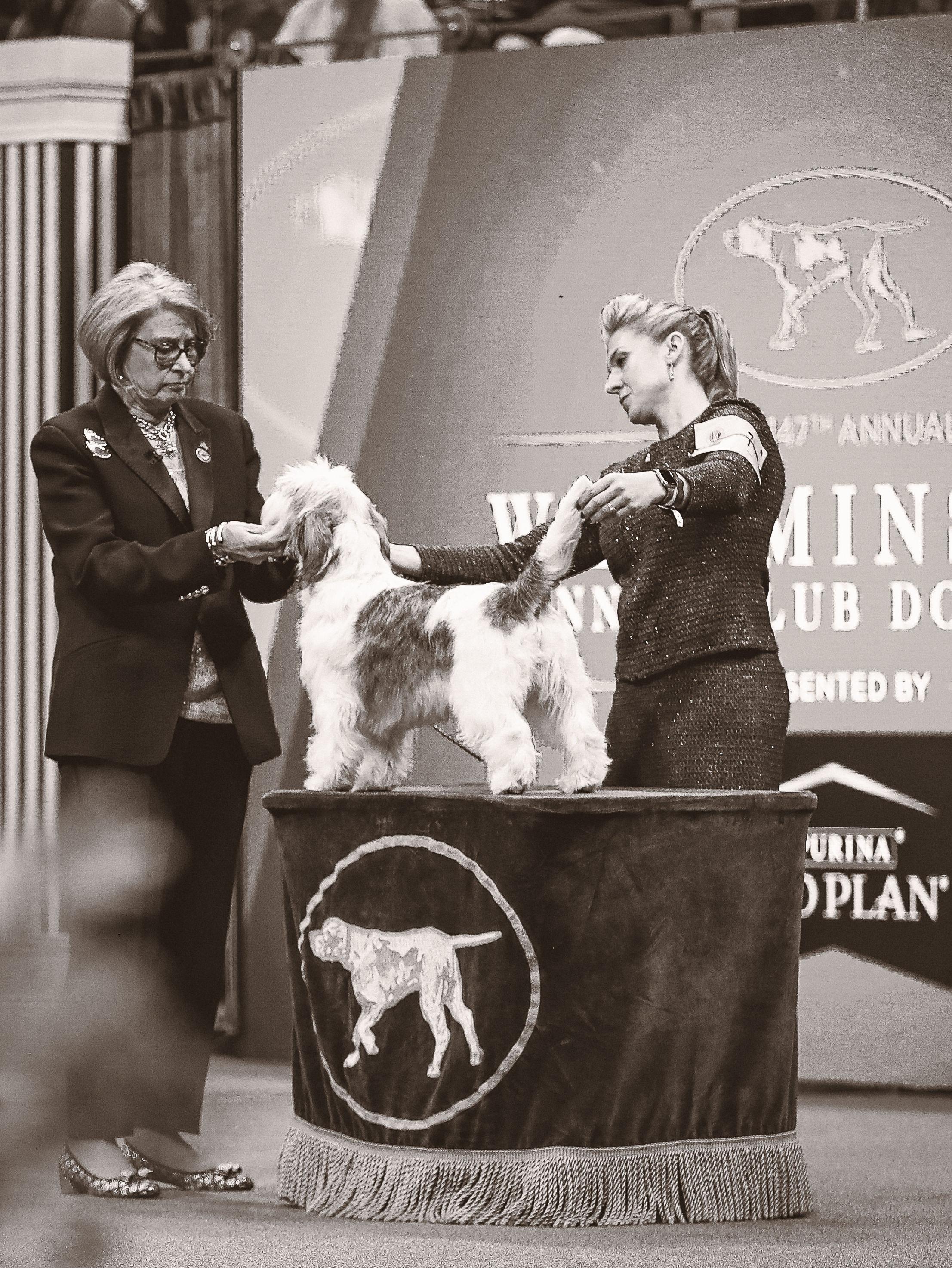
HOUND GROUP
CH SOLETRADER BUDDY HOLLY
Petits Bassets Griffons Vendeen
Breeder: Gavin Robertson & Sara Robertson

Owner: Janice Hayes & Lizzie Cadmore & Cathy Oneill & Donna Moore
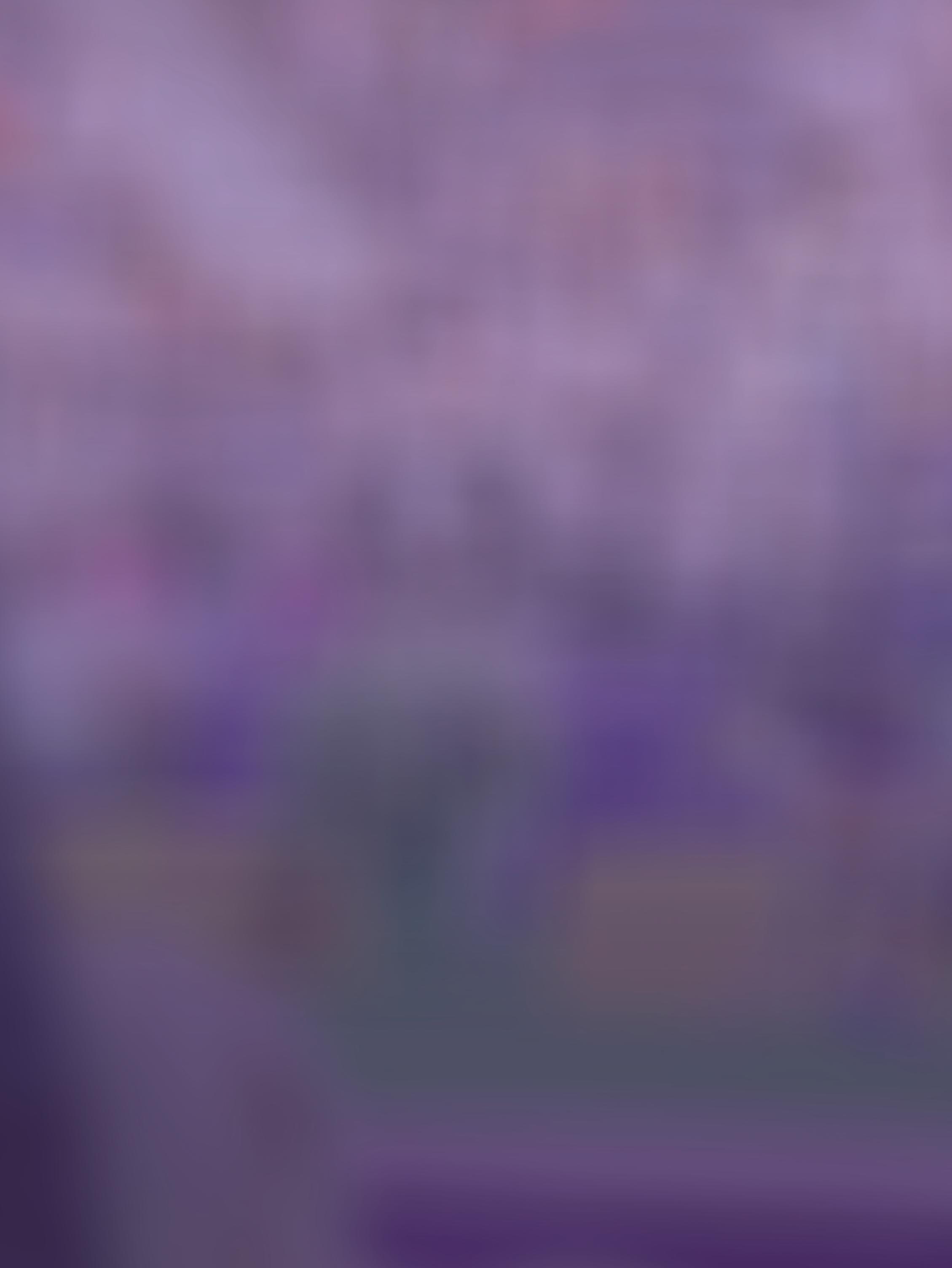
WESTMINSTER KENNEL CLUB DOG SHOW
1
2
GCHB CH ZAIDA BINT MUTI VON HAUSSMAN
Afghan Hound
Breeder: Ramon Podesta Valenzuela
Owner: Juan Pio Milano Ruiz & Wilmer Santiago & Armando Sobrado
3
GCHB CH HORSE AND HOUND FULL OF HOPE
Borzoi
Breeder: Pamela Buffington
Owner: Stuart McGraw & Shigeru Iwakiri & Theresa Nesbitt & Justine Spiers
4

GCH CH MONOCACY BEND’S LADY OF THE CHASE

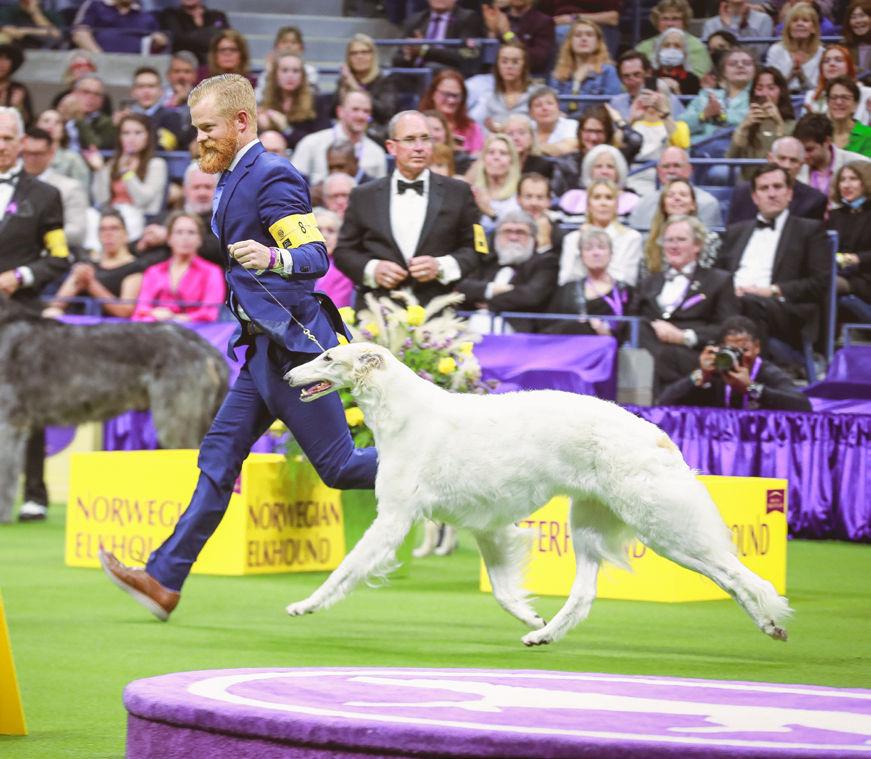

English Foxhound
Breeder: Toni Koerber
Owner: Toni Koerber & Sandra Nordstrom
WESTMINSTER KENNEL CLUB DOG SHOW
TOY GROUP
GCH CH PEQUEST RUM DUM

Pekingese
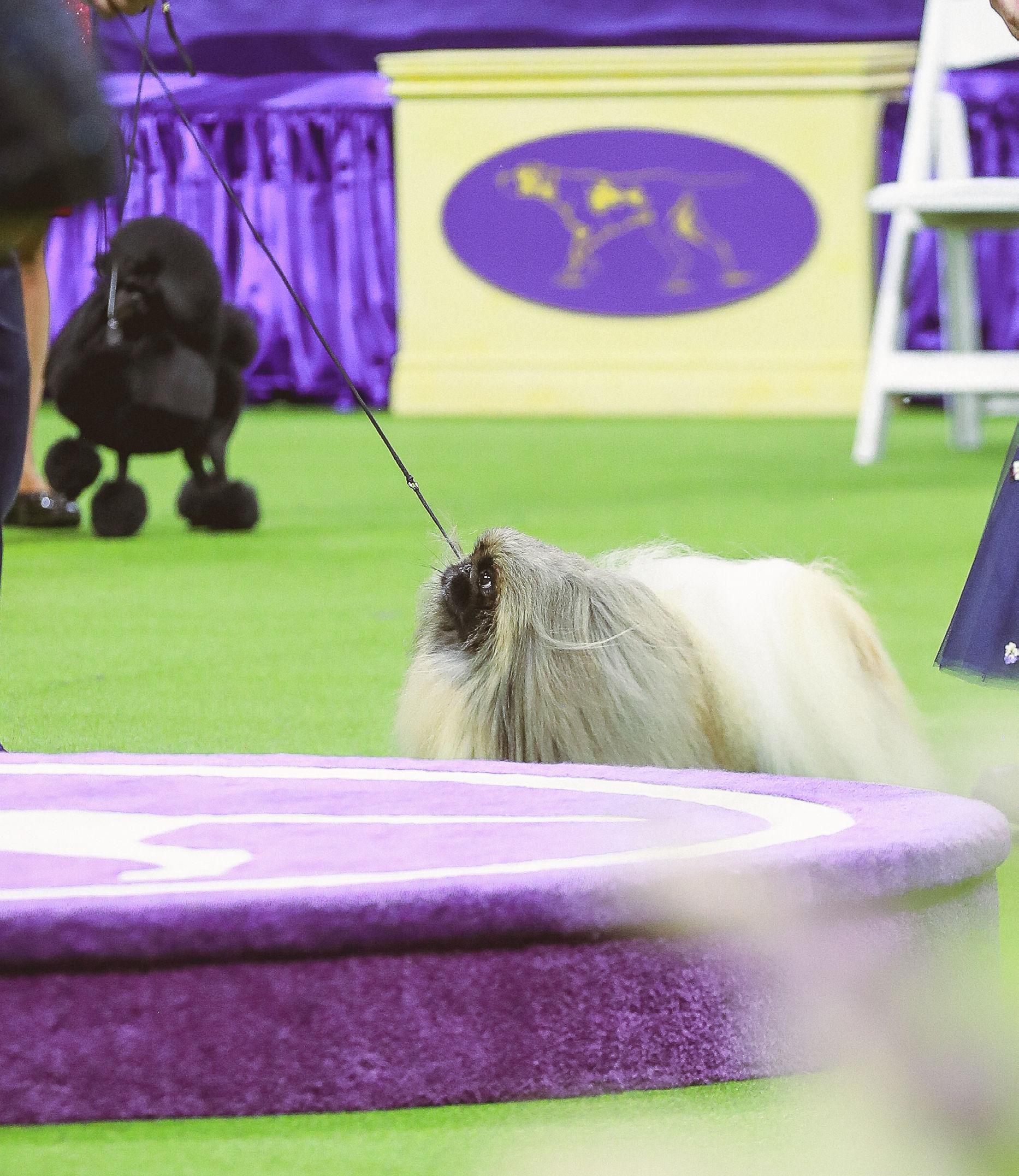
Breeder: David Fitzpatrick
Owner: David Fitzpatrick
WESTMINSTER KENNEL CLUB DOG SHOW
1
BEST IN SHOW MAGAZINE 92
2
GCHG CH HALLMARK JOLEI OUT OF THIS WORLD
Shih Tzu
Breeder: Luke Ehricht & Diane Ehricht
Owner: Bonnie J Miller DVM & Susan Carter & Luke & Diane Ehricht
3
GCHS CH RINGO STAR OT NEVSKOGO HOBBITA
English Toy Spaniels (Blenheim & Prince Charles)

Breeder: N E Sedykh
Owner: Patti Caldwell & Richard Caldwell
4

GCHS CH TACORI CIN-DON ANAMAECHIN
Japanese Chin

Breeder: Janet Lockyer & Beverly Merritt
Owner: David Gutierrez & Dean Schieler & Beverly Merritt

WESTMINSTER KENNEL CLUB DOG SHOW
BEST IN SHOW MAGAZINE 93
NON SPORTING GROUP


WESTMINSTER KENNEL CLUB DOG SHOW
1
GCHP CH FOX CANYON’S I WON THE WAR AT GOLDSHIELD CGCA CGCU TKN
French Bulldog
Breeder: Sandy Fox & Perry Payson
BEST IN SHOW MAGAZINE 94
Owner: Sandy Fox & Alex Vorbeck & Alex Geremia & Felicia Cashin & M Fox & P Payson
2
CH HALLIFAX HIGHTIDE HEDONIST AT AFTERGLOW
Poodle (Standard)
Breeder: Kicki Nielsen
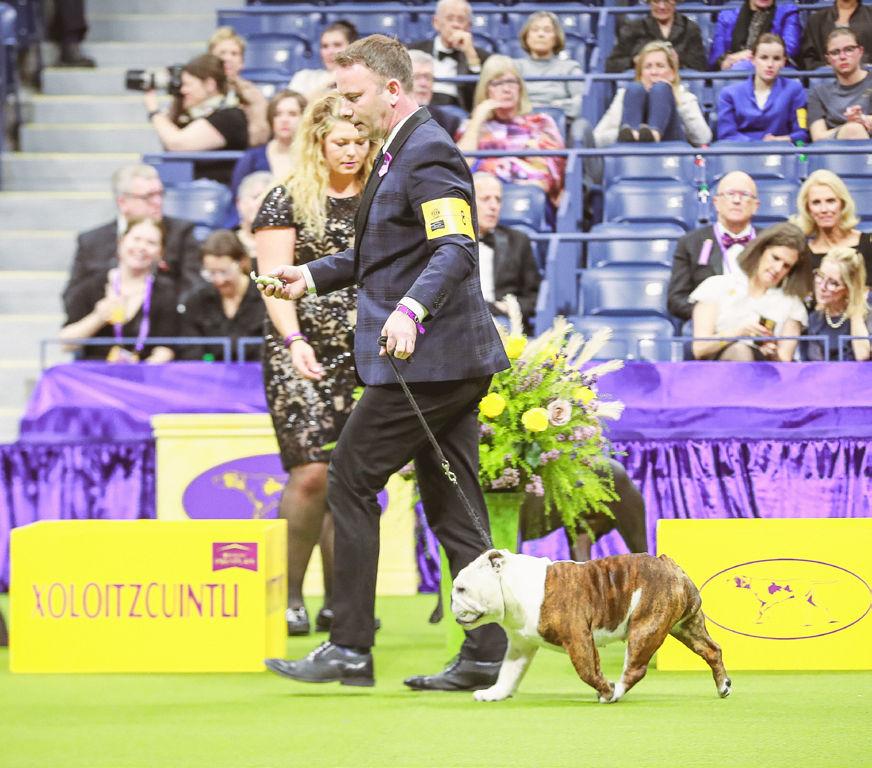
Owner: Missy Galloway & Jason Lynn & Tom Isherwood
3
GCHG CH CHEROKEE LEGEND ENCORE
Bulldog
Breeder: Cody T Sickle & Connie A Chambers

Owner: Kevin Mason & Natalie Mason
4

CH NEVERLAND STAZ MOON RIVER WIDER THAN A MILE
Bichon Frise
Breeder: Sanghoon Lee
Owner: Sanghoon Lee & Sol Kim

WESTMINSTER KENNEL CLUB DOG SHOW
BEST IN SHOW MAGAZINE 95
HERDING GROUP
1

GCHP CH NORTHBAY XSELL THAT’S
A WRAP
Australian Shepherd
Breeder: Heather Herron & Heather Sells
Owner: Bette A Evans

WESTMINSTER KENNEL CLUB DOG SHOW
BEST IN SHOW MAGAZINE 96
2

GCHG DC ACE’S CHAIN REACTION HXADS HXBD
Bouviers des Flandres
Breeder: Jill Reifschneider & Angie Motta & Rebecca Santos & Art Santos
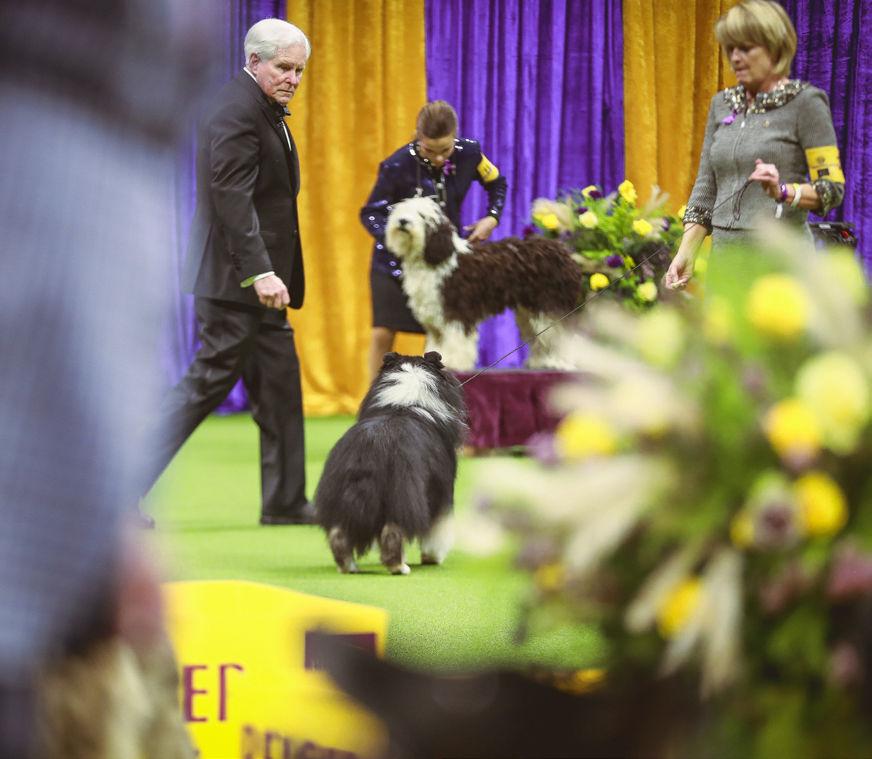
Owner: Jill Reifschneider & Sherrod McDaniel & Kristi Libertore & Tony Libertore
3 GCHS CH ROSMOOR AFTERGLOW
Shetland Sheepdog
Breeder: Jennie Hynes & Rose Tomlin
Owner: Jennie Hynes & Rose Tomlin
4 GCHS CH HAMMERSMITH HEATHCLIFF HEATHCLIFF CGCA TKN

German Shepherd Dog

Breeder: Anya Dobratz
Owner: Kathleen Barrow & Pat Zapf & Alyshia Funk
WESTMINSTER KENNEL CLUB DOG SHOW
BEST IN SHOW MAGAZINE 97
SPORTING GROUP
1

GCHB CH WINCHESTER’S AN APPLE A DAY JH
Setter (English)
Breeder: C Hodges & R Barnes & S McGraw & A & K Bernardin & S Nordstrom
Owner: S Nordstrom & C Hodges & R Barnes & S McGraw & A & K Bernardin
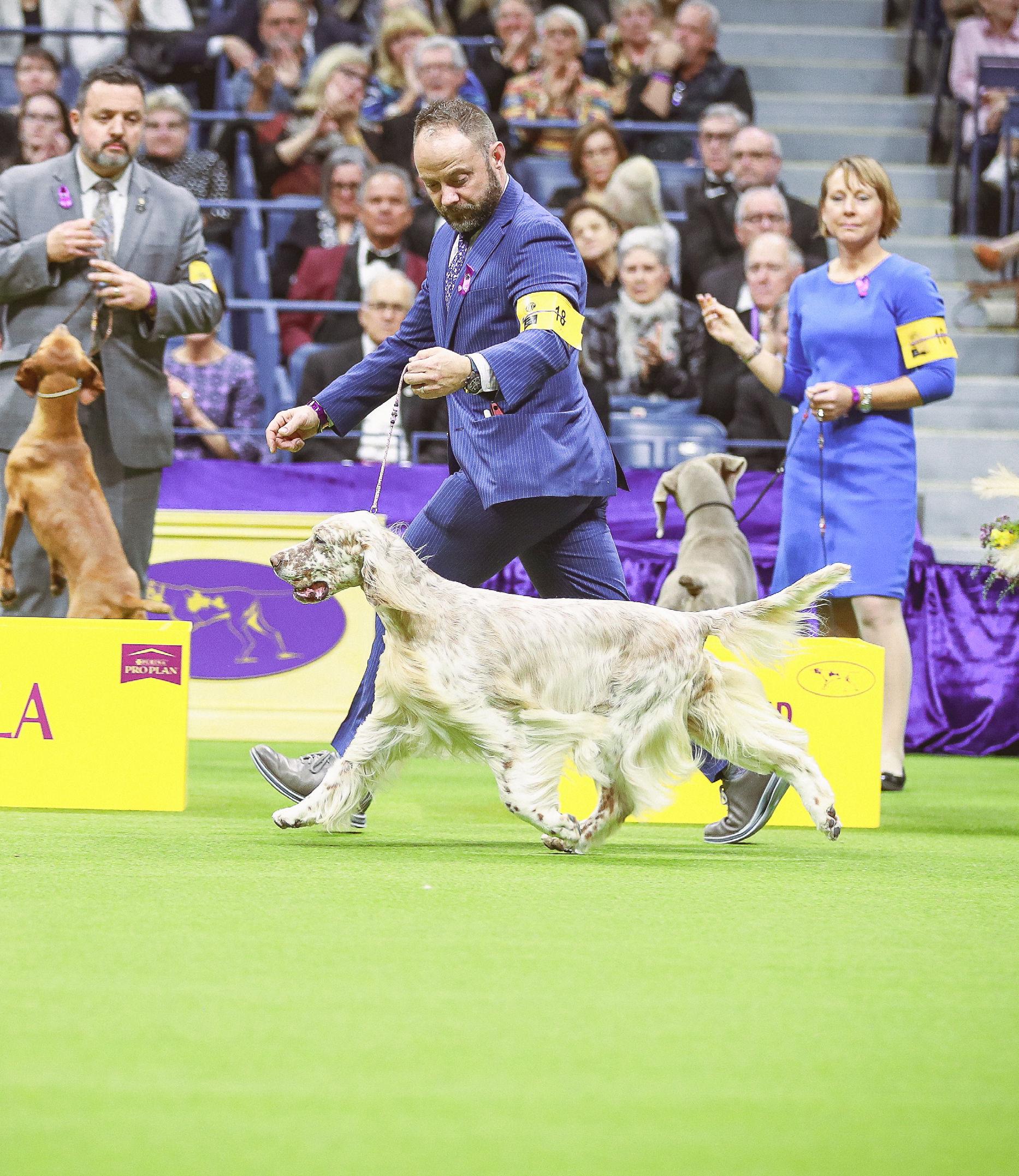
WESTMINSTER KENNEL CLUB DOG SHOW
BEST IN SHOW MAGAZINE 98
2
GCHS CH POOLE’S IDE SARGEANT SLOANE CD RN MX MXJ MXF
Spaniel (Irish Water)
Breeder: Gregory M Siner & Samuel A Jenio
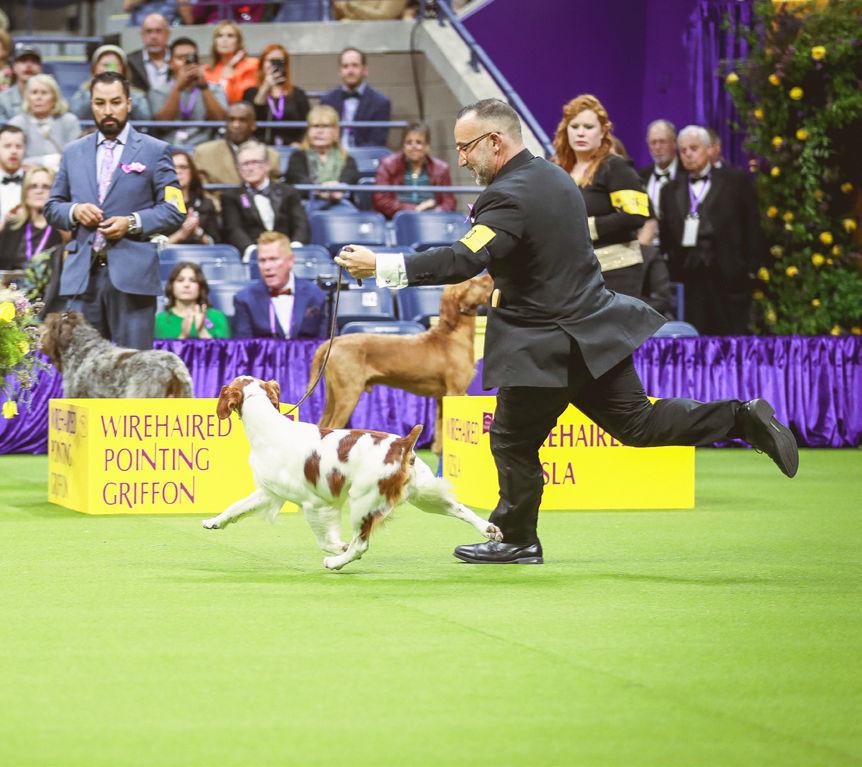
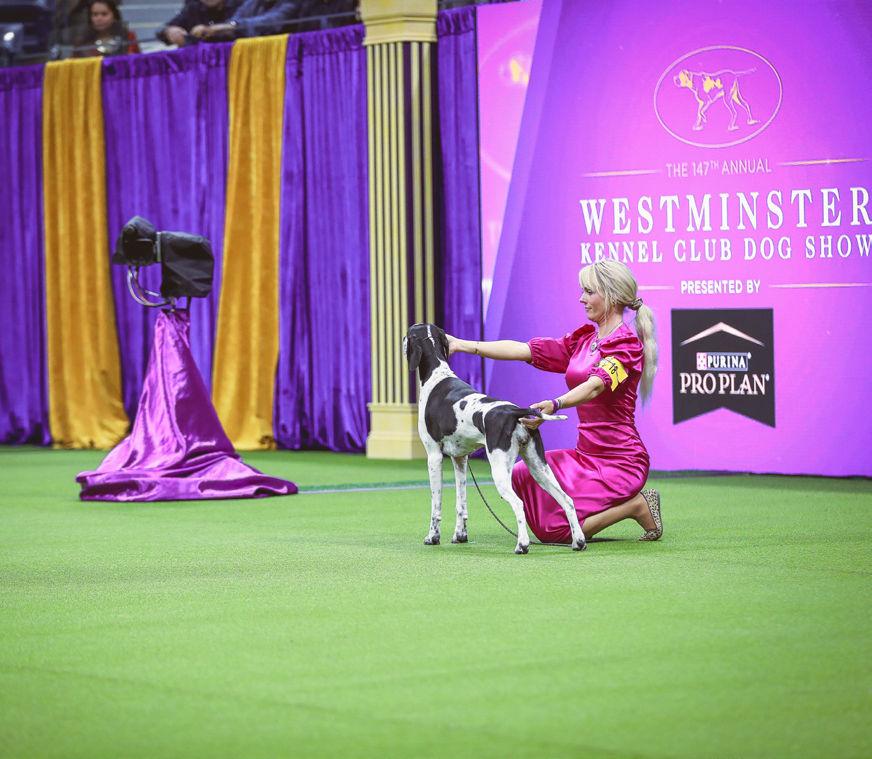

Owner: Stephanie O’Reilly & Gregory M Siner
3

GCHS CH ASPYRE CAT GOT UR TONGUE
Pointer
Breeder: A Lumsden & Julie Manser & J Lumsden
Owner: Dr Howard Spey & Karen R Spey
4 GCHP CH BRIGADIER SHAMROCK ALL SILVER STARS
Brittany
Breeder: Julie Lee & Mike Lee & Beth Rosener
Owner: Mike & Julie Lee & Beth Rosener
WESTMINSTER KENNEL CLUB DOG SHOW
BEST IN SHOW MAGAZINE 99
WORKING GROUP
GCH CH HEARTHMORE’S WINTERGREEN MOUNTAIN RN CGC TKN
Giant Schnauzer
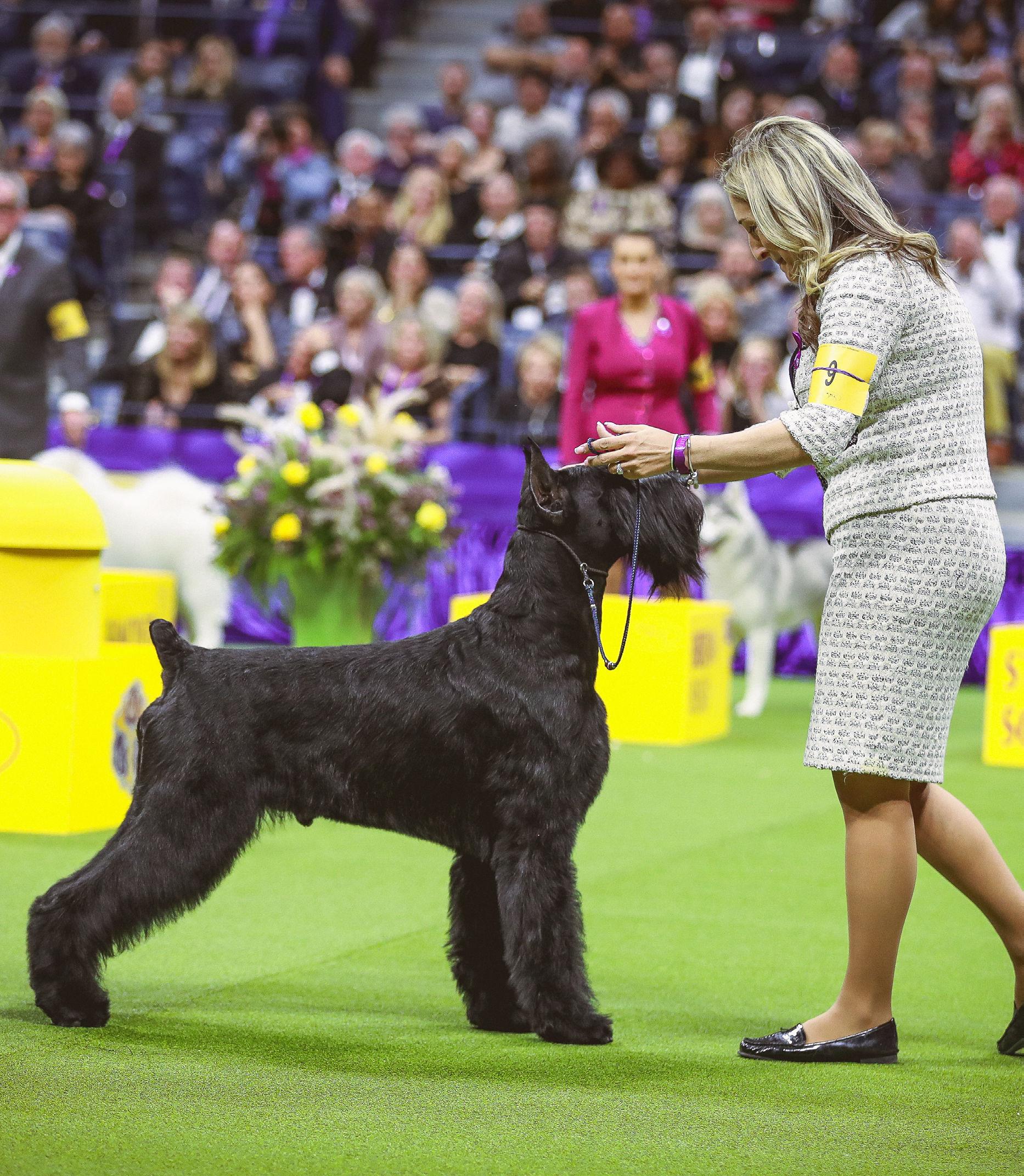

Breeder: Cherlann Ambrose
Owner: Katherine Bernardin & Cherlann Ambrose & Sandra Nordstrom
WESTMINSTER KENNEL CLUB DOG SHOW
1
BEST IN SHOW MAGAZINE 100
2
GCHS CH RIVERGROVES WONDER DOG AT PYRCREEK CGC TKN

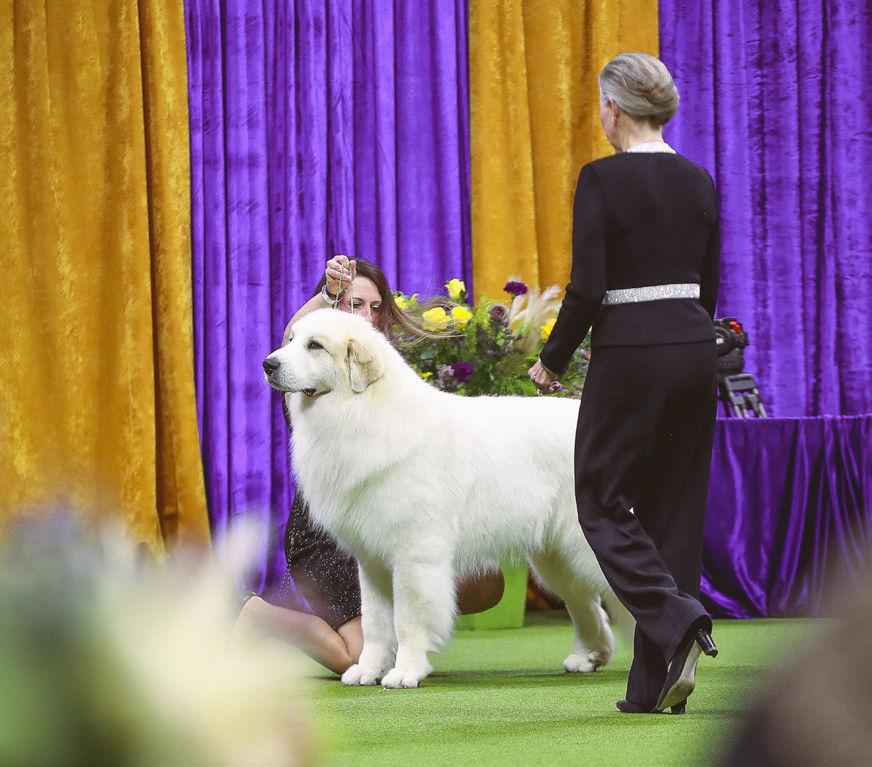
Great Pyrenee
Breeder: Jean A Boyd
Owner: Christine Palmer-Persen & Steven Axelrod & Julie Austin
3
GCHP CH CAMMCASTLE’S BACK TO THE FUTURE TKN
Rottweile

Breeder: Suzan Guynn
Owner: Sherry Roberts & Pamela Marsh & Jerry Roberts & Suzan Guynn
4

GCHG CH ALCHER TMAC WITCHCRAFT V GENTRY
Doberman Pinscher
Breeder: Deb Romans & Cheryl Green & Tony Mackenzie
Owner: Cheryl Green & Tony Mackenzie
KENNEL CLUB DOG
WESTMINSTER
SHOW
BEST IN SHOW MAGAZINE 101
TERRIER GROUP
1

GCHP CH LBK’S REBEL AND PROUD PARTY CRASHER
Giant Schnauzer
Breeder: Lacey Tulloch Benitez & Luis Manuel Benitez & Carly Kramer
Owner: Traci Chlan Luisma & Lacey Benitez & Ion Ispas & Jessica Branch

WESTMINSTER KENNEL CLUB DOG SHOW
BEST IN SHOW MAGAZINE 102
2
GCH CH KING’S MTN. MORTIMER MOUSE
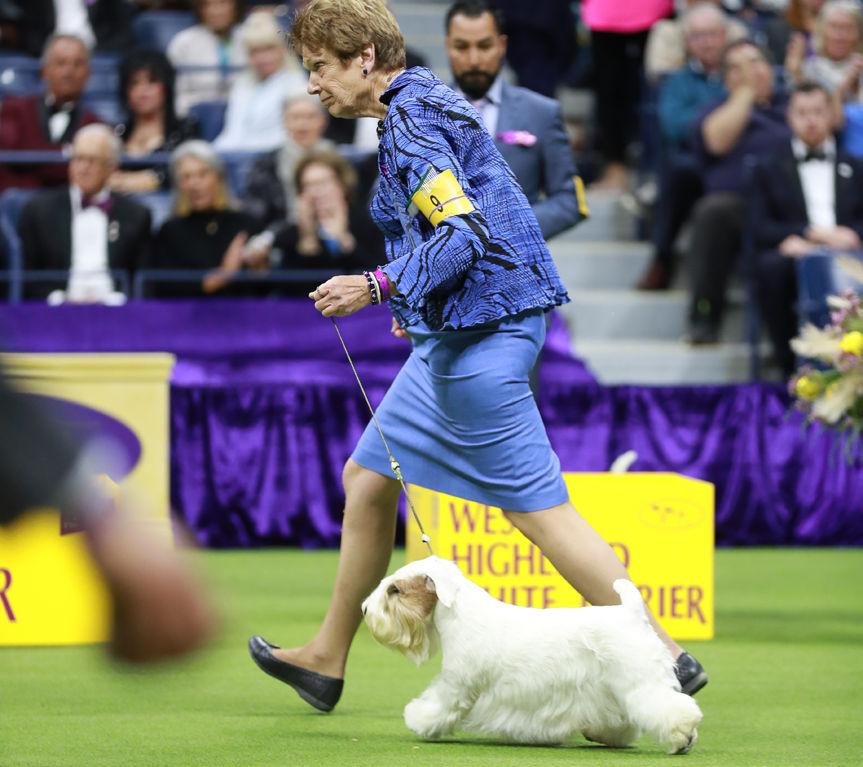
Dandie Dinmont Terrier
Breeder: Sandra Hickson & Betty-Anne Stenmark & B J Pumfrey

Owner: Betty Anne Stenmark & Bill B Gorodner
3
GCH CH KILGAWNY TAKE MY MAN
Kerry Blue Terrier

Breeder: John Garahan & Harold Quigg
Owner: John Garahan & Kathleen A Garahan
4

GCHG CH GOODSPICE EFBE MONEY STACHE
Sealyham Terrier
Breeder: Margery L Good & France Bergeron
Owner: M Good & F Bergeron & E Bennett & L Spiegel & S Middlebrooks
WESTMINSTER KENNEL CLUB DOG SHOW
BEST IN SHOW MAGAZINE 103





BEST IN SHOW MAGAZINE 104
WESTMINSTER KENNEL CLUB DOG SHOW
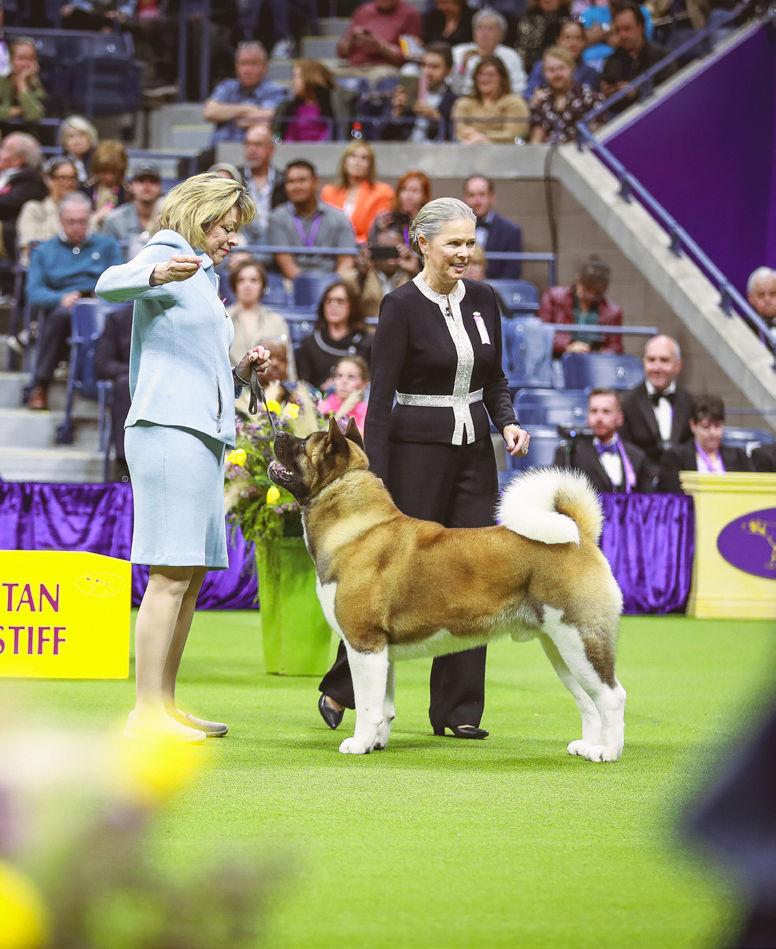




BEST IN SHOW MAGAZINE 105
KENNEL
WESTMINSTER
CLUB DOG SHOW
WESTMINSTER KENNEL CLUB DOG SHOW



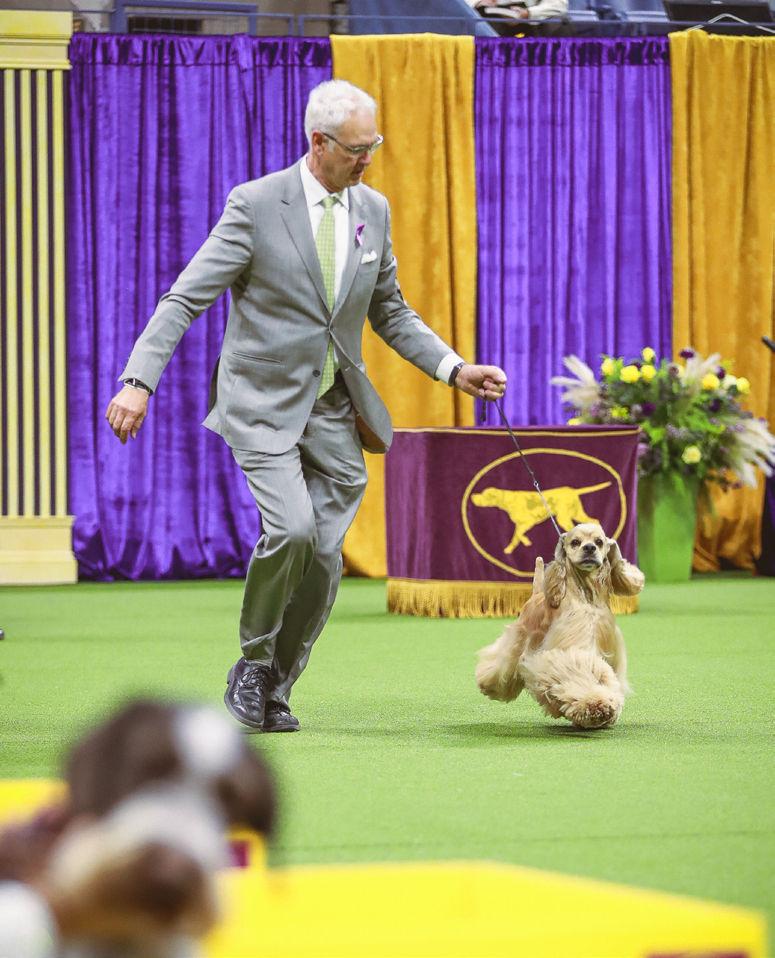
BEST IN SHOW MAGAZINE 106

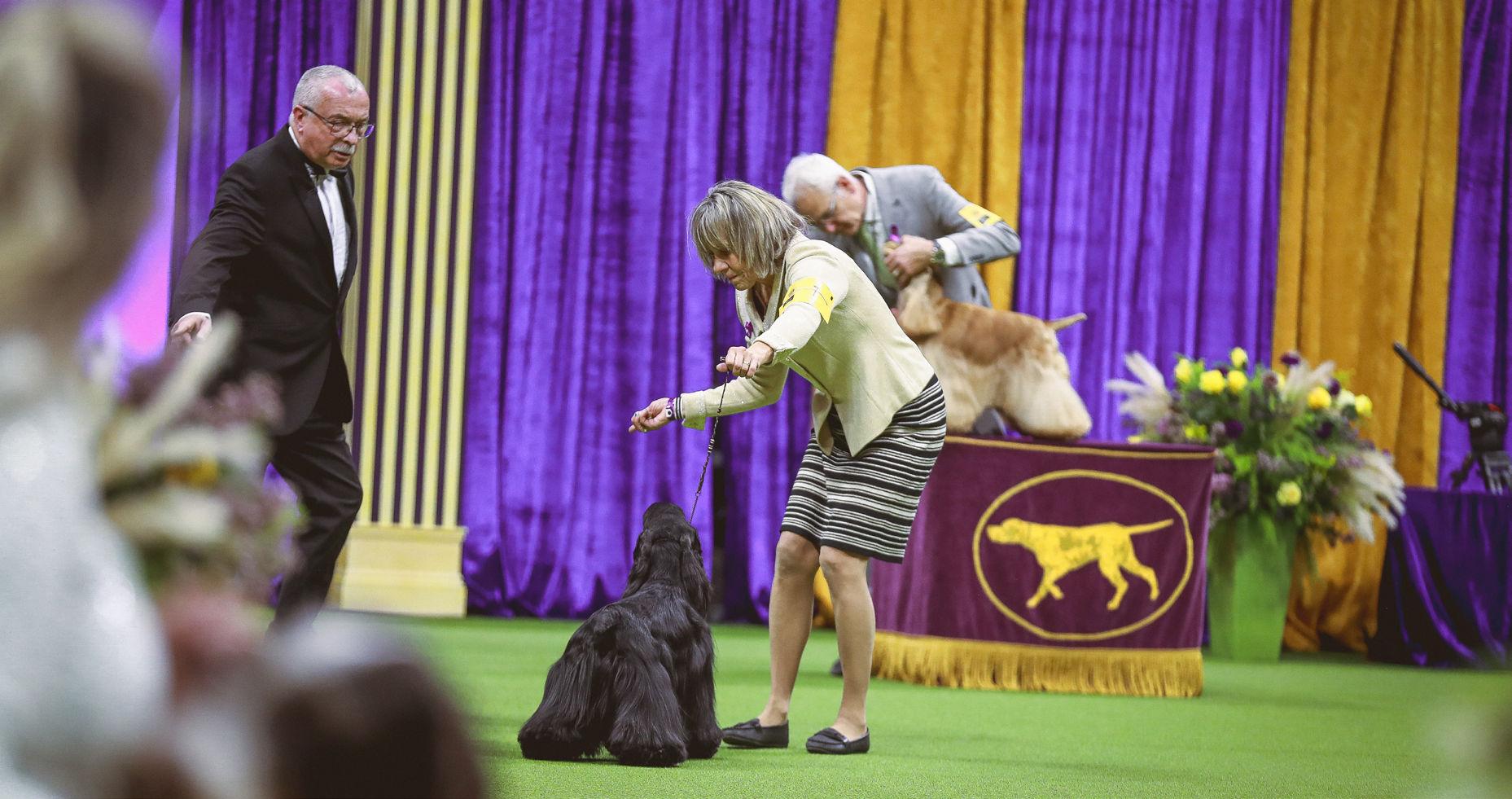


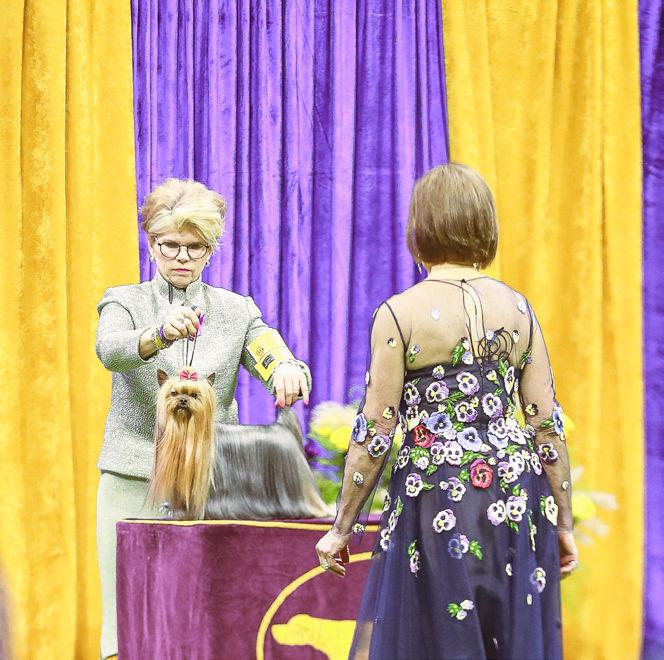
BEST IN SHOW MAGAZINE 107 WESTMINSTER KENNEL CLUB DOG SHOW

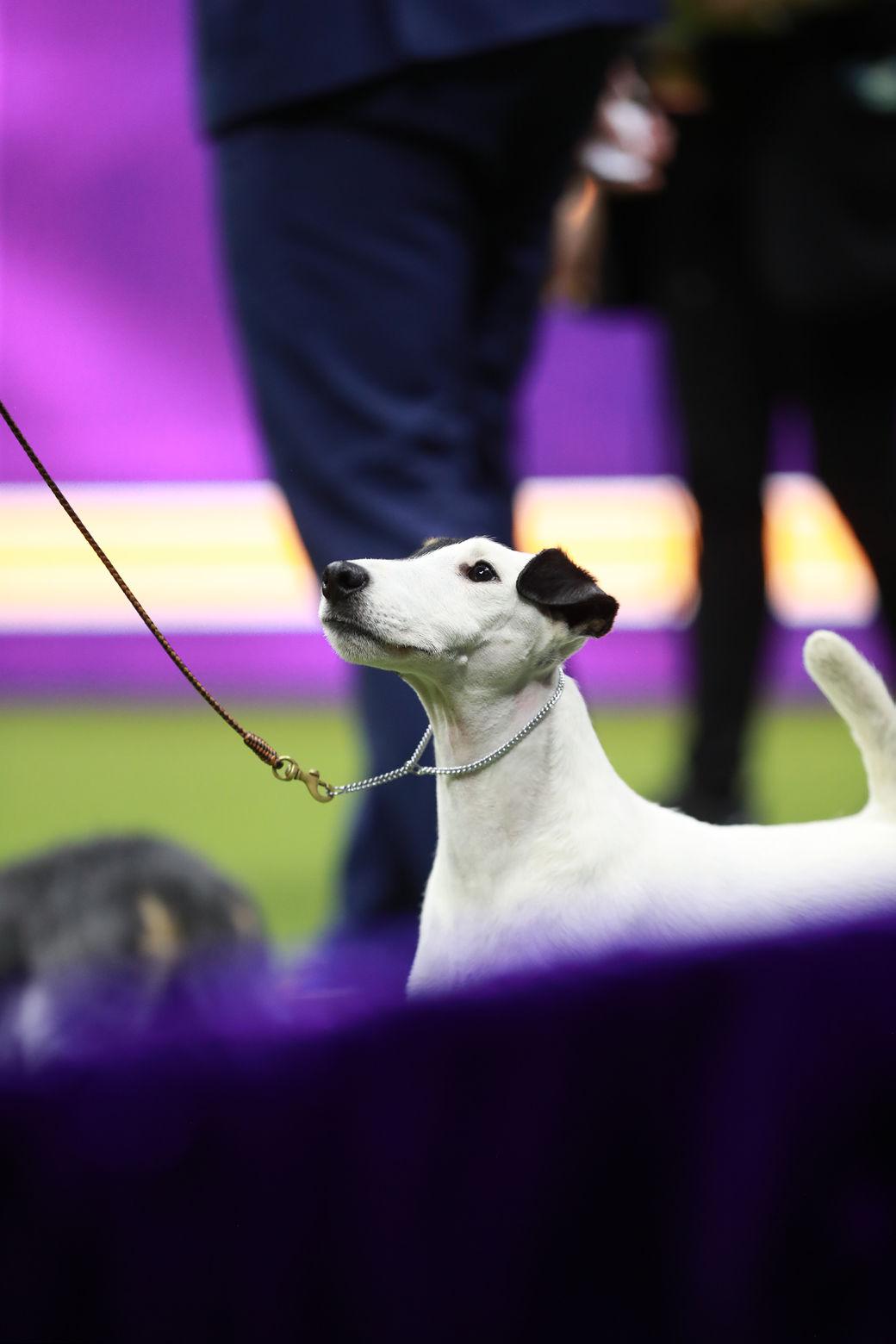

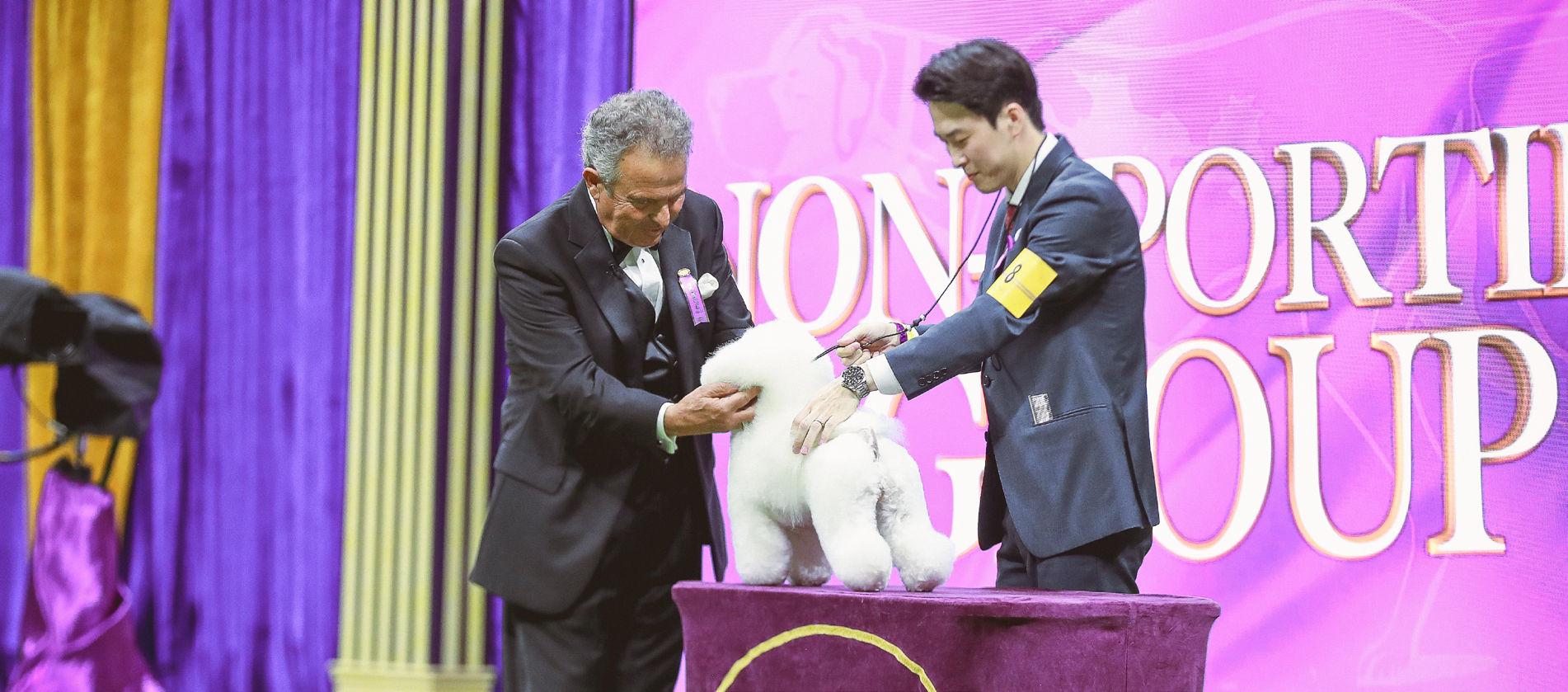
BEST IN SHOW MAGAZINE 108
WESTMINSTER KENNEL CLUB DOG SHOW



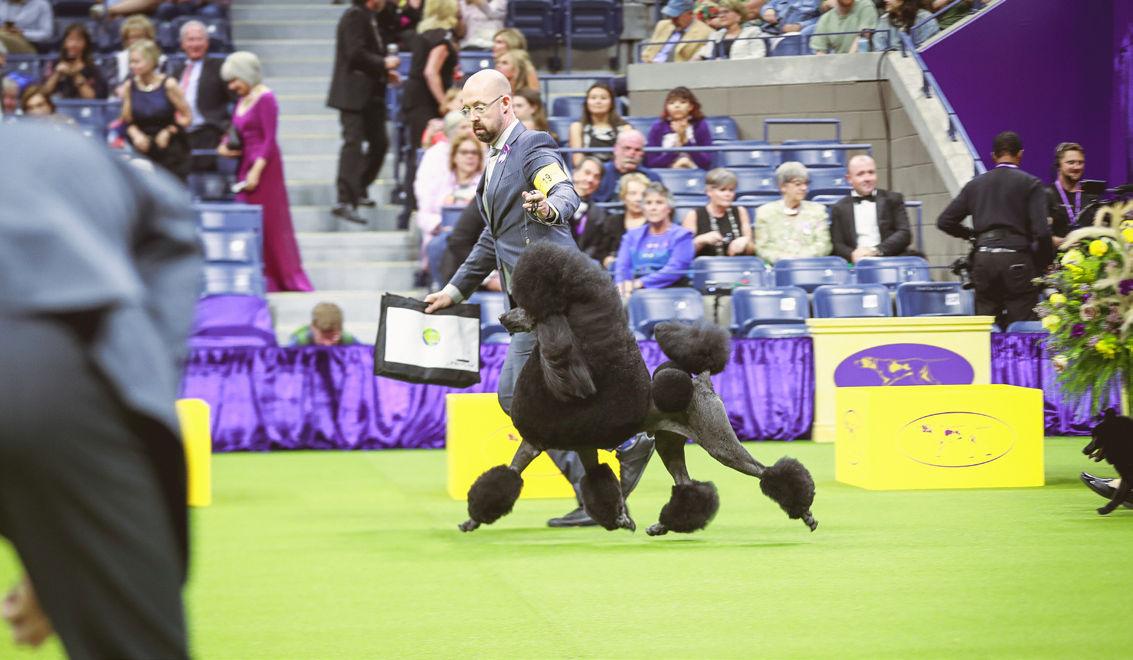
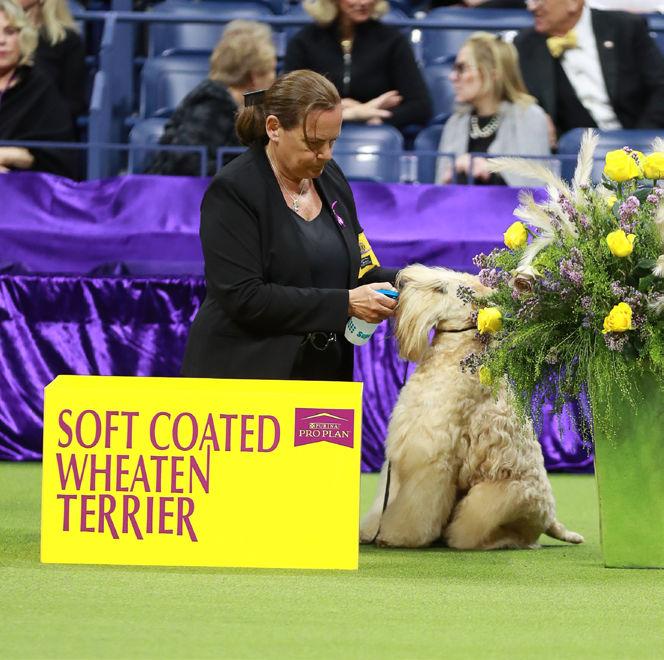
BEST IN SHOW MAGAZINE 109 WESTMINSTER KENNEL CLUB DOG SHOW
BEST IN SHOW



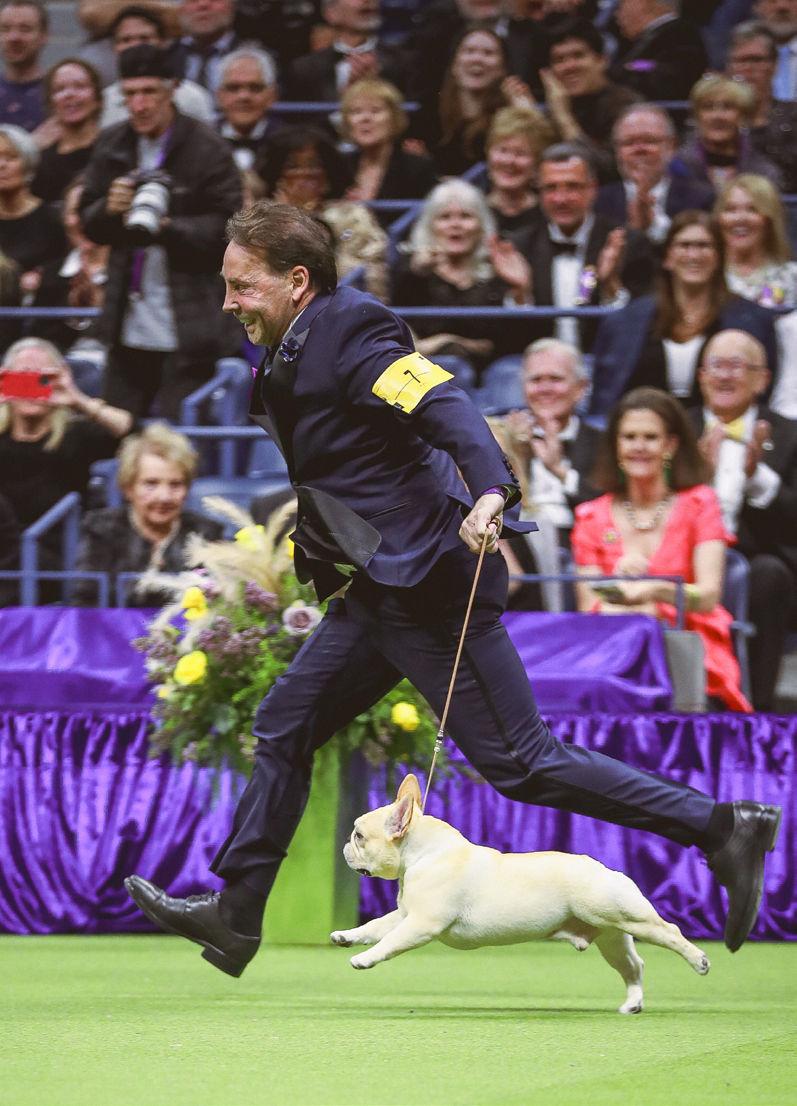
BEST IN SHOW MAGAZINE 110
WESTMINSTER KENNEL
CLUB DOG SHOW
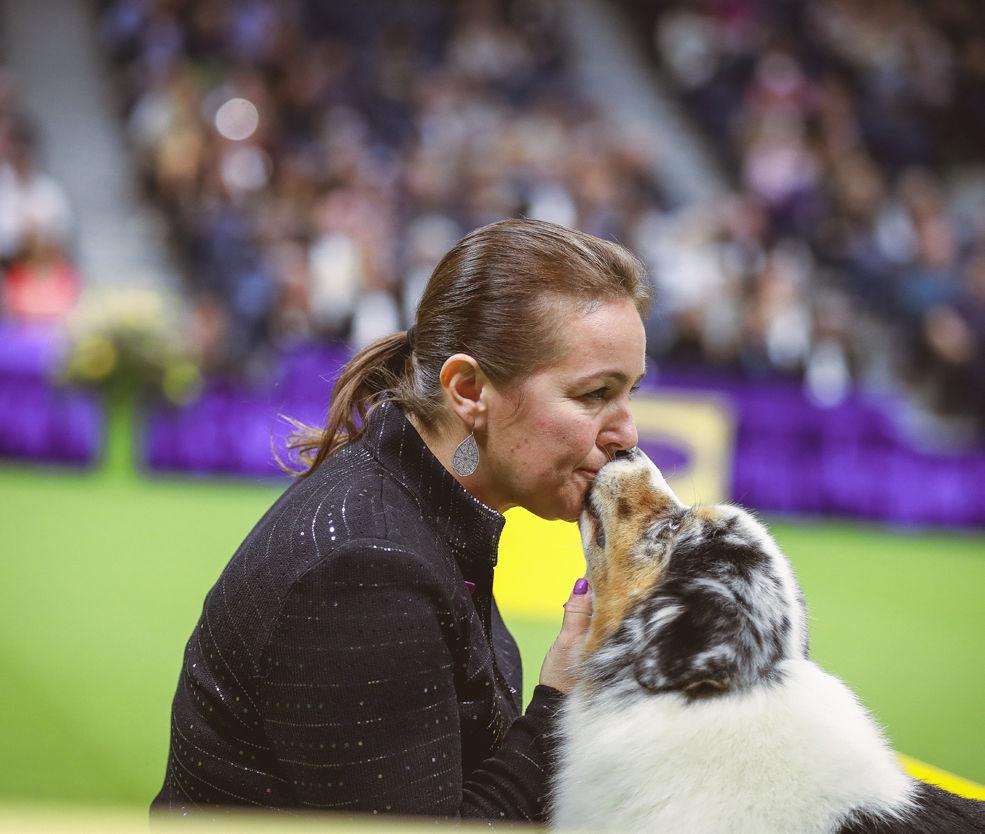
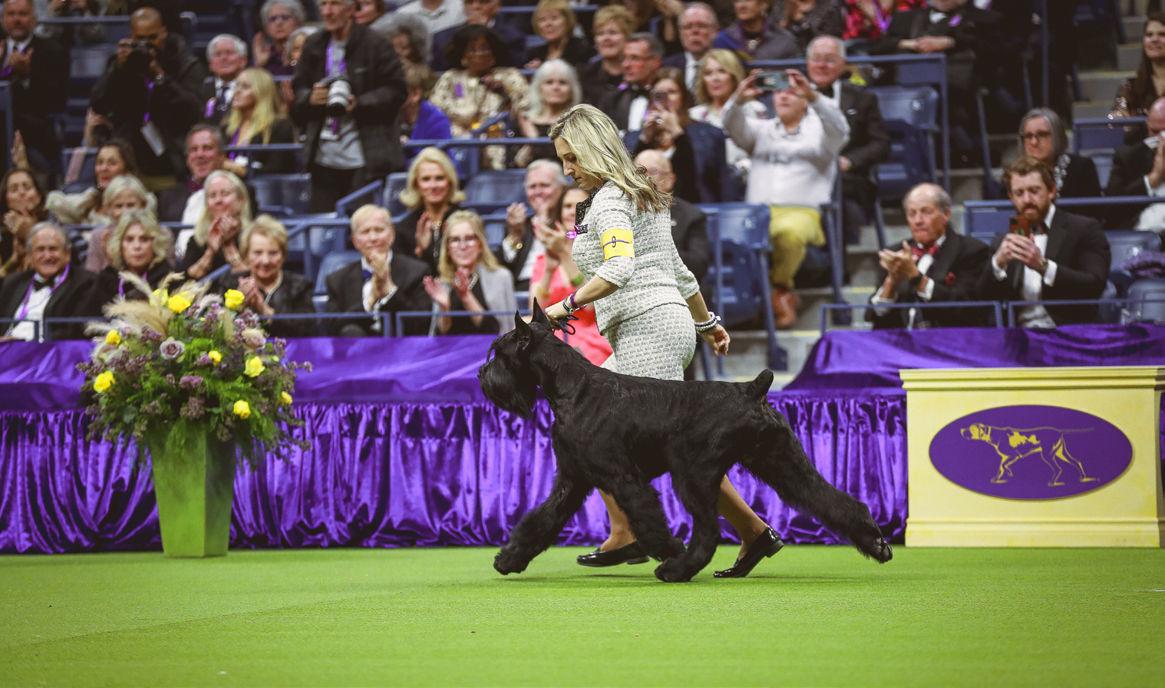
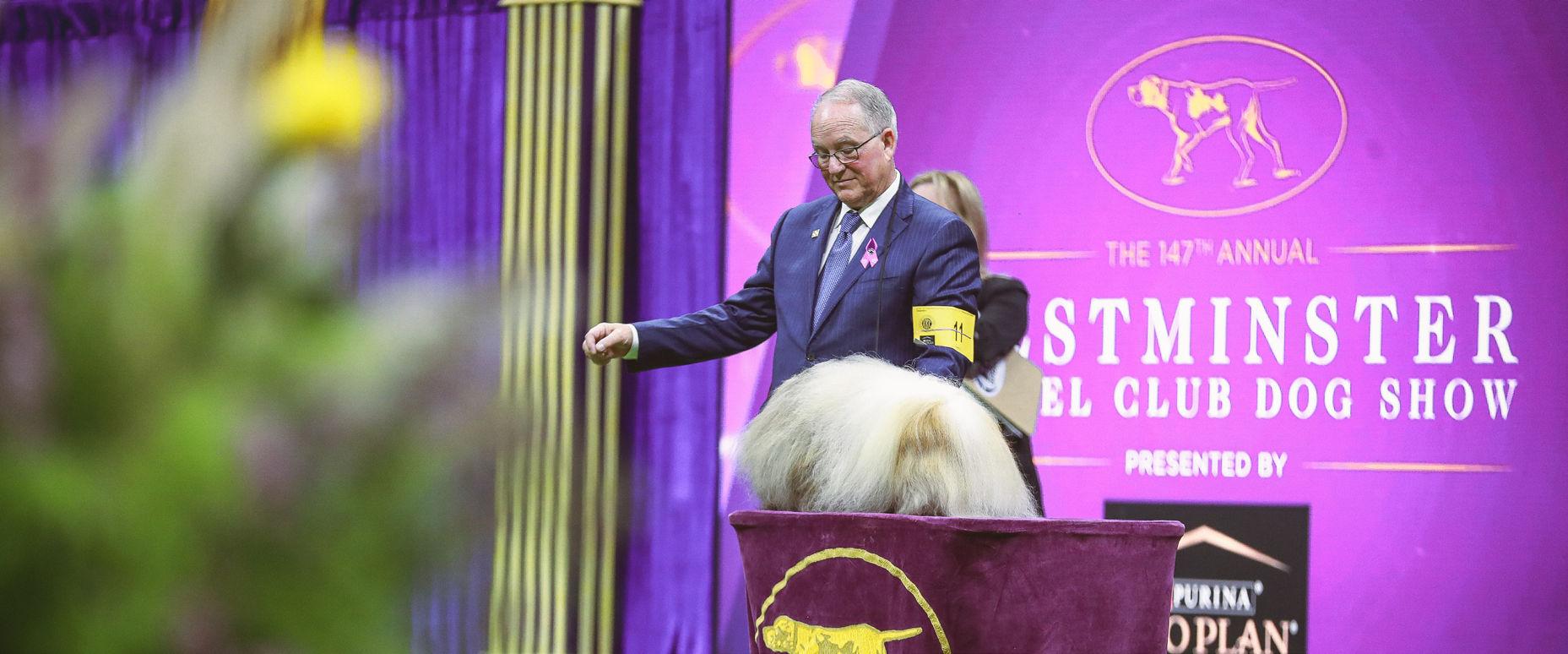

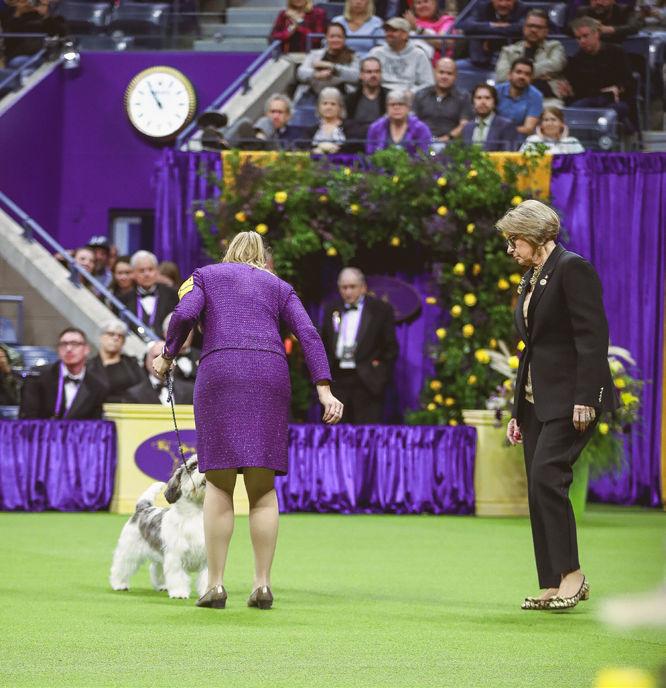
BEST IN SHOW MAGAZINE 111
KENNEL CLUB
WESTMINSTER
DOG SHOW
WESTMINSTER KENNEL CLUB DOG SHOW

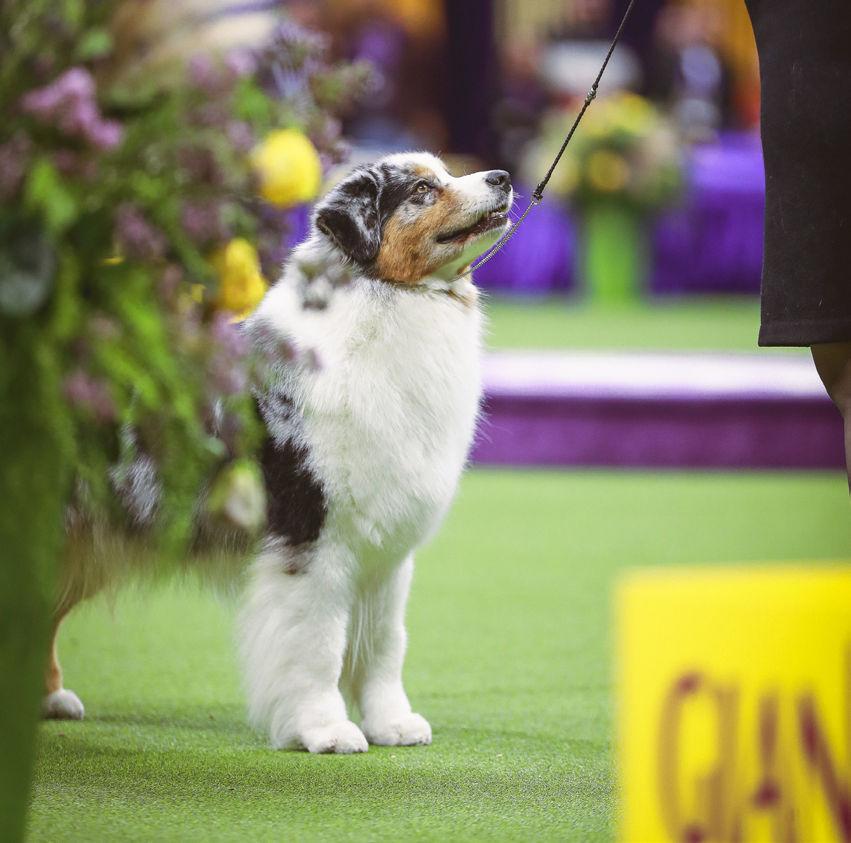
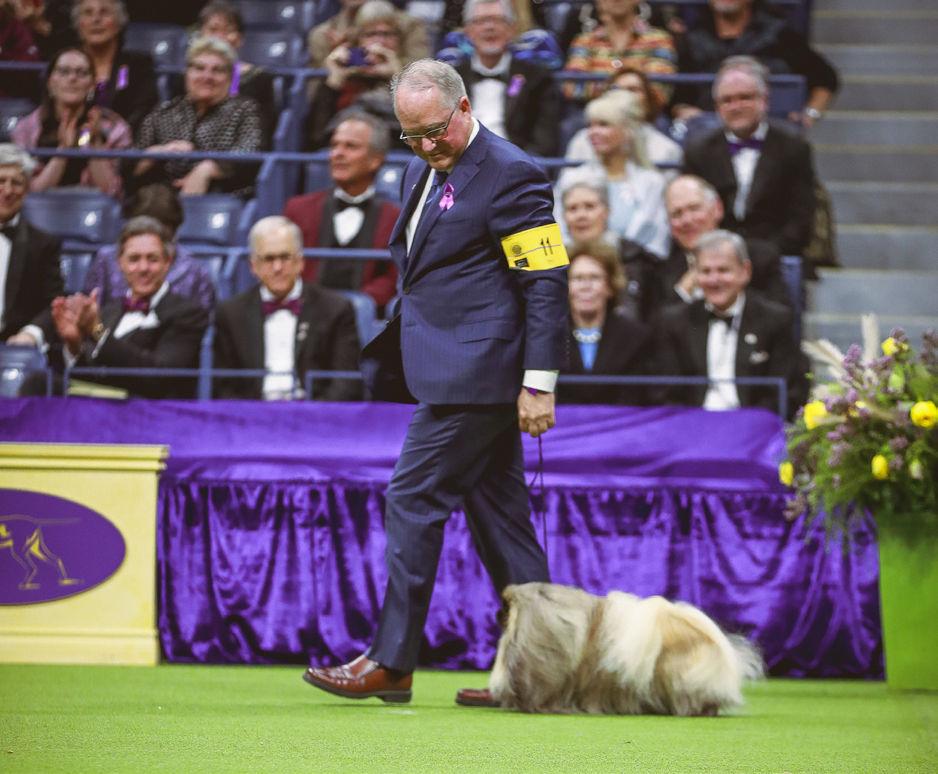
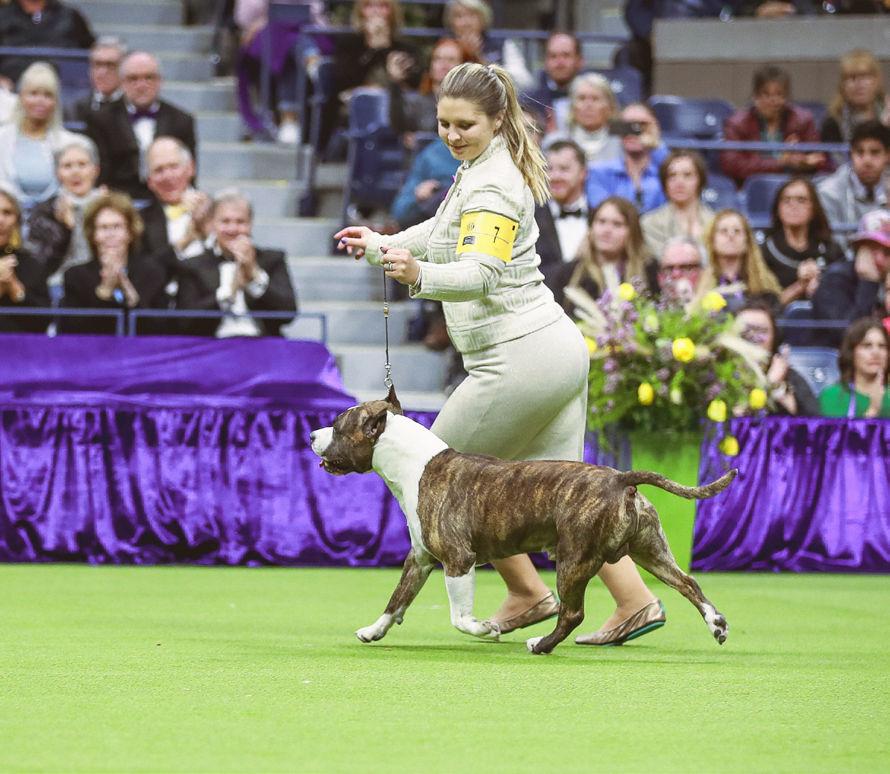
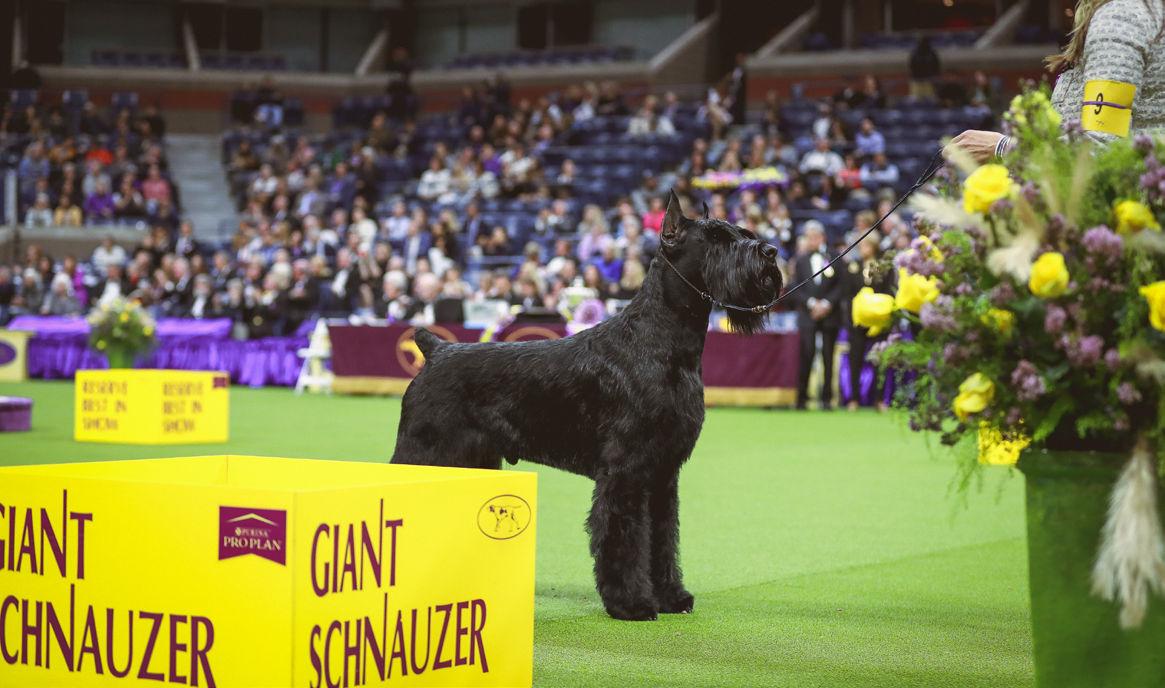

BEST IN SHOW MAGAZINE 112
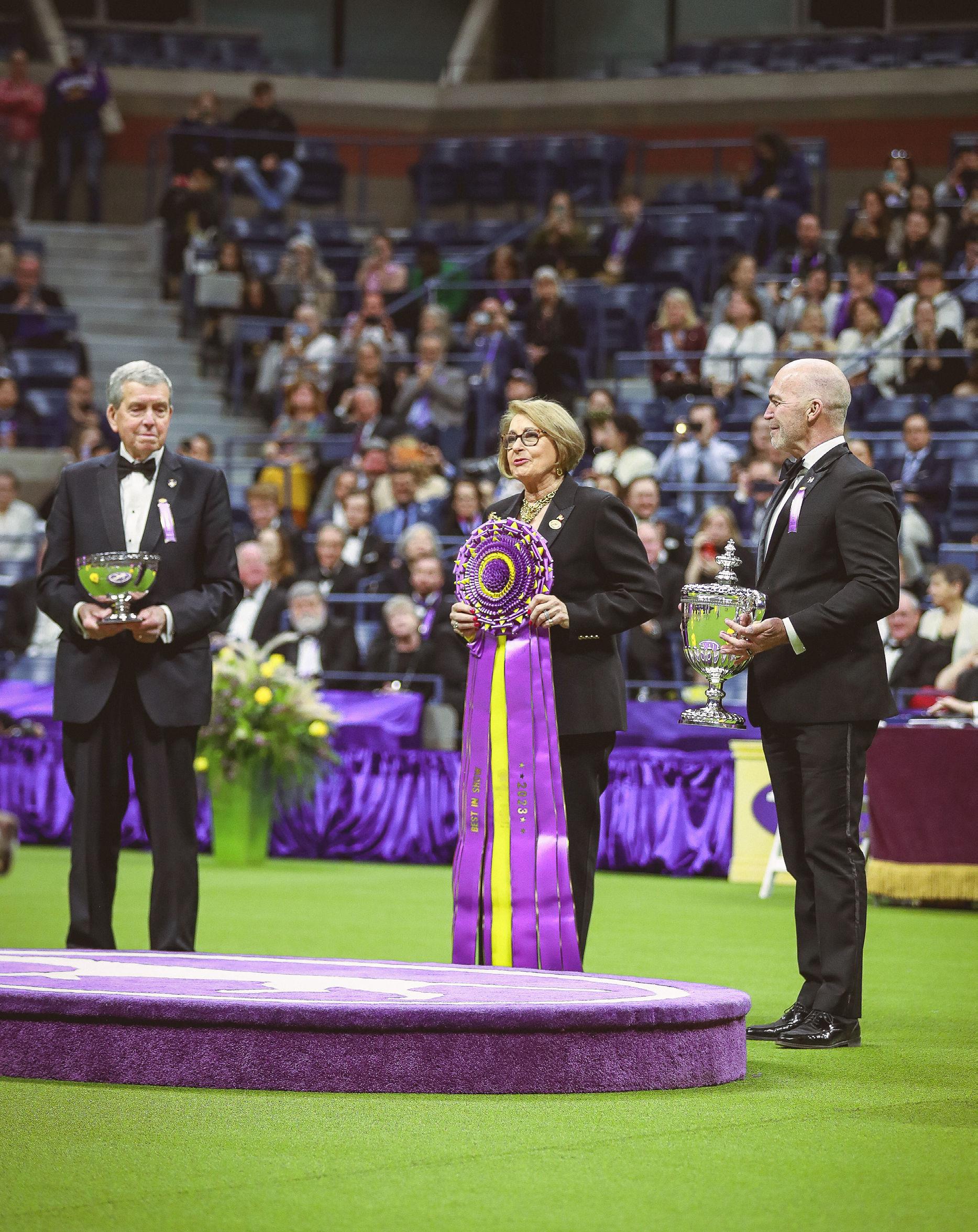
BEST IN SHOW MAGAZINE 113 WESTMINSTER KENNEL CLUB DOG SHOW
BEST IN SHOW


WESTMINSTER KENNEL CLUB DOG SHOW
R. BEST IN SHOW
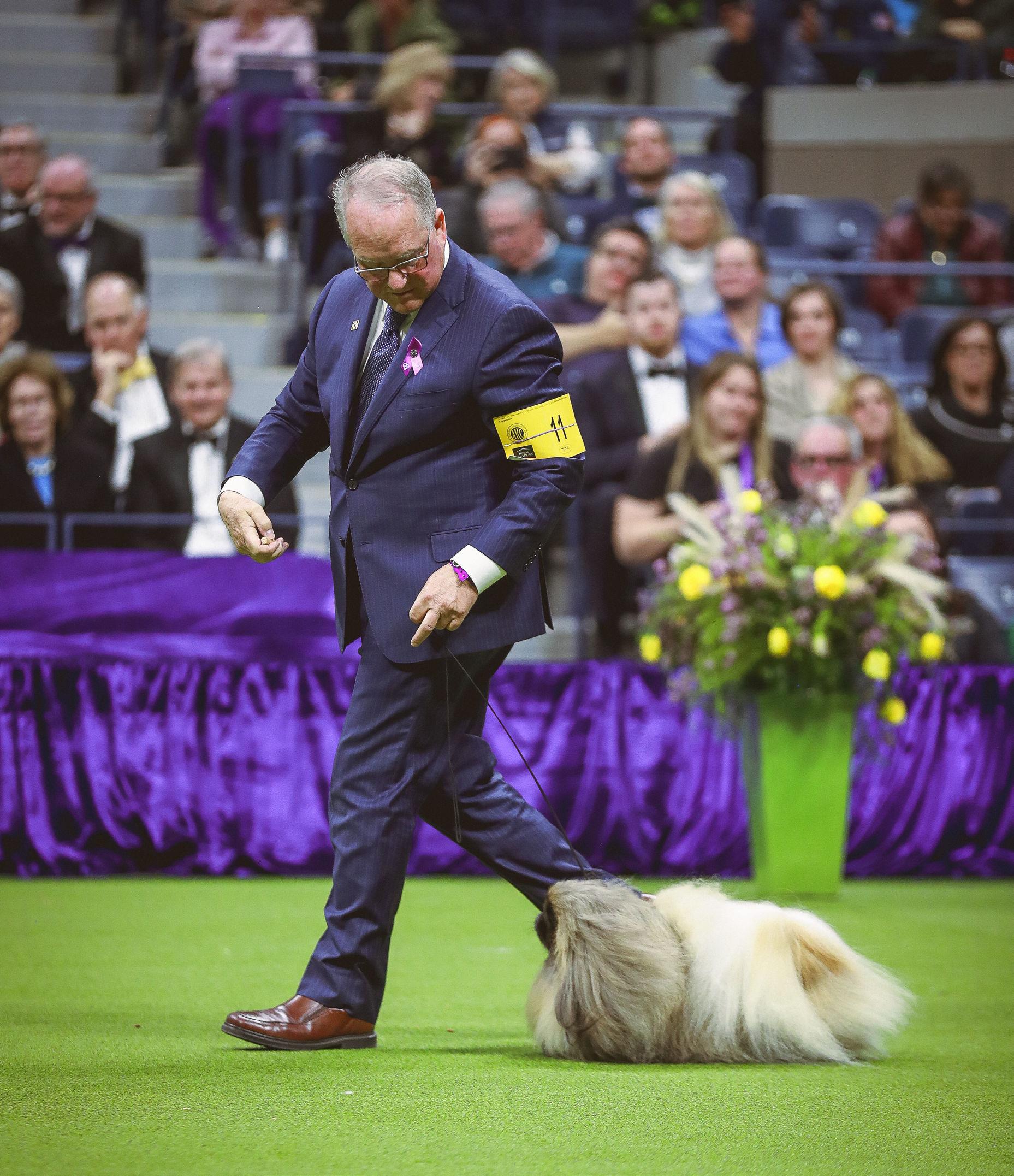

WESTMINSTER KENNEL CLUB DOG SHOW

 INTERVIEW WITH JUNIOR HANDLER
INTERVIEW WITH JUNIOR HANDLER
LenoreHedemark
Junior Handler Interview

Could you tell our readers about your entry into the world of dogs and dog shows?
Unlike many juniors, I don’t hail from a show family. I wasn’t brought up in a show ring, but I did spend every
February watching the Westminster Kennel Club. When I was around ten, my sister and I realized that we could show dogs just like the people we saw on television. I got my start by showing my aunt’s retired racing Greyhound, which was registered through PAL. Through this experience, I met some terrier handlers and breeders, who offered me the opportunity to show and co-own a Cesky Terrier. I’ve been enamored with terriers ever since.
Who were your mentors when you started your journey with dogs, and do you have the same or additional mentors now?
TerrieHouckandStacyZimmermanweremymentors from the start. Terrie Houck is a breed-specific Miniature Schnauzer handler and breeder, and I have been showing and learning to groom Schnauzers with her since I was eleven. Stacy is a Rat Terrier breeder from whom I’ve had the privilege to learn about the Rat Terrier breed. As I grew up knowing them, they have become like a second family to me. Alongside Terrie and Stacy, I have also worked with Ariel and Sarah Cukier. I wanted to diversify my knowledge by learning how to condition and present a wider array of breeds.
Which breed or breeds have you handled?
My primary breeds have always been Miniature Schnauzers and Rat Terriers. Although these are my mainstays, I’ve had the pleasure of showing many other breeds and dogs, thanks to my handlers/ mentors. I’ve won the best juniors title with more than ten different breeds. Most recently, I’ve shown an Ibizan Hound, a Doberman, a Pointer, and a Soft Coated Wheaten Terrier.
Are you currently a breeder, and do you see yourself breeding dogs in the future?
As my parents don’t permit me to keep any more dogs in the house, I’m not currently breeding. However, I have assisted breeders with their litters. I’m hopeful to have my first bred-by litter of Rat Terriers on the ground soon, in collaboration with my mentors. I certainly envision breeding as part of my future.
In your opinion, what is the purpose of dog shows?
The main purpose of dog shows is to assess the breeding stock to ascertain which dogs are the best representations of their breed.
Do you find it challenging to balance your personal life, school, and dog shows? How do you manage to fit everything in?
Balancing school with dog shows has always been a struggle for me. I’m currently in a CCP program at my local community college, which is essentially an early college program that enables high school students to attend college classes. I take almost all my classes online to facilitate my travel and assistance to handlers. My homework gets done wherever and whenever possible – be it during ring-times, while the dogs are in x-pens, or even at dinner. I also catch up on a lot of schoolwork during long road trips.
What career do you aspire to have as an adult?
Even though I’d love to be a handler, my parents and mentors have always emphasized the importance of an education and having a backup plan. I’m considering a career in mathematics or business, particularly something related to statistics.
BEST IN SHOW MAGAZINE 119
INTERVIEW WITH JUNIOR HANDLER
Amelia taught me everything I know about handling, and her tips echo in my mind every time I step into the ring. I hope to someday possess the same determination, talent, and, most importantly, the willingness to help others that my sister embodies.
If you could be an assistant for any handler, past or present, who would it be and what do you hope to learn from them?
I would choose to assist Maripi Wooldridge. Her understanding of terriers and their conditioning is truly inspiring.
Is there a particular dog, from any point in time, you wish you could handle and why?
Do you prefer handling table dogs or larger dogs?
That’s a tough question. I feel most comfortable handling table dogs, but I enjoy the challenge posed by larger dogs and stepping out of my comfort zone with them.
Is there a certain type of coat you prefer to prepare for the ring?
My favorite coat to prep for the ring would have to be a stripped/wire coat. I also enjoy drying and prepping Skye Terrier coats. I find something rather peaceful about preparing the higher-grooming breeds.
Which professional handlers or owner handlers inspire you?
When asked who inspires me the most in the dog show world, I’ll always mention my sister, Amelia Hedemark. Our Mini Schnauzer, Otto, was her first show dog, and they accomplished so much together.
From the current specials, I’d definitely pick the Kerry Blue Terrier, BIS BISS GCH Kilgawny Take My Man “Jolene”, currently being shown by Dana BrysonBenn. Dana has her in such beautiful trim, and there’s just something eye-catching about Jolene. She’s a real showstopper.

Do you show your own dogs in breed competitions? If so, what breeds?
I show my Rat Terrier in breed competitions and have shown some of my Schnauzers in the past.
What have been some of your greatest achievements in the breed ring?
My greatest achievement in the breed ring was winning Best Of Breed at the Westminster Kennel Club this year with my Rat Terrier puppy, making him the youngest Rat Terrier to ever win the breed there. I also had the honor of guiding him to #1 Rat Terrier across all systems.

BEST IN SHOW MAGAZINE 120

If you couldn’t show your own dogs, what handler would you ask to show them?
If I couldn’t handle my own dogs, I would love to see Diego Garcia take on the task. His handling is like an art form and it’s always a pleasure to watch him with each of his dogs.
You recently had a great placement at the AKC show in Orlando. Could you please share this experience with our readers?

My Rat Terrier, Hunter, and I placed 3rd in the National Owner-Handled Series Finals, making history as the first Rat Terrier to ever place in the group there. That was my last time showing him after our four-year partnership, so it was a very bittersweet moment. He was my first successful dog in the breed ring and taught me so much during our years as a team.
What is your favorite show of the year to attend, and why?
My favorite show of the year is definitely the local show in Raleigh, NC. The kennel clubs are incredibly supportiveofjuniorsandofferagenerousscholarship for the Best Junior Handler in Cluster. That was where I first participated in Junior Showmanship, so I have many great memories there. It’s also one of the only shows that my parents are able to attend each year.
Have you been to any shows outside of the USA? If not, would you like to?
I haven’t attended any shows outside of the USA yet, but I hope to do so eventually. I have a junior friend in Brazil whom I’d love to visit someday. I find it intriguing to observe the differences between dogs here and foreign-bred dogs.
THE PEKIGNESE · HISTORY IN ENGLAND INTERVIEW WITH JUNIOR HANDLER
trust them with just anyone when they need to travel?
“Signature Pet Transport is the only one we trust with our Cavaliers.” —Patty Kanan
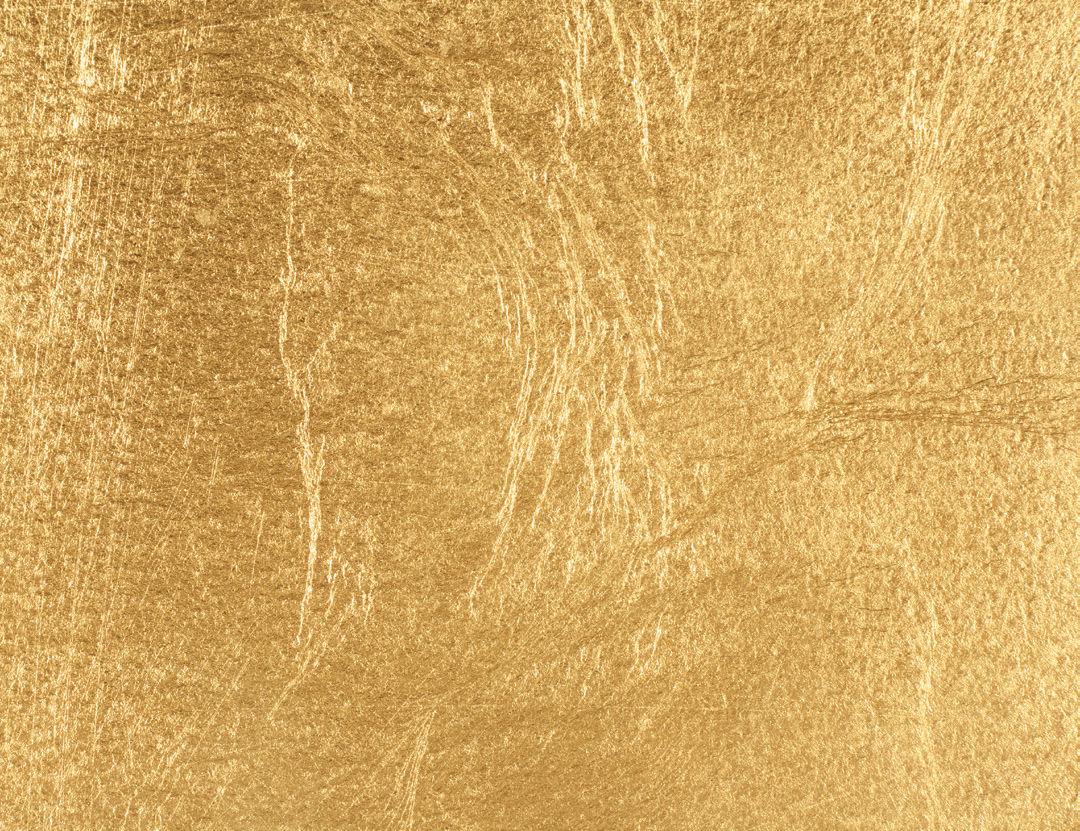
Our licensed, professional pet travel guardians know what it takes to safely and comfortably deliver your Cavalier or other breed to where it needs to go.

BEST IN SHOW READERS: enjoy an exclusive discount of $50 off a domestic U.S. transport, or $100 off any other transport + FREE travel insurance valued at up to $197.



THE PEKIGNESE · HISTORY IN ENGLAND
★ ★ ★ ★ ★
BOOK TODAY AT: SIGNATUREPETTRANSPORT.COM/BIS
Signature Pet Transport Owner Christian Diaz with “Romeo” CH Kell’s Besame Mucho
Is there anything you wish judges understood better when it comes to judging Junior Showmanship?
I wish judges in Junior Showmanship would give more consideration to the conditioning of the dog presented to them in the juniors category. In many of my breeds, conditioning is a significant factor in their presentation, and I often see juniors being rewarded for presenting dogs that are under-groomed. Conversely, I also see juniors with beautifully conditioned dogs being overlooked entirely.
Junior handlers are the future of the sport. Do you feel that you and other juniors are generally treated with the respect you deserve to keep you inspired in the sport?
There will always be those who dismiss or refuse to support juniors. I’ve encountered a few gruff and unkind individuals before finding caring and encouraging people who are ready to share their
knowledge with the next generation. However, I do feel that some exhibitors treat juniors more as a nuisance than the future of this sport.
Do you have any pastimes outside the world of dogs?
I enjoy swimming and photography when I’m not showing dogs. I’ve been involved in competitive swimming since I was five. Although I can’t practice as much as I used to, I still enjoy competing with my friends during the summer. As for photography, I primarily shoot pet dogs, but I’ve also done a lot of portraits for covers and ads in show magazines.
What are your personal future goals in the world of dogs?
Idreamofwinningabreedatoneofmybreednational specialties or at the Montgomery County Kennel Club someday. Also, breeding my first bred-by champion is a significant goal of mine.

BEST IN SHOW MAGAZINE 124 INTERVIEW WITH JUNIOR HANDLER





St. Louis Cluster
RINGSIDE click

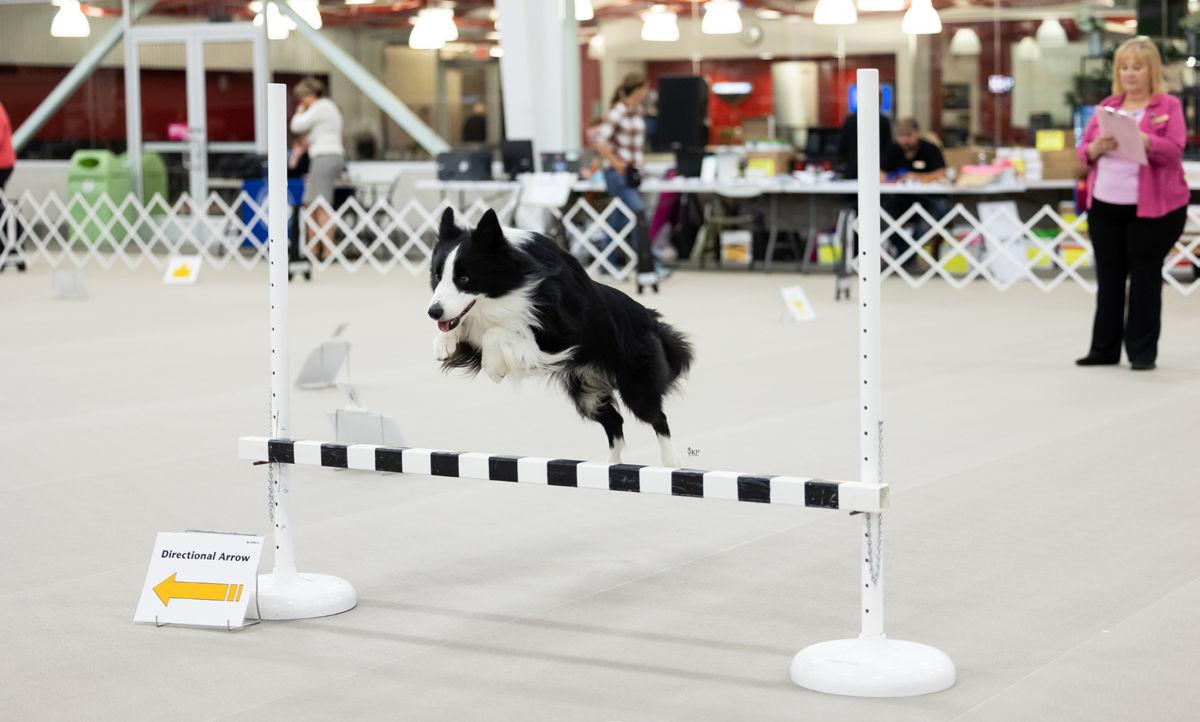



1-5, 2023
June




BEST IN SHOW MAGAZINE 130 RINGSIDE CLICK • ST. LOUIS





BEST IN SHOW MAGAZINE 131 RINGSIDE CLICK • ST. LOUIS
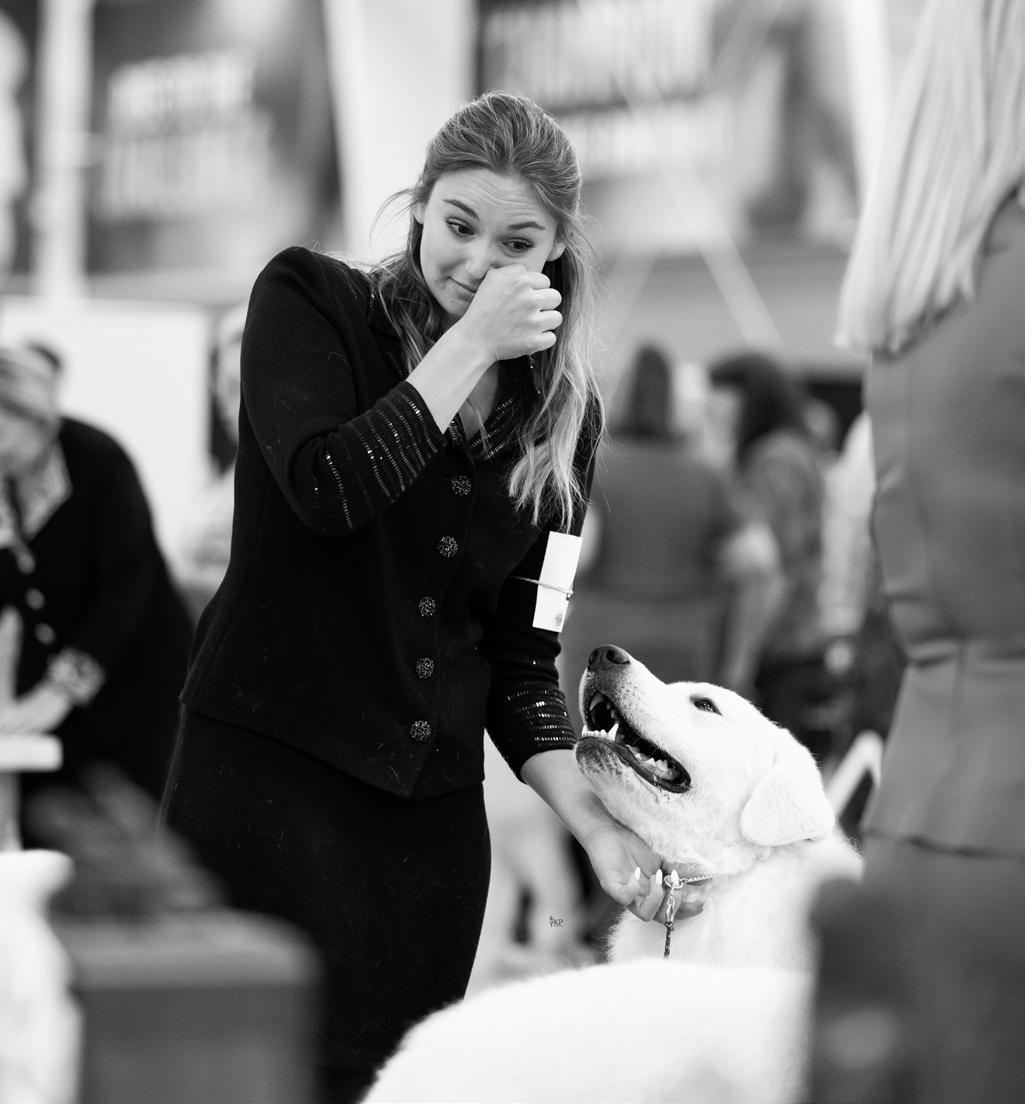

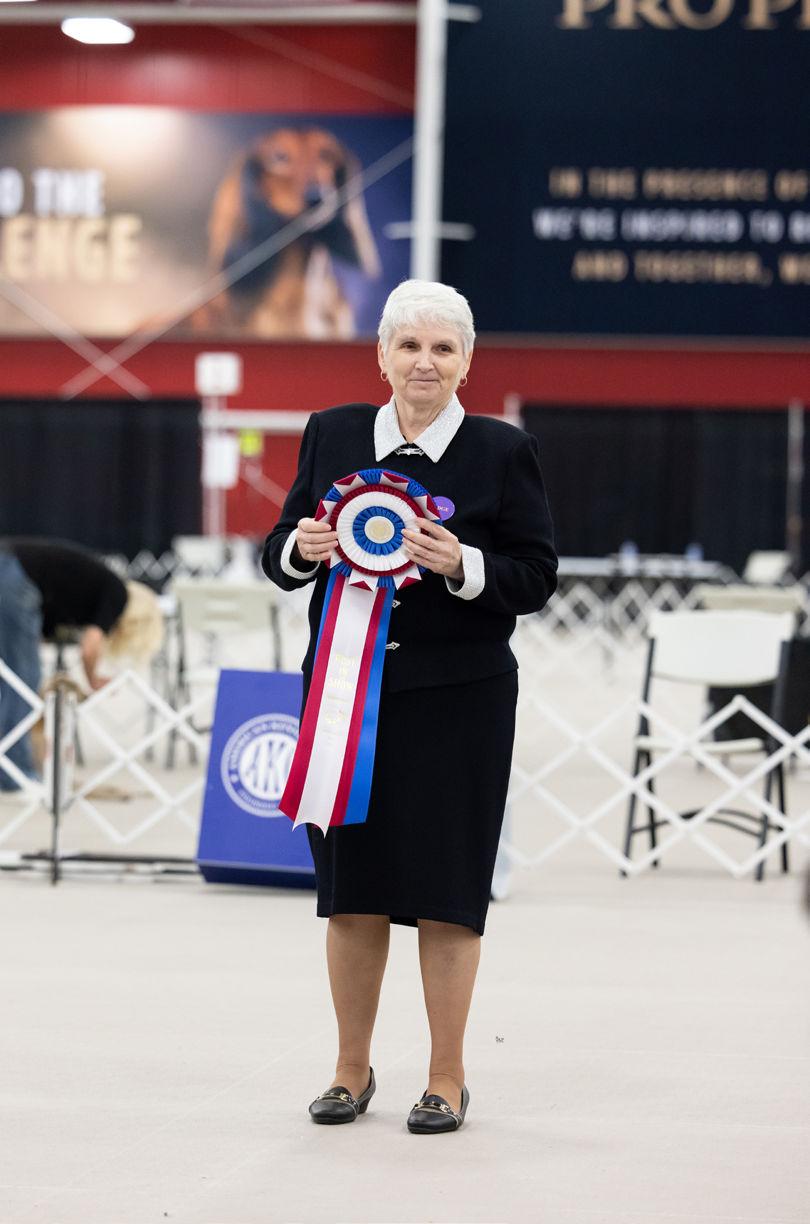
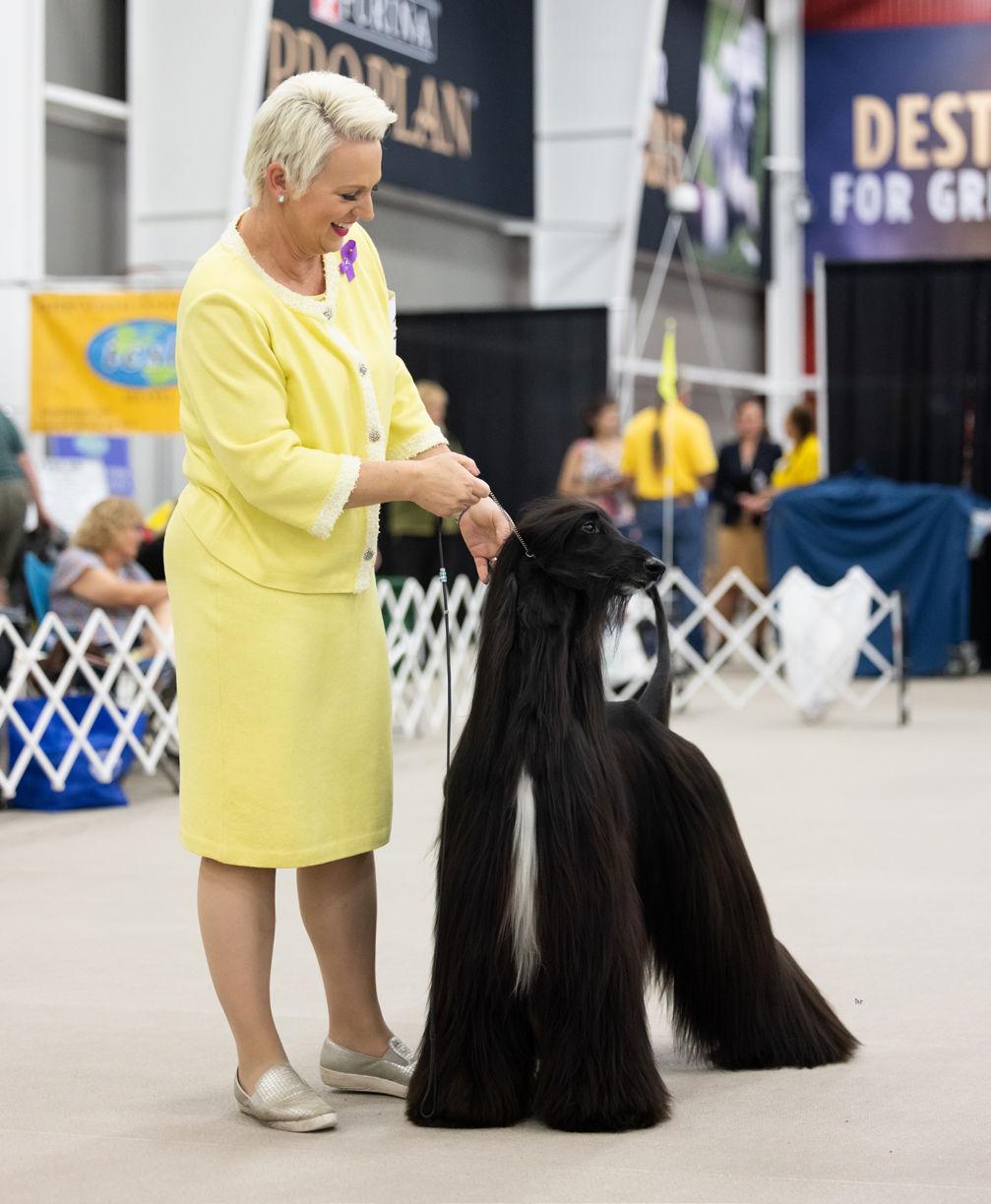
BEST IN SHOW MAGAZINE 132 RINGSIDE CLICK • ST. LOUIS
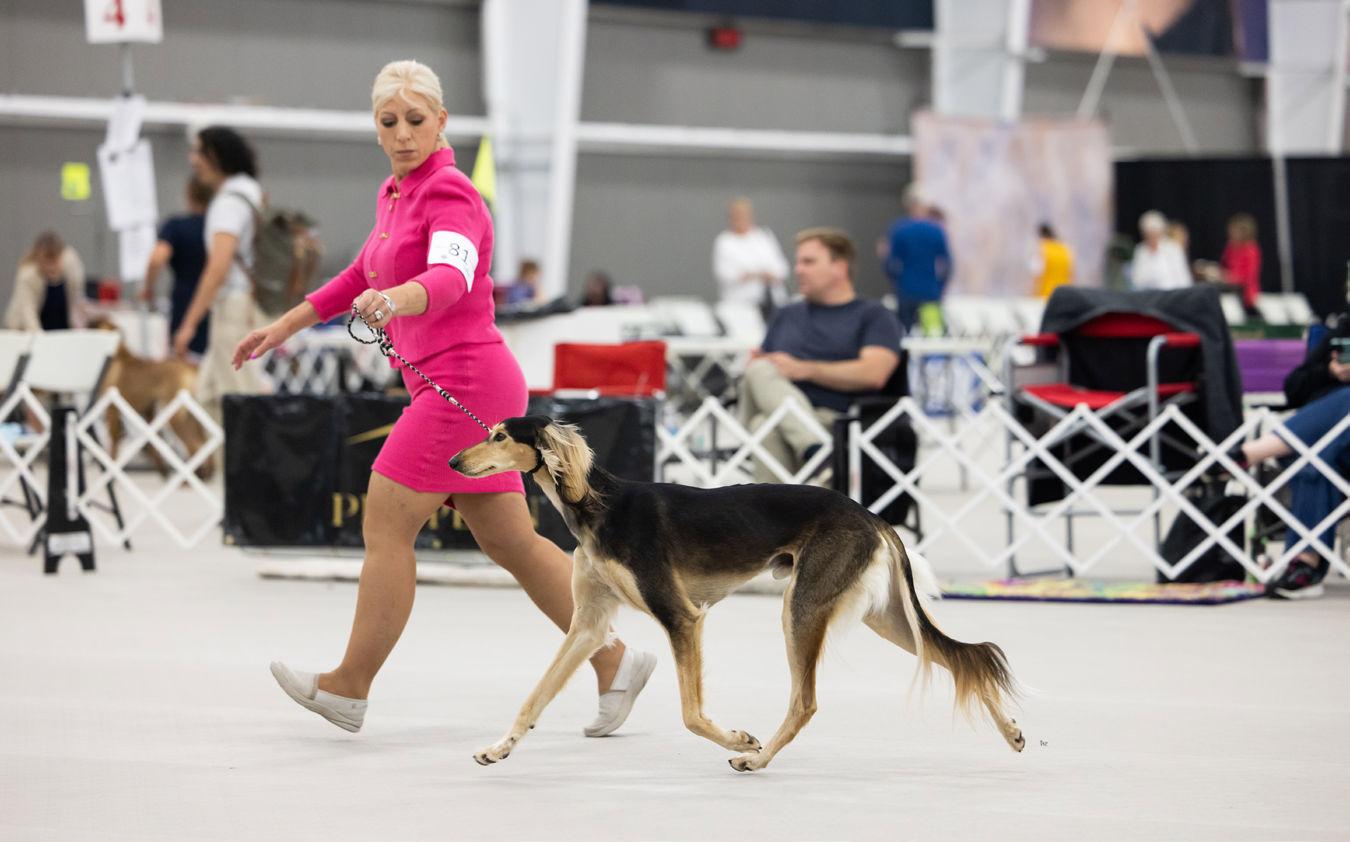
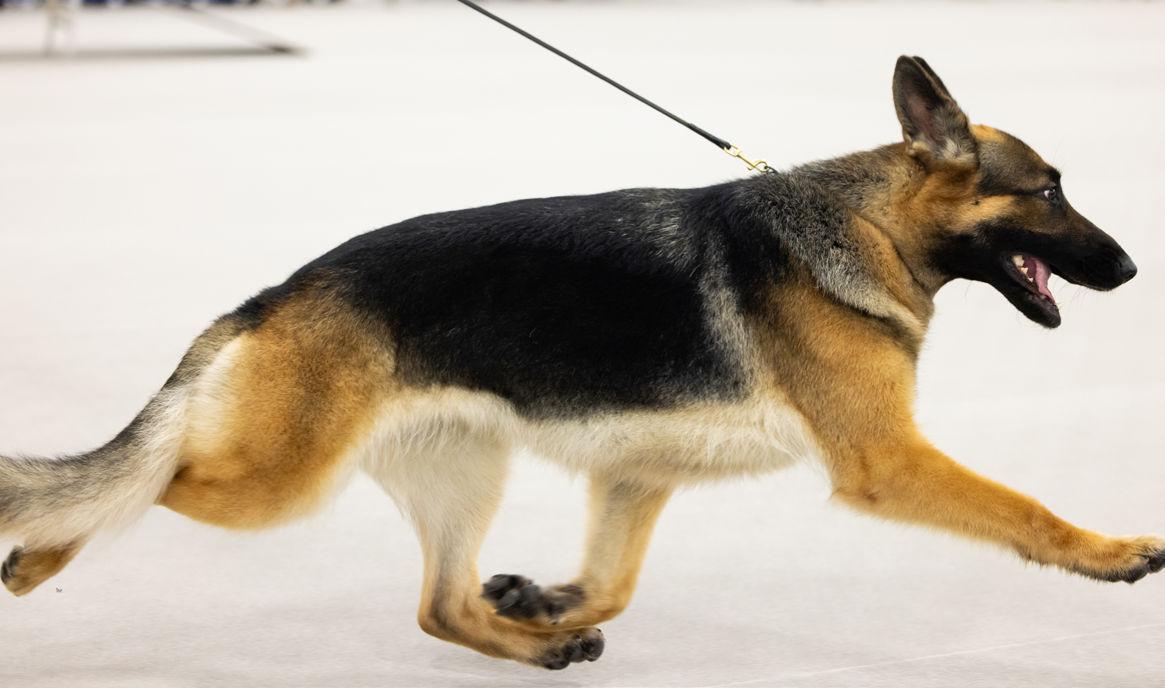
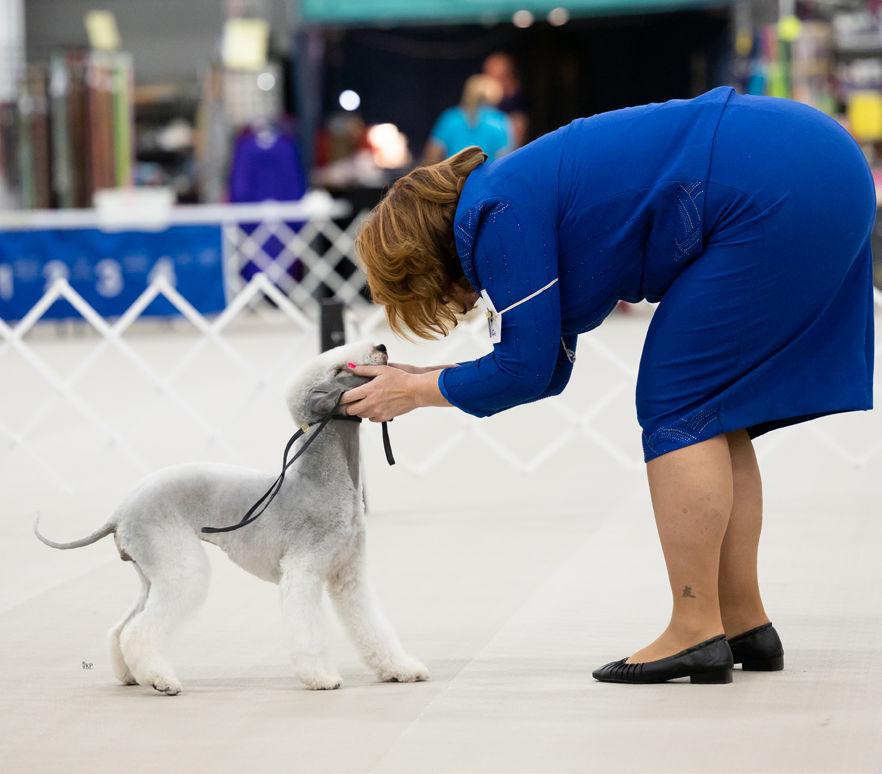
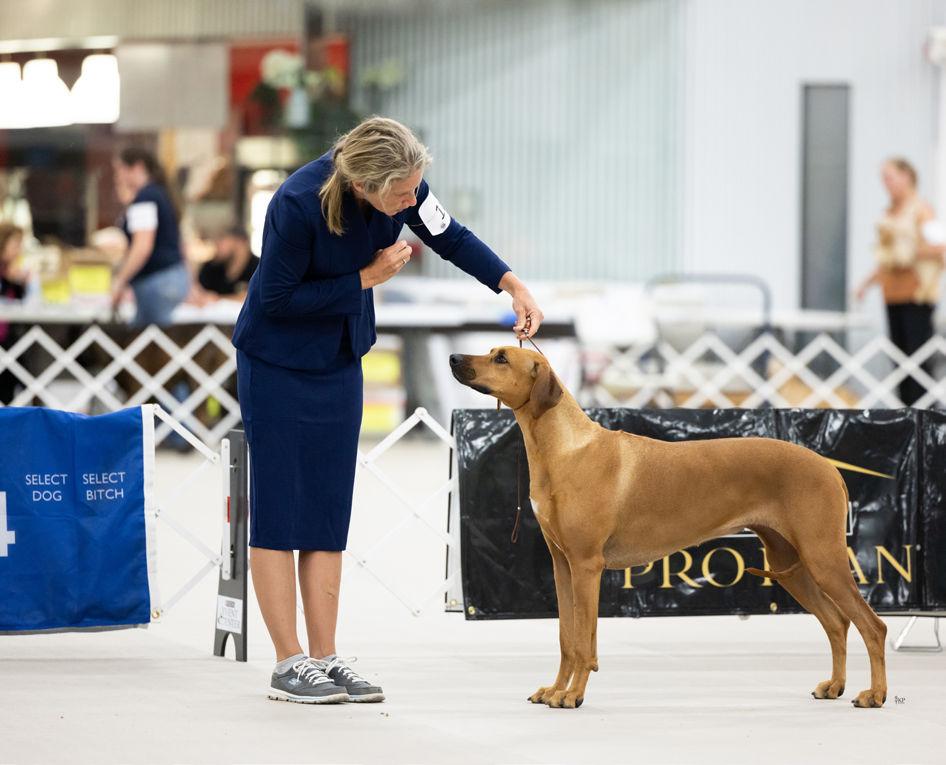
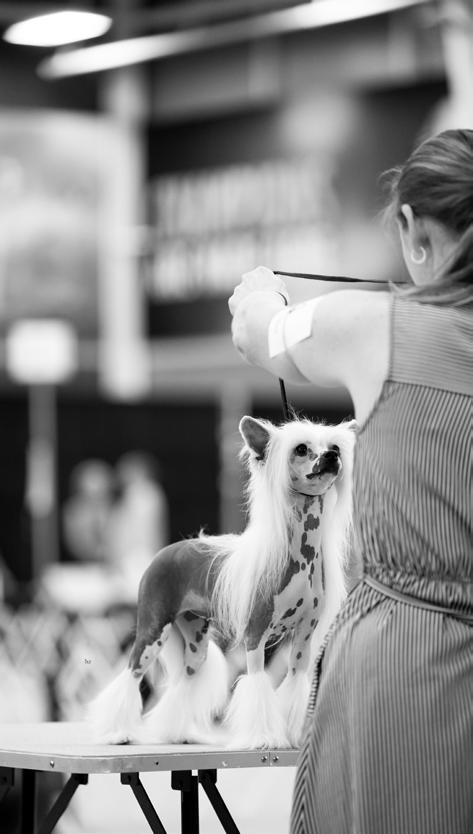

BEST IN SHOW MAGAZINE 133 RINGSIDE CLICK • ST. LOUIS



BEST IN SHOW MAGAZINE 136
TRAVEL TIPS
SANTA BARBARA, CA
THE JEWEL OF THE AMERICA RIVIERA
Bathed in radiant sunshine and caressed by cool Pacific breezes, Santa Barbara is a city where natural beauty, a rich cultural history, and a vibrant arts scene combine in exquisite harmony. Known as the “American Riviera,” Santa Barbara is nestled between the shimmering Pacific coastline and the rugged Santa Ynez Mountains, offering a kaleidoscope of experiences that continually enthrall visitors and locals alike.

Natural Wonders

The city’s setting alone is reason enough to visit. Santa Barbara is home to some of the most breathtaking beaches in California, where visitors can bask in the goldensun,swimintheazurewaters,ortakealeisurely stroll along the picturesque shoreline. East Beach, Butterfly Beach, and Leadbetter Beach are among the local favorites.
But Santa Barbara isn’t just about the beaches. The city is a gateway to the sprawling Los Padres National Forest, a hiker’s paradise with trails that offer stunning panoramic views of the city and the Pacific Ocean. Moreover, the proximity to the Santa Ynez Mountains provides ample opportunities for outdoor activities such as hiking, biking, and horseback riding.
Architectural Splendor
One cannot talk about Santa Barbara without mentioningitsdistinctiveSpanishcolonialarchitecture. The cityscape is marked by whitewashed buildings with red-tile roofs, most notably epitomized in the Santa Barbara County Courthouse, a historical landmark that offers breathtaking views from its clock tower.
The Mission Santa Barbara, known as the ‘Queen of the Missions,’ is another architectural gem. Founded in 1786,itstillfunctionsasachurchandaculturalheritage site, showcasing the city’s deep roots in California’s mission history.
Arts and Culture
Santa Barbara has a flourishing arts scene, boasting a broad array of galleries, museums, and performance venues. The Santa Barbara Museum of Art houses a
remarkablecollectionofancientthroughcontemporary works, while the Museum of Contemporary Art Santa Barbara focuses on the art of our times.
The city’s love for performing arts shines brightly at the historic Arlington Theatre, which hosts film screenings, concerts, and ballet performances. The annual Santa BarbaraInternationalFilmFestivaldrawsfilmmakersand cinemaenthusiastsfromaroundtheworld,transforming the city into a hotspot of cinematic celebration.
Food and Wine
SantaBarbara’sculinarysceneisadelightfulmixoffresh local produce, seafood, and world-class wines. The city is attheheartoftheSantaBarbarawinecountry,renowned foritsPinotNoirandChardonnay.Wineloverscanenjoy tours and tastings at numerous vineyards in the region.
The city’s dining scene reflects a blend of Californian cuisine with Mexican, Mediterranean, and Asian influences.Fromupscalefinediningtocasualfoodjoints, there’s something for everyone.
A Sustainable City
SantaBarbarahasastrongcommitmenttosustainability, from its well-managed parks to its environmentallyfriendly urban design. The city prioritizes clean energy, waste reduction, and sustainable transportation, making it an exemplary model for green living.
In conclusion, Santa Barbara, CA, offers a rich, diverse, and sustainable experience, whether you’re seeking natural beauty, cultural heritage, culinary delights, or an idyllic retreat. Its blend of laid-back charm and vibrancymakesitacompellingdestination,ajewelofthe American Riviera.
TRAVEL TIPS · SANTA BARBARA
 Alessia Patisserie & Cafe
Alessia Patisserie & Cafe
www.alessiapatisserie.com
Welcome to Alessia Patisserie & Cafe, where the artistry of European pastry technique blends harmoniously with the exquisite flavors of the Central Coast. Nestled in the heart of your beloved neighborhood, we offer a relaxed and inviting atmosphere that feels like home. Our primary goal is to create an extraordinary culinary journeyfortheSantaBarbaracommunity,utilizingonly the freshest and sustainable ingredients available. With an unwavering commitment to exceptional quality, we strive to provide outstanding customer service to our cherished guests. Furthermore, we are dedicated to fostering an engaging and fulfilling environment for our valued employees, ensuring a rewarding culture within our establishment.
Renaud’s Patisserie
www.renaudsbistro.com
Experience the delight of Renaud’s handcrafted breakfast pastries, freshly made each day. These unique creations are a true testament to our passion for artisanal baking. Whether you choose to indulge in a morning or midday treat, allow yourself to savor a taste ofParisrighthere,withouttheneedforatriptoFrance!


BEST IN SHOW MAGAZINE 140 THE PEKIGNESE · HISTORY IN ENGLAND
TRAVEL TIPS · SANTA BARBARA

Public Market Santa Barbara
www.sbpublicmarket.com
Taste an amazing array of handcrafted culinary delights at the Santa Barbara Public Market. The Public Market is located in a bright and modern LEED Gold certified space in the thriving performing and cultural arts district of downtown Santa Barbara. It is a bustling food hall that showcases the incomparable bounty of California’s Central Coast since 2014. You’ll find a wide selection of artisanal food and drinks to please any palate, conveniently located under one roof. Whether you’re in the mood for sweet or savory, light or hearty, the Public Market is brimming with tempting choices.

Carlitos Café y Cantina
www.carlitos.com
Immerse yourself in the vibrant flavors of Mexico as you indulge in our inspired and authentic cuisine, accompanied by our renowned, award-winning Margaritas. Conveniently located across from the iconic Arlington Theater in downtown Santa Barbara, our restaurant invites you to relax and unwind in our sun-filled patio adorned with colorful umbrellas and a charming bubbling fountain. Inside, our dining room offers delightful views and a well-stocked Cantina boasting an exceptional selection of 100% Blue Agave tequilas. Since 1978, we have remained proudly independent and locally owned, dedicated to providing a memorable dining experience for our valued guests.

 Toma Restaurant & Bar
Toma Restaurant & Bar
www.tomarestaurant.com
Toma Restaurant on the Santa Barbara waterfront is renowned for its rustic coastal cuisine, specializing in Italian-inspired dishes. Co-owned by Julian Sanders, a third-generation Santa Barbaran and certified sommelier,alongwithSamGrant,anexperiencedfrontof-house professional and accomplished restaurateur from San Diego. Since 2013, Toma Restaurant & Bar has been captivating guests with its unique culinary offerings. Located on West Cabrillo Boulevard, this charming establishment resides in a historic building with a romantic waterfront facade. With over 70 years of combined experience in the culinary industry, Toma offers a pinnacle of Santa Barbara hospitality, inviting you to experience an unforgettable dining experience.

TRAVEL TIPS · SANTA BARBARA

The Lark www.thelarksb.com
Named after the elegant Pullman train that once graced Santa Barbara’s Southern Pacific Railroad from 1910 to 1968, The Lark resides in the vibrant Funk Zone, an art-filled district near the Waterfront in downtown Santa Barbara. Embracing the essence of our coastal location, our menus showcase locally sourced and responsibly grown ingredients, thoughtfully selected from the abundant Central Coast. Each dish is a work of art, expertly crafted to captivate the palate with bold flavors while honoring the unique climate, geography, and inspiration of Santa Barbara, affectionately known as the American Riviera. Our space embodies an urban aesthetic, blending vintage and repurposed materials to create an atmosphere that exudes sophistication with a casual charm, paying homage to the neighborhood’s industrial heritage. Adorned with original lighting, handmade furniture, and a communal table crafted from live-edge wood resting atop vintage radiators, our warm and inviting setting invites you to unwind and savor the experience. At our well-stocked bar, you’ll find a selection of classic and modern craft cocktails, artfully created using artisan spirits, mixers, and seasonal fruits and vegetables. Complementing our culinary offerings, our wine list showcases exceptional producers from Santa Barbara County and beyond, spotlighting the talents of small local winemakers and artisans.

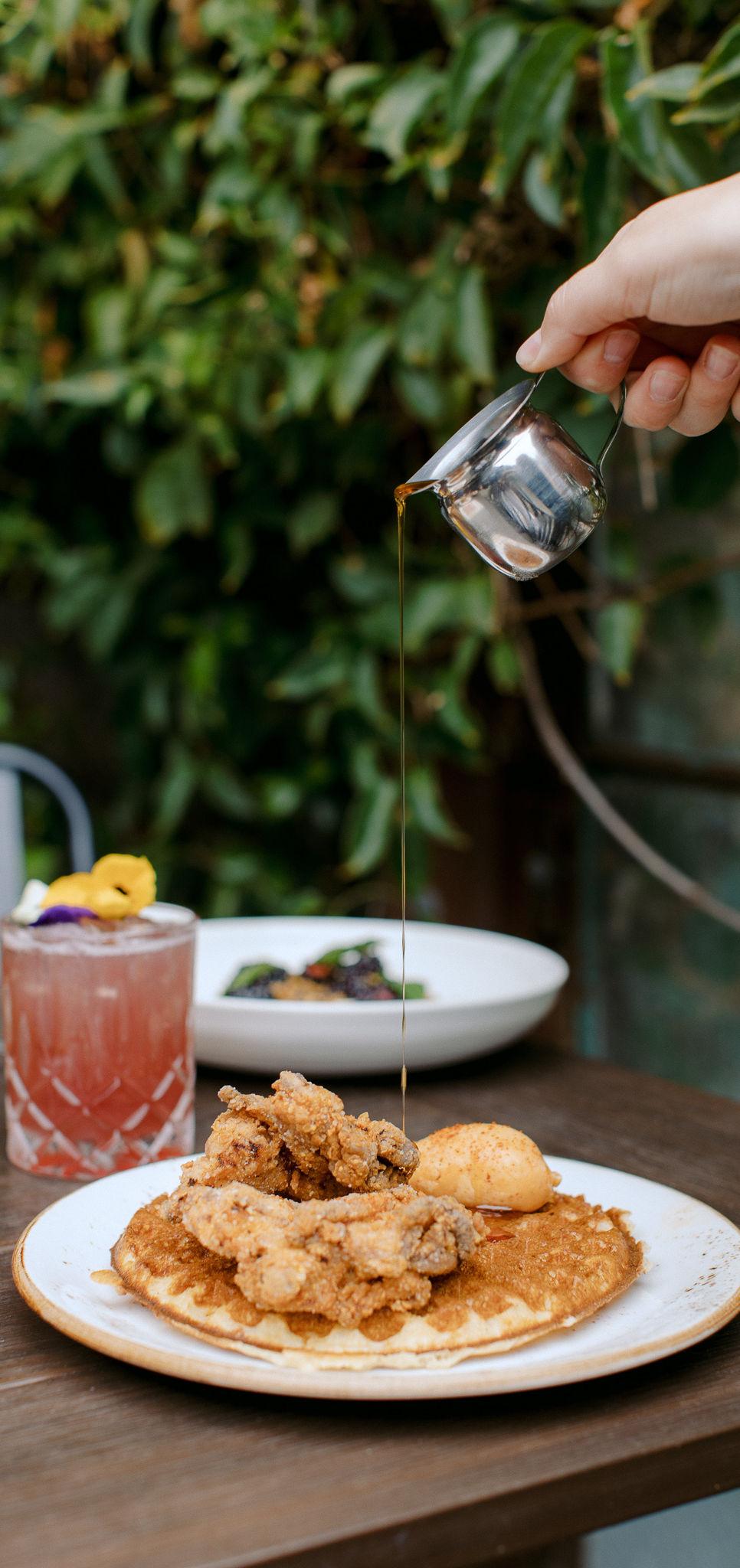
BEST IN SHOW MAGAZINE 144 THE PEKIGNESE · HISTORY IN ENGLAND
TRAVEL TIPS ·
SANTA BARBARA

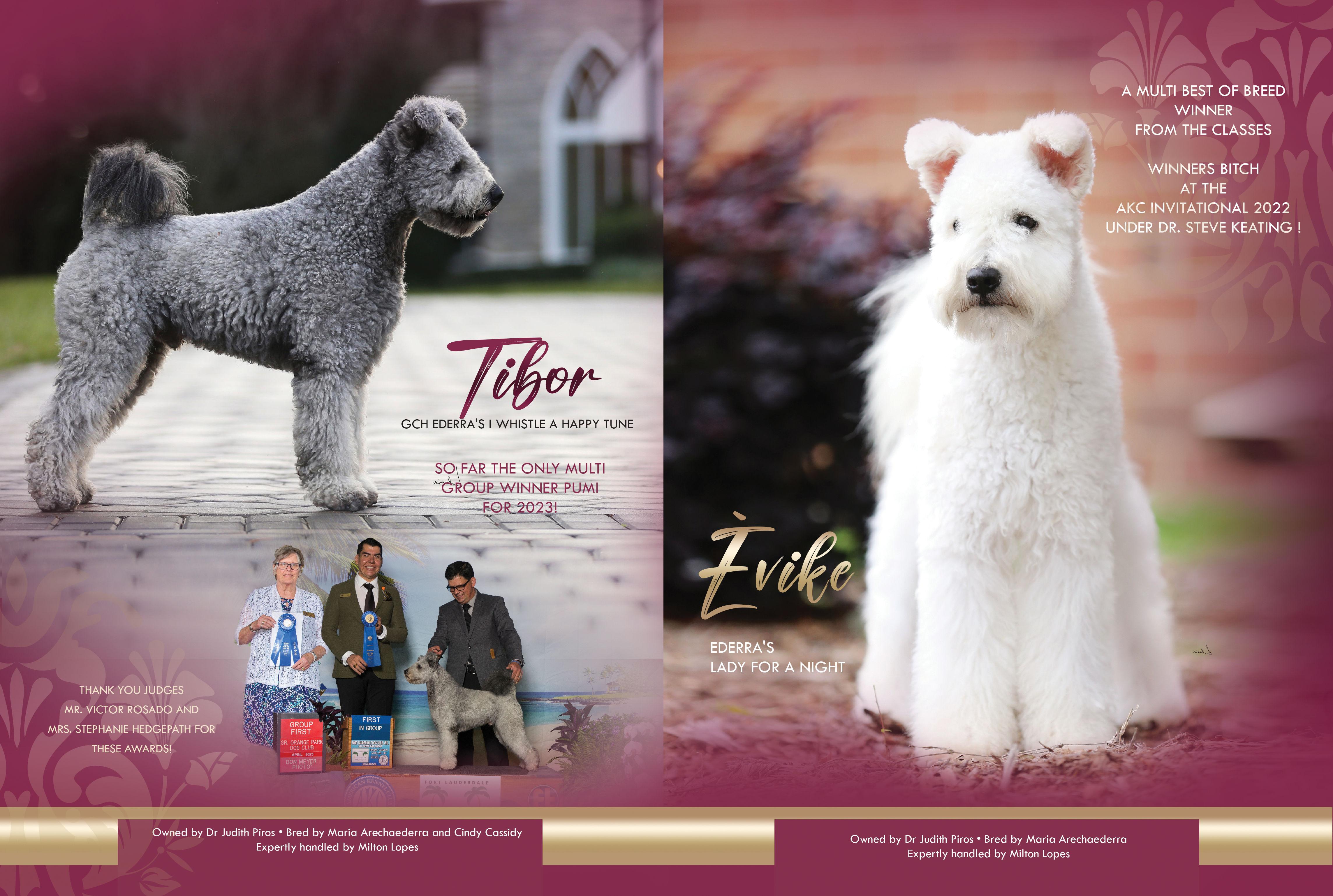










































































































 BELTRÁN HORTIGÜELA ALONSO
BELTRÁN HORTIGÜELA ALONSO





























































































































 Toma Restaurant & Bar
Toma Restaurant & Bar




